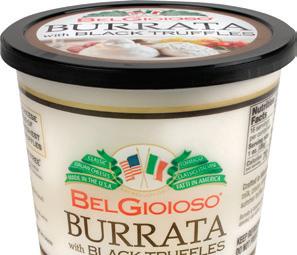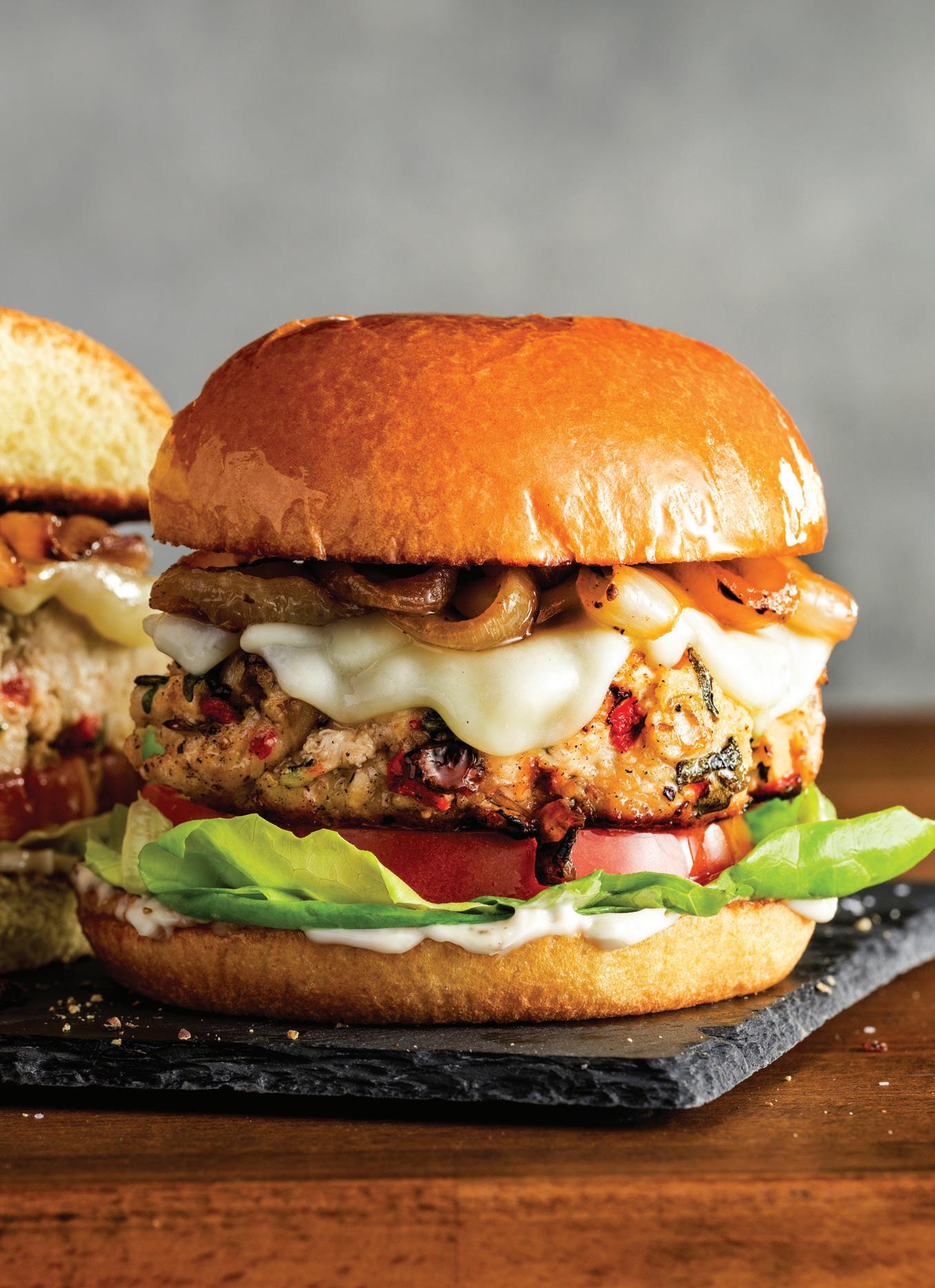WOMEN OF CHICKENN PICKLE
THE VIBRANT BRUNCH
CANTINA LAREDO’S RISE
BREWING UP CHANGE IN BARS


THE VIBRANT BRUNCH
BREWING UP CHANGE IN BARS

THE LEGACY CHAIN’S MULTI-YEAR TURNAROUND PLAY IS FINALLY PAYING OFF


ghirardelli.com/professional


CHILI’S RISE IS A BLUEPRINT FOR MODERN CASUAL DINING SUCCESS—ONE THAT MARRIES OLD-SCHOOL HOSPITALITY WITH MODERN TECH EFFICIENCIES AND TEAM EMPOWERMENT.
Following a massive multi-year turnaround play and several viral marketing moments, the 50-yearold legacy chain and its Baby Back Ribs are back, better than ever, and here to stay, thanks to turnaround architect and Brinker International CEO Kevin Hochman and his team.
A sneak preview and handy guide to the must-see sessions at the Western Hemisphere’s largest foodservice event this month.
CHEFS & INGREDIENTS

Chef Paul Wahlberg focuses on infusing family memories and a passion for hospitality at Wahlburgers and his first solo venture, Alma Nove.
Miami’s brunch scene blends culinary innovation, wellness culture, and elevated experiences at hotspots like R House, Sesame Bakery, Campo, and more.
Organizations are stepping up to tackle the biggest issues in the beverage world, like providing mental health support and career growth opportunities for bar staff.

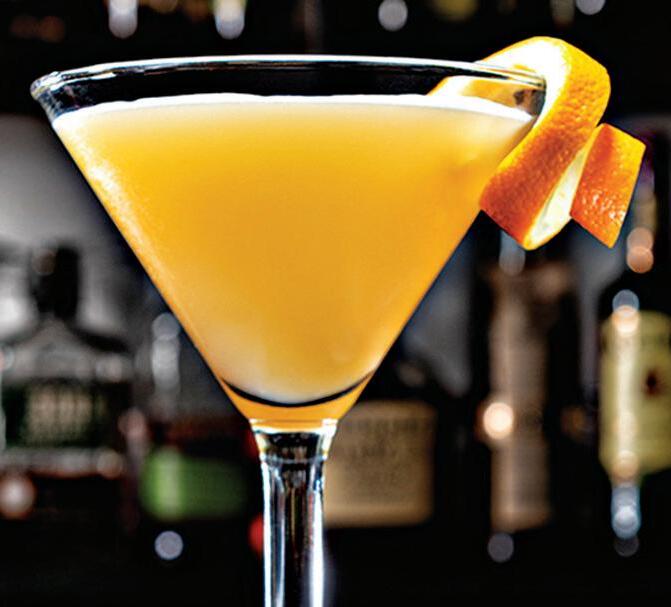
53 Cantina Laredo’s Flavorful Future
7 Cupcakes and Craft Cocktails
EPIC Brands is shaking up the dessert scene with an unapologetically bold concept, BITE ME Cupcakery, blending specialty cocktails, bubble tea, barista drinks, and iconic cupcakes.
8 Egg-flation
As egg prices have shot up, traffic at breakfast chains have declined. Here are a few of the brands that are underperforming and outperforming.
BACK OF HOUSE
51 The Chicken N Pickle Play
WOMEN IN LEADERSHIP
The 11-unit eatertainment concept’s team of dynamic women leaders are proving that community, inclusivity, and great food can all come together on the pickleball court.
ON THE RISE As the 41-yearold brand continues to grow, Cantina Laredo digs into non-traditional locations for airport diners who want to expand their palates.
BEHIND THE SCENES As senior VP of technology and digital strategy at Bar Louie, Roberta Frierson reveals how she is utilizing data, AI, and authentic leadership to steer the brand into the future, plus her advice for aspiring leaders.
4 Editor’s Welcome 55 Advertising Index
EDITORIAL
VP, EDITORIAL DIRECTOR: FOOD, RETAIL, & HOSPITALITY Danny Klein dklein@wtwhmedia.com
FSR EDITOR Callie Evergreen cevergreen@wtwhmedia.com
QSR EDITOR
Ben Coley bcoley@wtwhmedia.com
ASSOCIATE EDITOR
Sam Danley sdanley@wtwhmedia.com
ASSOCIATE EDITOR Satyne Doner sdoner@wtwhmedia.com
SVP, AUDIENCE GROWTH Greg Sanders gsanders@wtwhmedia.com
CONTENT STUDIO
VP, CONTENT STUDIO Peggy Carouthers pcarouthers@wtwhmedia.com
WRITER, CONTENT STUDIO Drew Filipski dfilipski@wtwhmedia.com
WRITER, CONTENT STUDIO Ya’el McLoud ymcloud@wtwhmedia.com
WRITER, CONTENT STUDIO Abby Winterburn awinterburn@wtwhmedia.com
DESIGN
ART DIRECTOR Erica Naftolowitz enaftolowitz@wtwhmedia.com

2024 REGIONAL GOLD AWARD: PUBLICATION DESIGN
2023 NATIONAL GOLD AWARDS: FRONT COVER (PHOTO), BEST USE OF COLOR NATIONAL SILVER AWARD: BEST USE OF TYPOGRAPHY
2016 MAGAZINE OF THE YEAR TOP 10 AWARD
2015 MAGAZINE OF THE YEAR
FOLIO: Eddie Awards
2022 BEST FULL ISSUE HOSPITALITY
2022 BEST SPONSORED CONTENT
2021 BEST PROFILE FEATURE
2017 BEST FULL ISSUE FOOD & BEVERAGE
2013 BEST DESIGN, NEW MAGAZINE
2013 BEST FULL ISSUE, FOOD SERVICE/HOTEL
® SALES & BUSINESS DEVELOPMENT
VP SALES: FOOD, RETAIL, & HOSPITALITY
Lindsay Buck lbuck@wtwhmedia.com
VP, BUSINESS DEVELOPMENT
Eugene Drezner 919-945-0705 edrezner@wtwhmedia.com
NATIONAL SALES DIRECTOR Amber Dobsovic 757-637-8673 adobsovic@wtwhmedia.com
NATIONAL SALES DIRECTOR Edward Richards 216-956-6636 erichards@wtwhmedia.com
NATIONAL SALES MANAGER Tom Boyles 662-607-5249 tboyles@wtwhmedia.com
CUSTOMER SERVICE REPRESENTATIVE Tracy Doubts 919-945-0704 tdoubts@wtwhmedia.com
ADMINISTRATION
CEO Matt Logan mlogan@wtwhmedia.com 919-945-0704 www.fsrmagazine.com/subscribe
FSR is provided without charge upon request to individuals residing in the U.S. who meet subscription criteria as set forth by the publisher.
REPRINTS
THE YGS GROUP
800-290-5460 fax: 717-825-2150 fsrmagazine@theygsgroup.com
Sponsored content in this magazine is provided to the represented company for a fee. Such content is written to be informational and nonpromotional. Comments welcomed at sponsoredcontent@ fsrmagazine.com.
FOUNDER Webb C. Howell
LinkedIn.com/company/ FSR-magazine
Instagram.com/FSRmagazine Facebook.com/FSRmag


IT’S ALWAYS SOMETHING, ISN’T IT? From a pandemic to sky-high egg prices to the threat of tariffs, and then you add all that to general economic uncertainty and consumer anxiety … We are indeed living in tumultuous times, and with razor-thin profit margins, restaurants aren’t insulated—at all. And yet, across all segments of full-service, we see leaders are coming together to share their concerns, challenges, and best practices. “A rising tide lifts all boats.”
A perfect illustration of this: I attended the James Beard Foundation’s Chef Action Summit in early April in Asheville, North Carolina, where about 300 independent restaurant chefs and operators gathered to hear from experts on pressing legislative and operational priorities, including how to access state resources, support immigrant workers, and prepare for financial challenges in times of crisis. While there were so many helpful tidbits of info for attendees, my main takeaway was recognizing our power and value as a collective voice. As we navigate the hard times ahead of us, the importance of taking care of one another was deeply emphasized—and showcased in the example of Hurricane Helene’s impact on Asheville and their restaurant scene. Local restaurateurs rallied together and helped each other in any way they could, from figuring out how to source clean water to feed the community to helping with clean-up efforts. The comeback of the town is incredible to witness, and I’d encourage everyone to visit and see it for themselves if possible.
Speaking of comebacks, let’s talk about Chili’s for a moment—our cover story this month. Despite news across the broader casual-dining restaurant segment of numerous bankruptcies, layoffs, and closures, it’s inspiring to get to tell the stories of success when brands get it right—and there’s no better example than the multi-year turnaround of Chili’s, led by Brinker International CEO Kevin Hochman and his team. Flip to PAGE 30 to read more.
Another success story we’re highlighting is the up-and-coming brand Chicken N Pickle. The eatertainment concept’s team of dynamic women leaders are proving that community, inclusivity, and great food can all come together on the pickleball court (PAGE 51).
On PAGE 56, Roberta Frierson shows how she’s leading with data and empathy at Bar Louie, and on PAGE 23, you can read how organizations are stepping up to tackle the biggest issues in the beverage world to help bartenders and hospitality professionals build sustainable careers, all while fostering a more equitable and supportive industry.
Joy is so central to our industry, and it’s important to remember to celebrate the wins and lift each other up in community as much as we can, all while continuing to fight for progressive change for restaurants. If we can do that, I believe we can endure anything.

Callie Evergreen EDITOR

87% of consumers are interested in seeing more trends at restaurants in 2025


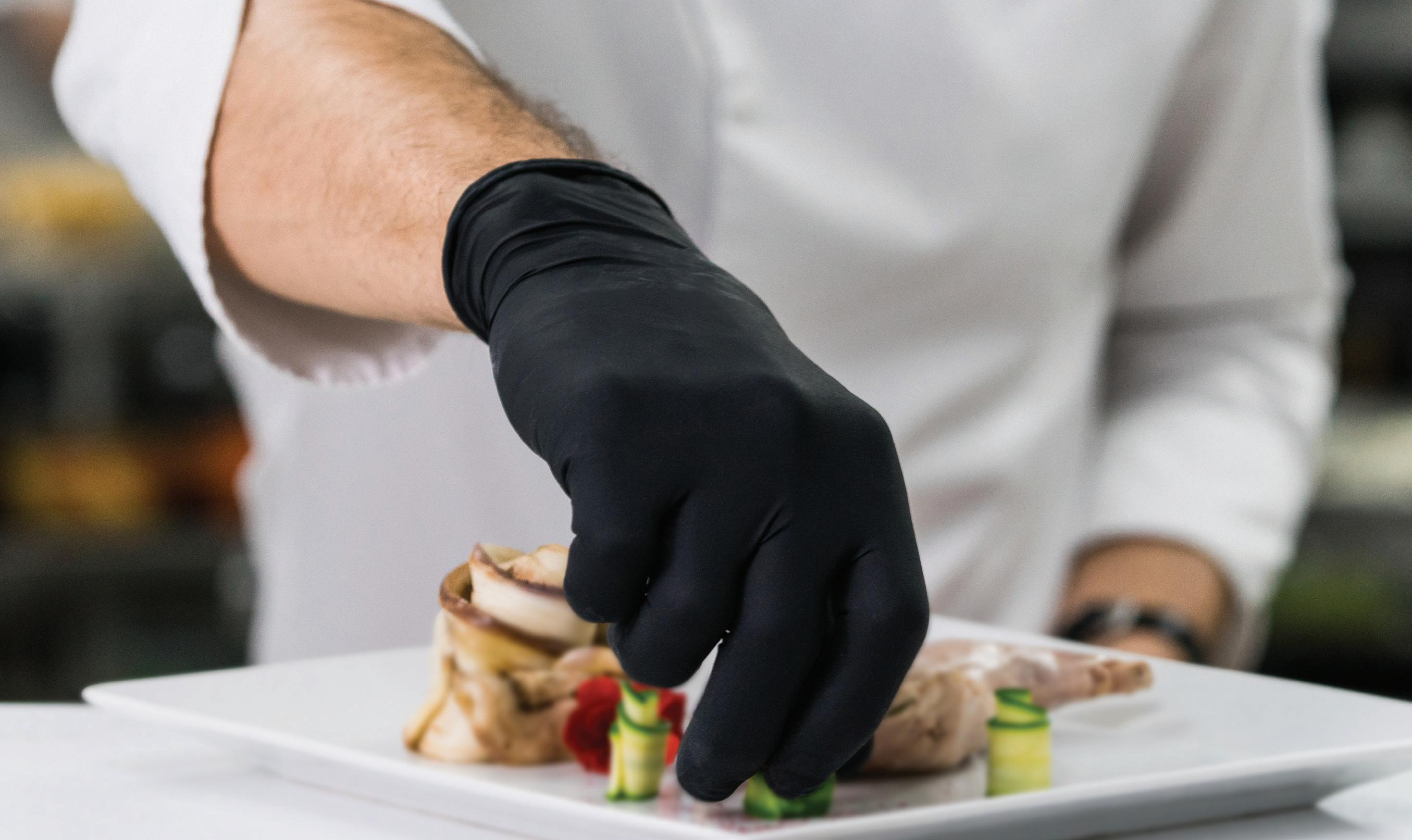


BITE ME Cupcakery blends specialty cocktails, bubble tea, and barista drinks with iconic cupcakes.

BY CALLIE EVERGREEN
EPIC Brands is shaking up the dessert scene with an unapologetically bold concept, BITE ME Cupcakery.
AGAVE AND RYE FOUNDER YAVONNE SARBER is bringing her signature flair and eye for innovation into a new arena with the recent launch of her latest concept, BITE ME Cupcakery, an upscale dessert and cocktail bar that opened late March in Huntsville, Alabama. "I've always had
an obsession with cupcakeries—I just think it's such a canvas and there's so much opportunity to do art on it, which our brand loves," Sarber says.
Sarber's EPIC Brands portfolio, which is proudly 100 percent woman owned as of this year, also includes 18 Agave &
Rye restaurants; Cowboy Sally's and Loco Social which launched last year; and Son of a Butcher (sob) Steakhouse. BITE ME Cupcakery will be the restaurant group's 23rd store.
SOB Pastry Chef Cristine Muckenfuhs helped Sarber develop the recipes for BITE ME Cupcakery and is overseeing training for the new concept, which is starting out with 12 flavors of cupcakes with over-the-top flavors like Drama Queen, a lavender-lemon cupcake with a drippy pastel pink ombre buttercream crown; Nut Job, a chocolate chip cookie dough cupcake with Nutella buttercream and drizzle; and the signature BITE ME, a vanilla cupcake with half black, half white buttercream swirls and topped with a flavor pipette filled with raspberry syrup.
BITE ME will also serve craft cocktails, private-label wines with playful names such as Blush & Boujee and Rich B., bubble tea, and barista-made coffee, "because cupcakes deserve the perfect pairing." The storefront will seat 40 to 50 people, plus about 20 additional guests outdoors.

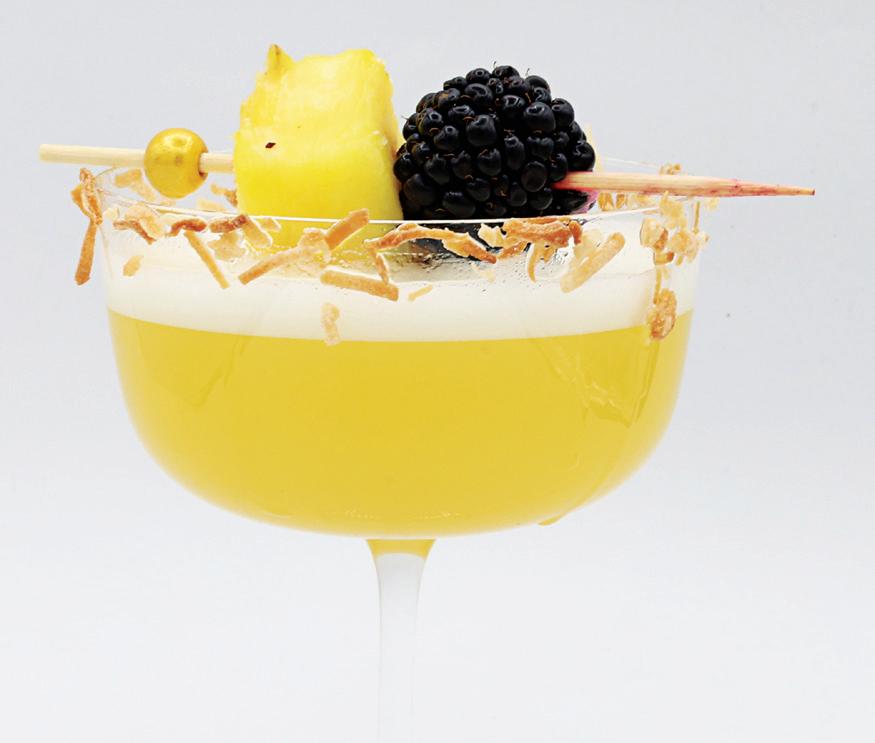
Despite consumers becoming more health-conscious overall, Sarber thinks people still love to indulge and treat themselves. Plus, it's easier for guests to justify buying a cupcake versus a whole cake, she says, especially when that cupcake is gourmet and uses the highest quality ingredients, and is priced relatively affordably at $6.50 a pop. "I think it's just a special thing that people can use to indulge, and it's still affordable."
All cupcakes will be baked onsite and flash frozen for BITE ME's local shipping program, which is set to expand nationally shortly after opening. Sarber expects the major-
ity of sales to come from shipping cupcakes versus dine-in. "I really want to go heavy on national shipping," she reiterates. "I think that's the majority of where our income is going to come from versus walk-ins. I think there's a big opportunity for backdoor sales with this."
The cupcakes and cheeky names are designed to be the perfect gifts for friends, family, and spouses— while still being appropriate for parents with kids to come in and comfortably order.
A few beverage offerings include the BITE ME Espresso Martini; the Pink Velvet with raspberry vodka, pomegranate syrup, and cream soda; and the Coconut Kiss with coconut rum, pineapple juice, cinnamon, and toasted coconut flakes.
The eventual goal is to expand the concept nationally, depending on how well it's received. "Once we start to scale, we'll see how well it does with the cocktail side of it and we'll make a decision if that's something that we'll do as we scale. But I have a feeling that it'll do pretty well," Sarber predicts.

That’s the title of a recent Placer.ai report, which found most breakfast chains were seeing visits decline as egg prices shot up due to the outbreak of bird flu. The average price per dozen was $2.99 in February 2024 versus $5.89 in February 2025, according to the Bureau of Labor Statistics—a nearly 97% increase. To offset the surge, several brands started charging customers extra for egg-based menu items, like Waffle House and Denny’s, which both added a 50-cent per egg surcharge. Though egg prices remain historically elevated, the most recent data at the end of March showed things improving a bit for breakfast-first chains as prices slightly declined. First Watch and Silver Diner are outperforming the broader category with positive year-over-year growth, which both pull from higher-income trade areas and notably did not implement egg surcharges.
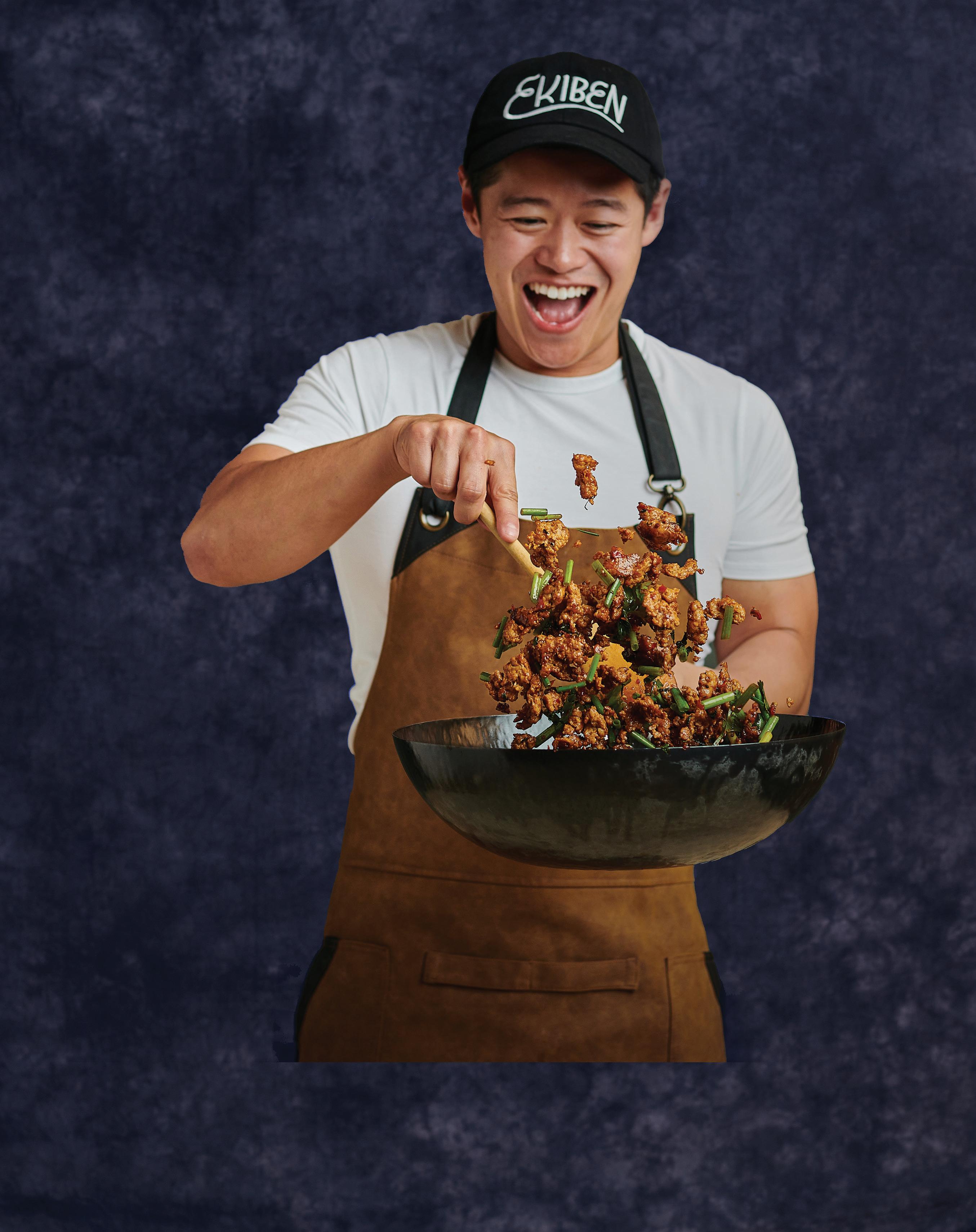


Co-Owner and Chef, Ekiben
McCormick Culinary can help save you time on the line, delivering consistent, vibrant flavors for your dishes. With 130+ years of expertise, our variety of blends, herbs, spices, and seasonings are crafted without compromise to offer quality you can trust in your back of house.




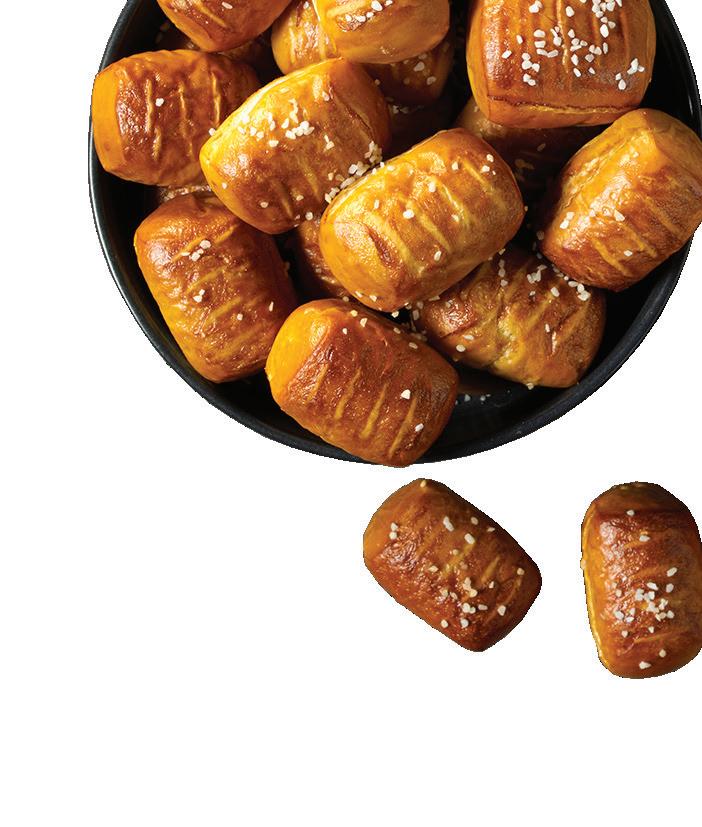

We provide the snacks and frozen treats that make memories in consumers’ minds. The ones associated with delight and good times. And they all come from one source.
Stop by booth #5607 at the National Restaurant Association Show for a free sample





MENTIONED IN THIS SECTION WAHLBURGERS • • R HOUSE • • SESAME BAKERY • • CAMPO


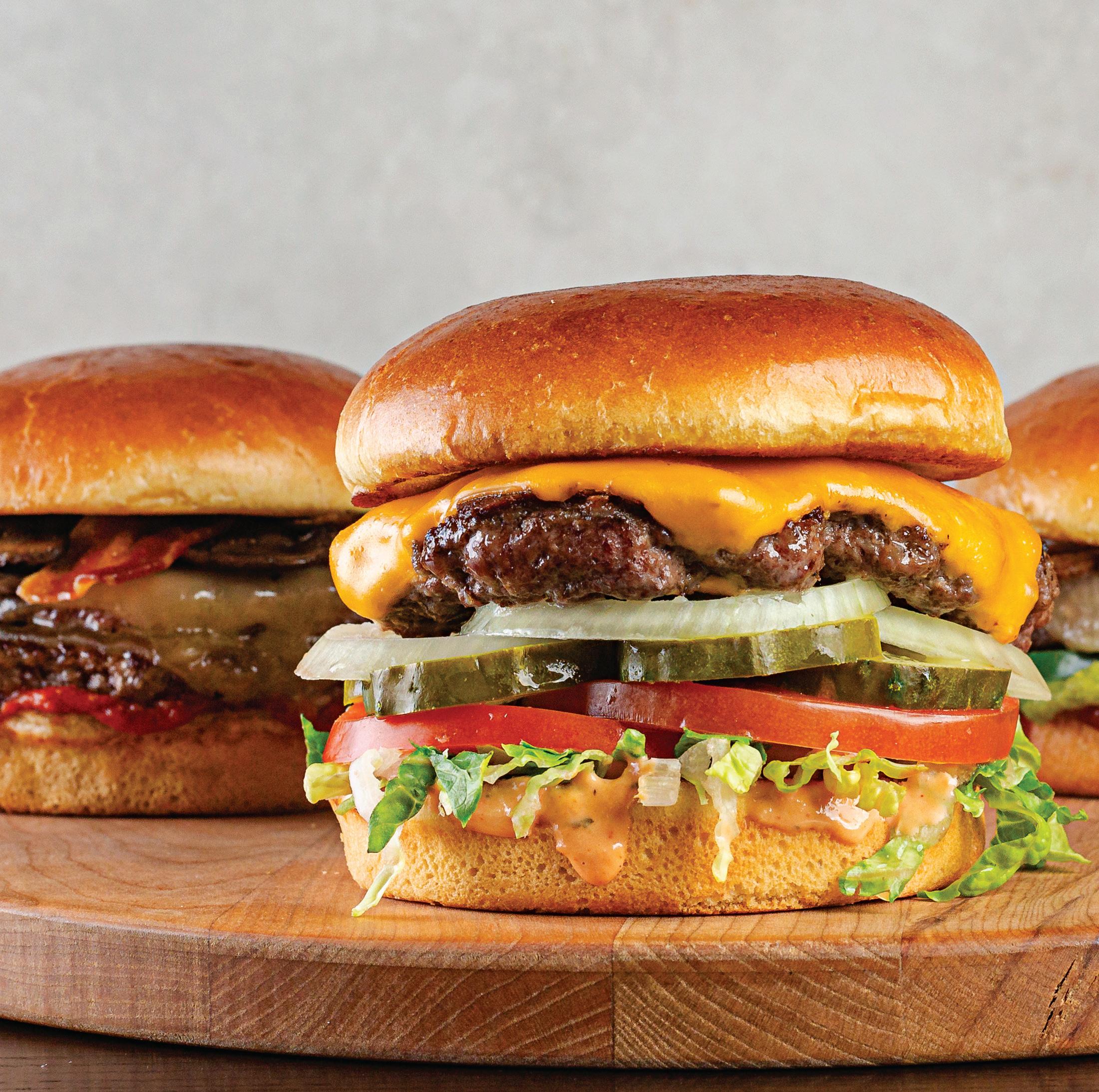

WAHLBURGERS LEANS INTO THE BROTHERS’ STARDOM AND HIGHLIGHTS THEIR FAVORITE BURGERS ON THE MENU; CHEF PAUL WAHLBERG’S CHOICE IS THE OUR BURGER WITH GOVERNMENT CHEESE, LETTUCE, TOMATO, ONION, PICKLES, AND THE BRAND’S SIGNATURE WAHL SAUCE.
The celebrity chef focuses on infusing family memories and a passion for hospitality
FOR PAUL WAHLBERG, success has always been about having a familyfirst mindset. From naming his first restaurant Alma Nove after his mother to creating the casual-dining chain Wahlburgers alongside his brothers, actors Donnie and Mark Wahlberg, the celebrity chef repeatedly emphasizes the importance of creating connections through food and making people happy, just as his family did around the Sunday dinner table.
Growing up in a large Boston family with nine kids, Wahlberg’s culinary journey began in the most authentic of settings: his family’s kitchen. “With my mom and my dad, we grew up very humbly, and they did the best they could. I love the food that they made, and whether or not you think it’s good food or bad food, that’s the connection we had,” he says, adding how he loves “anything reminiscent of that family meal. Especially when I think about those nine of us kids, for all of us to be together at Sunday dinner—which was very important to us, so the whole family was there, it was a big roast, turkey or boiled dinner, lasagna, something like that—you were always excited.”
Wahlberg got his initial start in the restaurant industry through a catering gig he and his neighborhood buddies all worked for. After that, he started a job at a restaurant near Boston’s TD Garden—home of the Boston Celtics—
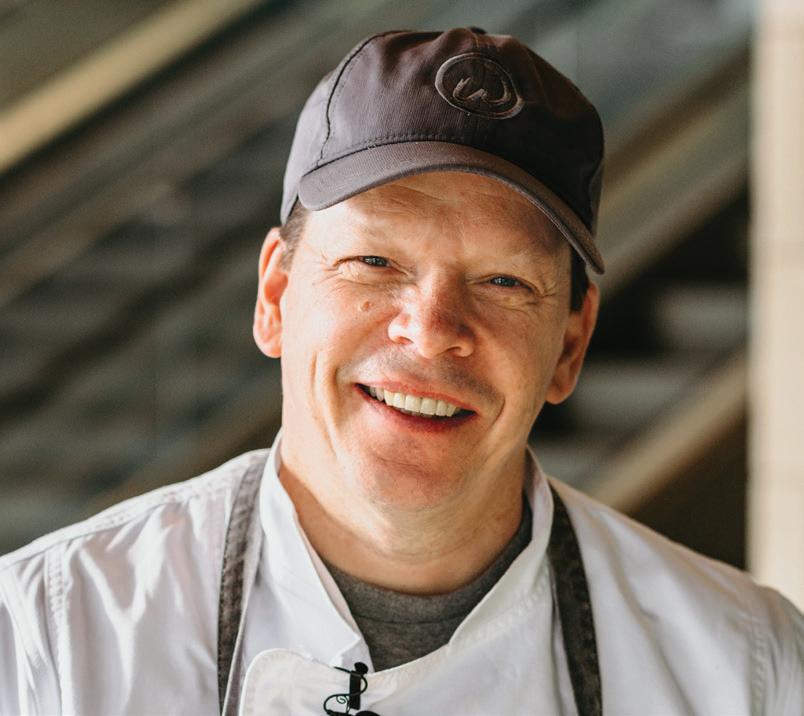
SECRET COMFORT FOOD:
At the end of the night, I like something salty—cheese and crackers. I like cold leftovers, cold pizza, stuff like that.
ALT PROFESSION: I like working with my hands and woodworking, but I couldn’t imagine my life outside of a kitchen
POST-SHIFT DRINK OF CHOICE: Coke or tea
FAVORITE MUSIC GENRES TO COOK
TO: Depends on the moment and mood; old R&B, old rock, Latin, Blink-182
and he quickly fell in love with the professional kitchen environment. “I just absolutely fell in love with the energy of the restaurant business. I fell in love with everything about it—making food, the creativity part of it, and then just the non-stop type of energy, which is perfect for my personality,” he says.
Wahlberg’s passion led him to culinary school until he ran out of money, he says, and soon after transitioned to working directly in restaurants and hotels. “Every experience that you have puts you on a path, and you learn a lot,” Wahlberg says. “I learned a lot of amazing things, especially at the first real fullview kitchen that I worked in. It was covered in glass facing out into the dining room, so I would see reactions of people eating the food, and sometimes it’s the big smile, and sometimes it’s this look, and at that point I literally would say, ‘check on table X, check on table Y, make
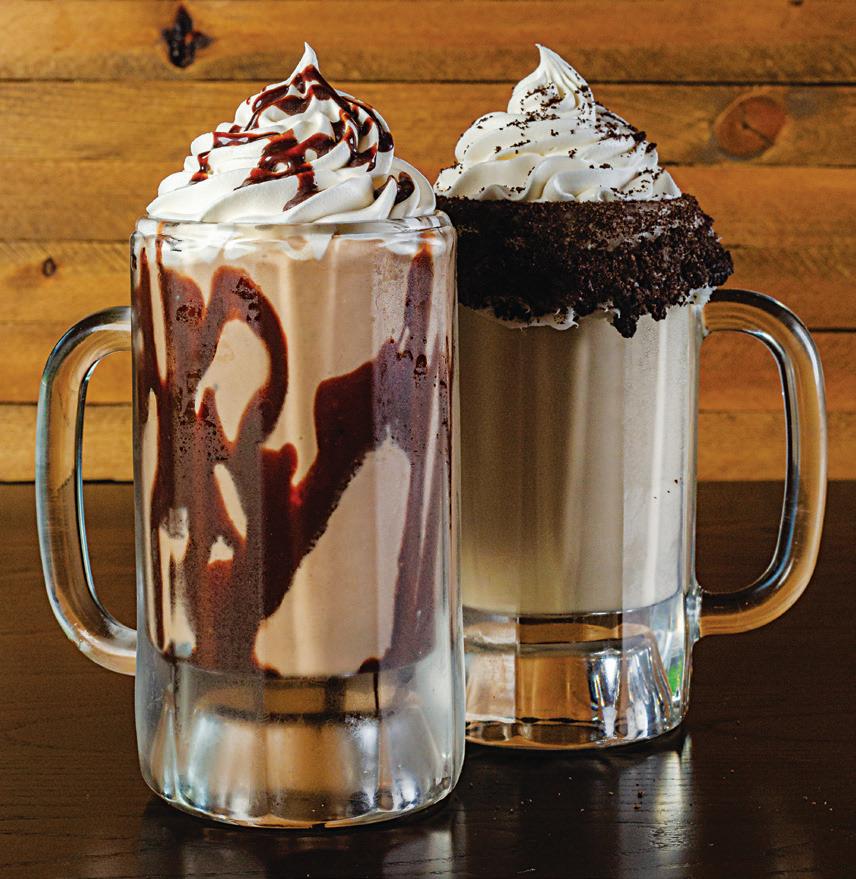
sure everything’s OK.’ I really started interacting more with guests because of that, and you build relationships with the guests … It really helped guide me.”
A year before opening the first Wahlburgers location, Wahlberg opened Alma Nove in June 2010 in Hingham, Massachusetts. “The location became available over in the Hingham shipyard, which is the town I actually live in, and we were looking at sites and found the restaurant, and it was kind of the perfect meeting of everything,” he says.
Set on the waterfront, the 143-seat restaurant is inspired by flavors from Italy and the surrounding Mediterranean, with an eclectic menu of antipasti, specialty pastas, fresh off-the-boat seafood, and chops prepared on a woodburning grill. “I wanted to have something that reminds everyone of family and the importance of that, and being able to name a restaurant after my mom was very important and very special,” Wahlberg adds.
The first Wahlburgers location opened in October 2011 in Hingham, and has since grown not only across the U.S., but to Canada, Australia, New Zealand, and more on the way. The subject of an A&E reality show, Wahlburgers offers a fun, casual, and music-filled atmosphere where guests can share great food with
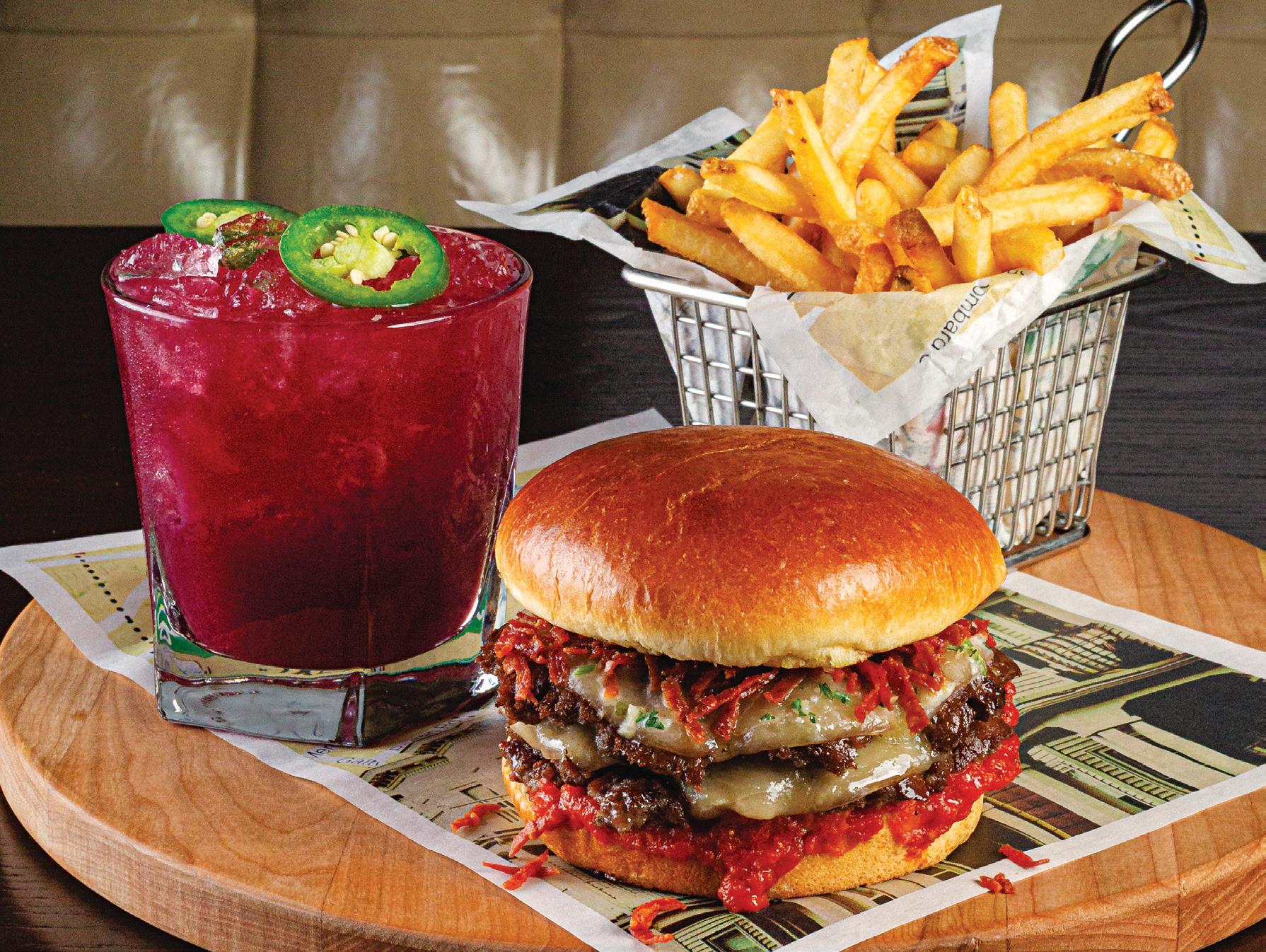
IN APRIL, WAHLBURGERS LAUNCHED ITS LATEST LTO: THE PEPPERONI SMASH, A STACKED, FLAVOR-PACKED BURGER FEATURING TWO PATTIES, CRISPY JULIENNE PEPPERONI, PROVOLONE, ROSEMARY TOMATO JAM, AND A GARLIC BUTTER FINISH.
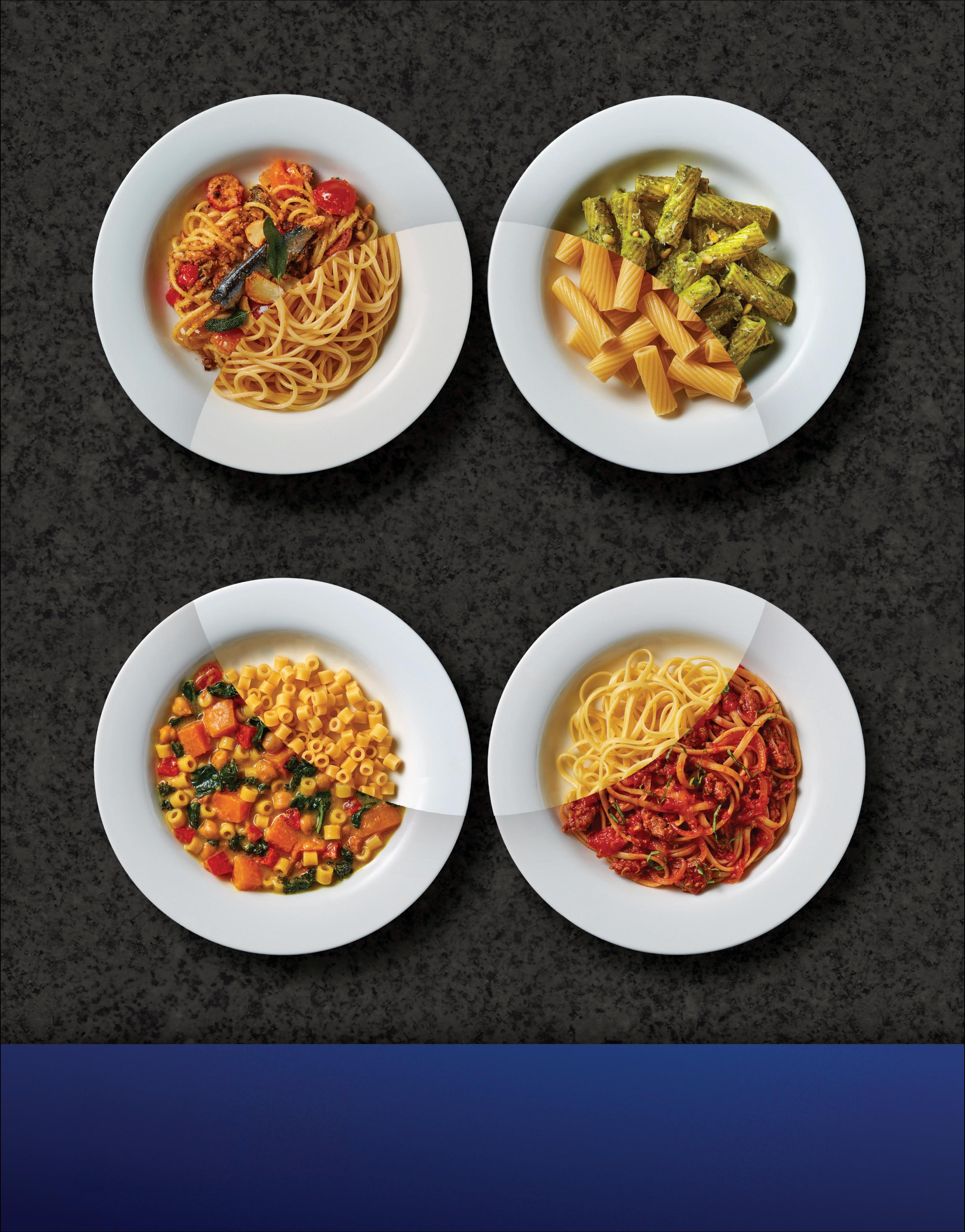

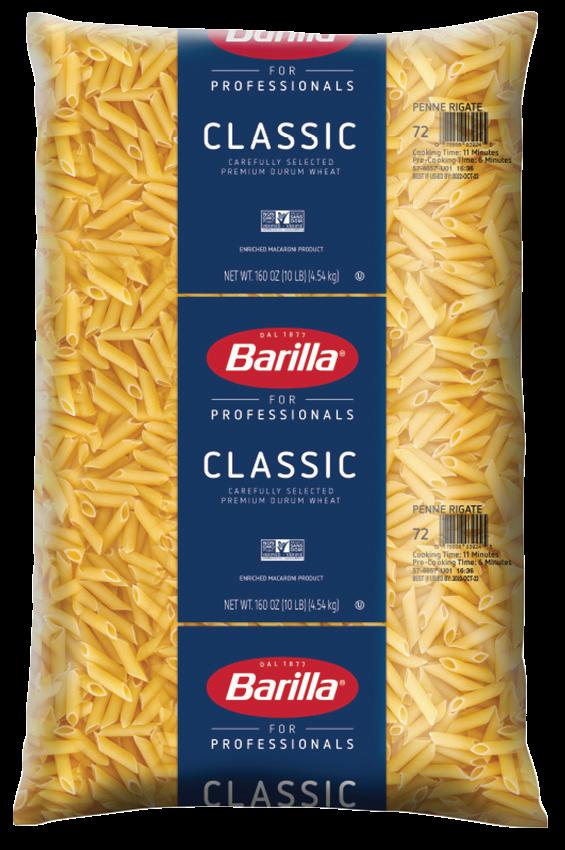


family and friends. The walls of the restaurants celebrate the family’s story through photos and words of the Wahlberg brothers’ life journeys from kids growing up in Dorchester, Massachusetts, to internationally recognized celebrities.
In February, industry veteran Randy Sharpe joined Wahlburgers as CEO, and a few months ago revamped the menu in collaboration with the Wahlberg brothers and the culinary team, giving special attention to improving the quality of products. That involved tasting 38 different burger variations to find the perfect combination of fat content, texture, and taste. “I will tell you that’s probably more than I’ve ever had in my life,” Wahlberg admits.
“I’ve worked in situations where you can’t get enough people to try something before you put it on a menu,” Wahlberg notes, which isn’t the case at Wahlburgers. “There were at least 10 or 12 of us, and then you still have to go to other stages of it, because we narrowed it down, and you have another layer, because we really wanted to settle on what we thought was best.”
Wahlberg prioritizes menu innovation that marries the best quality and big flavors with value-driven price points. For example, in April, the brand launched its latest LTO: the Pepperoni Smash, a stacked, flavor-packed burger featuring two 100-percent Certified Angus Beef patties, crispy julienne pepperoni, provolone, rosemary tomato jam, and a garlic butter finish (starting at $10.95).
Wahlburgers leans into the brothers’ stardom and highlights their favorite burgers on the menu. “Paul’s Choice” is the Our Burger with government cheese, lettuce, tomato, onion, pickles, and the brand’s signature Wahl Sauce; “Donnie’s Choice” is the BBQ Bacon burger with white cheddar, bacon, fresh jalapeños, BBQ sauce, and avocado spread; and “Mark’s Choice” is the O.F.D. (Originally from Dorchester) with two beef burger patties, Swiss cheese, bacon, sautéed mushrooms, and tomato jam—the chain’s number-one selling burger.
Wahlberg also spends a lot of time listening to feedback from his team and
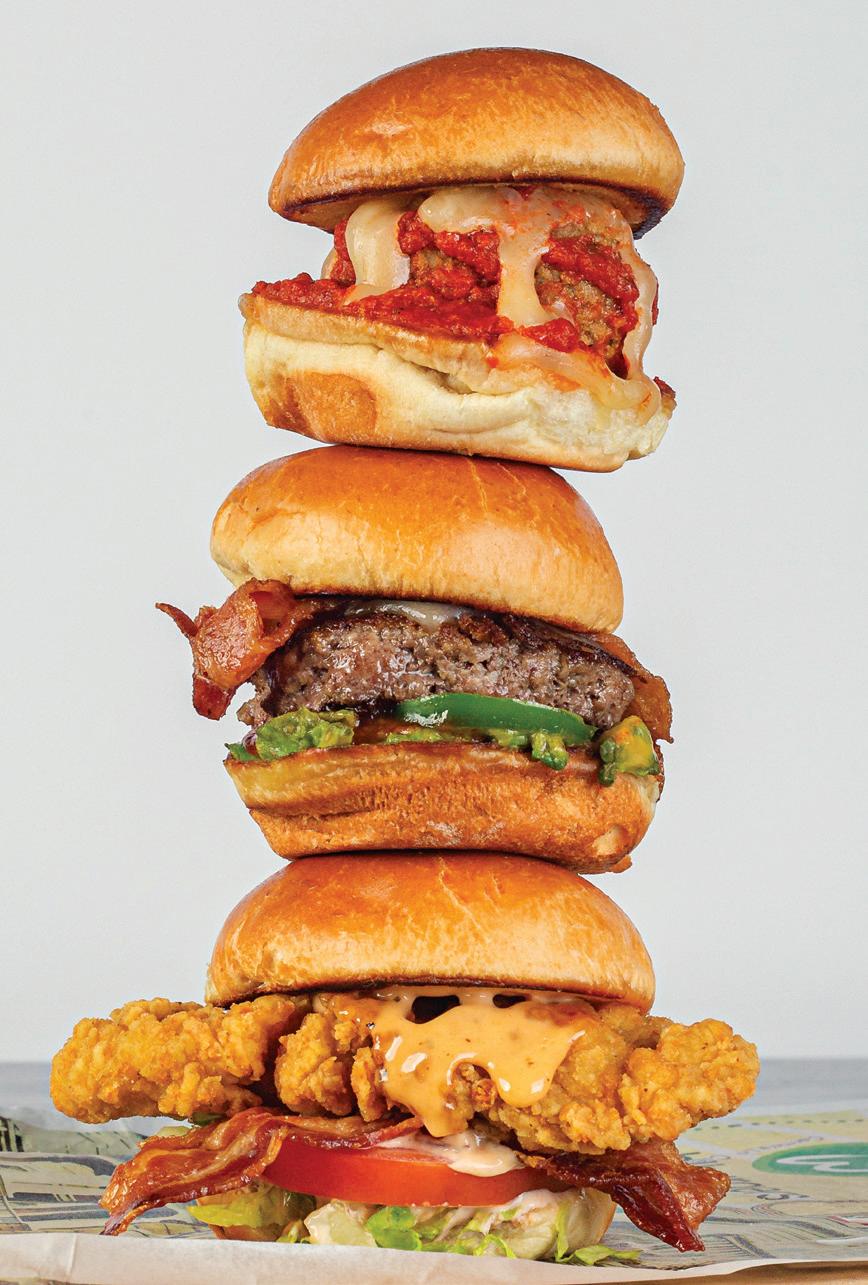
constantly reevaluating the menu to see where it can be improved. “I’ve come to the conclusion [that] I don’t cook for me,” he emphasizes. “I cook for everyone else.” That philosophy drives the direction of the brand as it grows. Whether it’s a location in Las Vegas or the drive-thru model the team is testing in Australia, the core mission remains the same: to make people happy through food, which boils down to maintaining consistency, listening to customers, and never losing sight of the individual dining experience.
As the brand continues expanding via franchising, Wahlberg says it’s “a never-ending battle in order to make sure that the consistency is there. The follow-through [is] going into restaurants, making sure everything is right, and really keeping an eye on that. The great thing with Mark and with Donnie is they have so many opportunities presented to them” when it comes to a pipeline of prospective franchisees. “Randy’s job is kind of evaluating all of that and going through that.”
At the end of the day, Wahlberg says the trust he develops with his guests and those interactions keep him inspired and passionate about the career. “You always want to exceed their expectations,” he adds. “I just love the opportunity to make people happy. That’s my job—I make people happy through food.
There’s nothing better. But I still love being in the kitchen and working with the team and really just the pressure of it, the energy, because it’s still the draw of it to me, is that energy of being there and really doing everything, putting out the fires, because something is going to go wrong, something is going to break, something is going to happen here and there. How do we fix it? How do we continue? And how do we get past the hiccups without the guests thinking anything is wrong?”
In March, Wahlburgers teamed up with Zouk Group to open a location at Ayu Dayclub at Resorts World Las Vegas, marking the brand’s first-ever partnership with a dayclub venue. Wahlburgers will also open its first of five locations in Puerto Rico this year, and recently signed a master franchise agreement for the Asia-Pacific market with Sam Mustaca, the brand’s master franchisee in Australia and New Zealand.
For young chefs entering the industry, Wahlberg offers the following advice: “Find what makes you happy. Because the happier you are, the better job you will do.” He believes chefs are privileged to be part of people’s special moments— whether it’s a first date, a family celebration, or a much-needed night out. “You get to be part of that. You have to engage in that. And it’s hard when you’re working in the kitchen, because you’re looking at each thing, and there’s a lot of repetition, especially at Wahlburgers, you’re making burgers over and over again. Making sure you’re making it to the best of your ability, because that experience that person is going to have, that comfort that they gain through your food … You have that opportunity every single time.”
He continues, “You may do a lot of something, but it’s still an individual experience, because someone is eating that, and you get to be part of someone taking in that meal and creating memories through food, which stick. I remember dishes that my parents made. I remember dishes that my grandparents made. Food can put you in a very specific time and place, and chefs really have to remember that.”
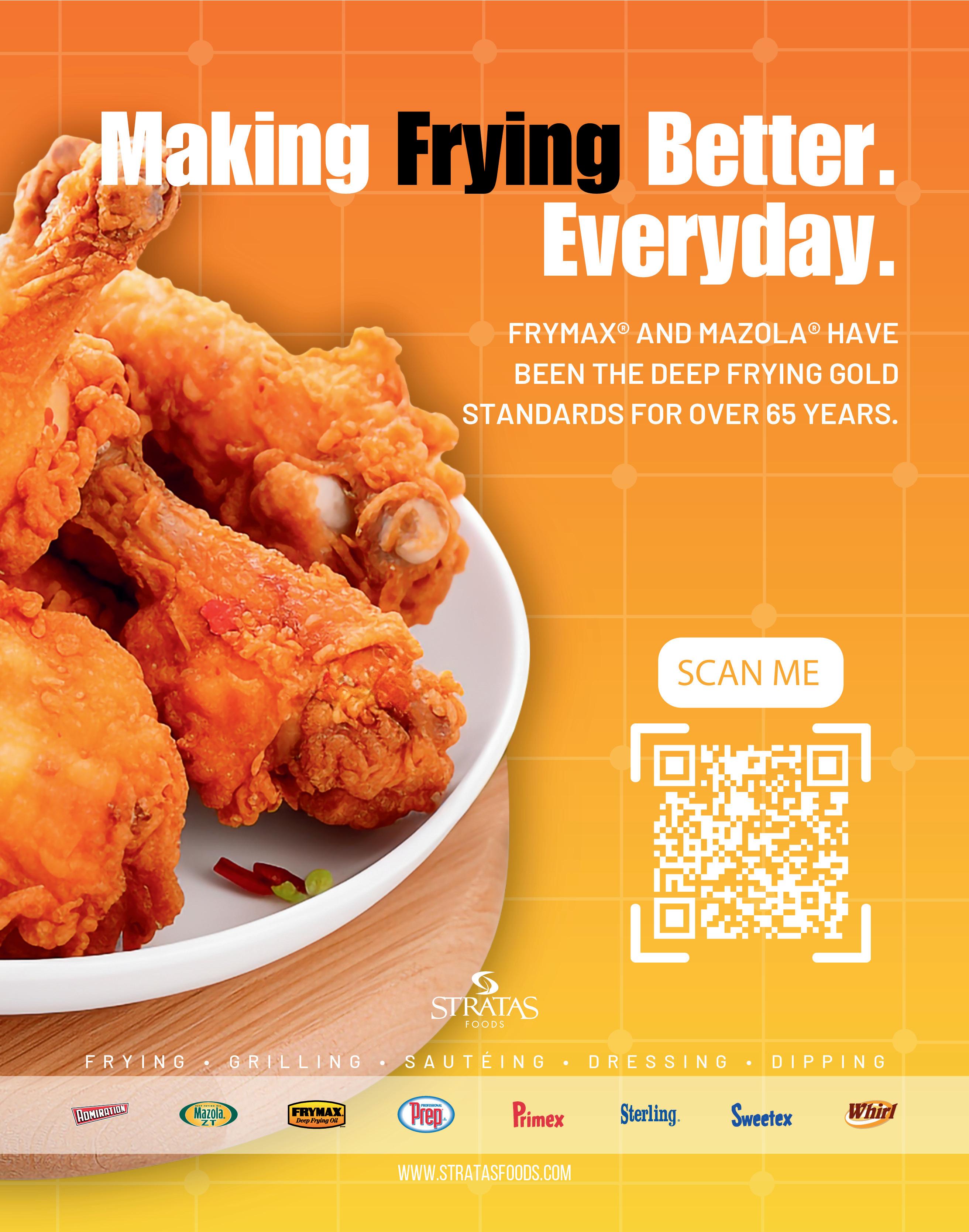

BY SATYNE DONER
Miami’s brunch scene blends culinary innovation, wellness culture, and elevated experiences at hotspots like R House, Sesame Bakery, Campo, and more.
CAMPO’S ALL-DAY BRUNCH MENU HAS A HOLISTIC SPIN, FEATURING WHOLESOME DISHES CRAFTED WITH SUSTAINABLE, LOCALLY SOURCED INGREDIENTS. WHILE THE MENU ROTATES SEASONALLY, EXECUTIVE CHEF ANTONIO MALDONADO PRIORITIZES THE HIGHEST-QUALITY INGREDIENTS TO CATER TO HEALTHCONSCIOUS GUESTS.
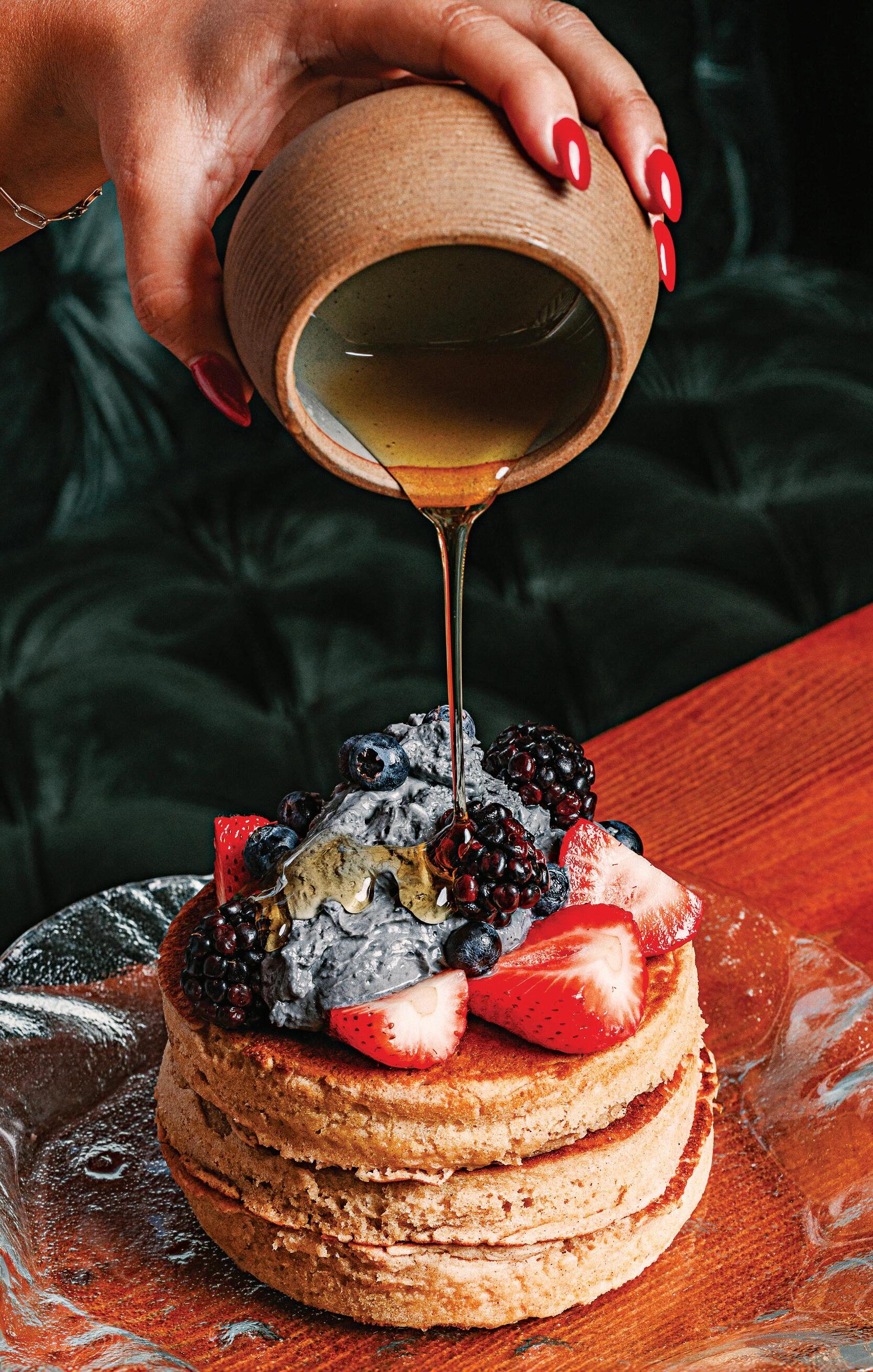
IN MIAMI, brunch is anything but a one-size-fits-all experience, reflecting the city’s rich cultural diversity. From menus blending international flavors to in-house gardens, refreshing cocktails for patrons on the go, star-studded drag shows, and family-style dining, there’s something for everyone.
In Solé Mia, a new development in North Miami Beach, French classics meet Israeli spice at Sesame Bakery. The all-day brunch concept was introduced in late 2024 by the team behind Motek, one of Miami’s premier Mediterranean eateries.
The goal was to bring a small piece of Tel Aviv to Florida, with subtle infusions that resonate with both American and Middle Eastern palates. The Galil omelet features spinach, parsley, feta cheese, and sourdough, while the green shakshuka combines poached eggs, Israeli salad, tahini, and a Jerusalem bagel.
“We offer flavors that represent both cultures,” says Alexander Odishelidze, Sesame Bakery’s regional general manager. “We’re very grounded in classic techniques, but we play the creative card by including common Middle Eastern flavors, like the pistachio croissant.”
Odishelidze believes everyone has a unique take on brunch, and there’s ample opportunity to diversify the experience with fresh ideas and international influences.
“A city like Miami naturally lends itself to new cultures and flavors, and we are seeing more globally inspired concepts, for sure,” Odishelidze says. “Techniques are techniques, but people are always looking to innovate and reinvent the brunch conversation.”
While the Motek team is preparing


UNMATCHED NUTRITIONAL BENEFITS:
• Tomato Puree is the FIRST Ingredient
• Made with Real Sugar
• No High Fructose Corn Syrup (HFCS)
• 75% Less Sodium Than Other Leading Brands
• No Artificial Colors, Flavors or Preservatives
• Made Without Artificial Caramel Color
• Sweet & Smoky Flavor
• Gluten free
REQUEST YOUR FREE SAMPLE
R HOUSE’S BRUNCH COCKTAIL MENU IS THEATRICAL. GUESTS CAN ENJOY A SIGNATURE ESPRESSO MARTINI SERVED WITH A MINI BASKET OF POPCORN, AND LA PIÑA LOCA—AN OVERSIZED WHOLE PINEAPPLE FILLED WITH FROZEN PIÑA COLADA, FIVE SHOTS, AND SPARKLERS.
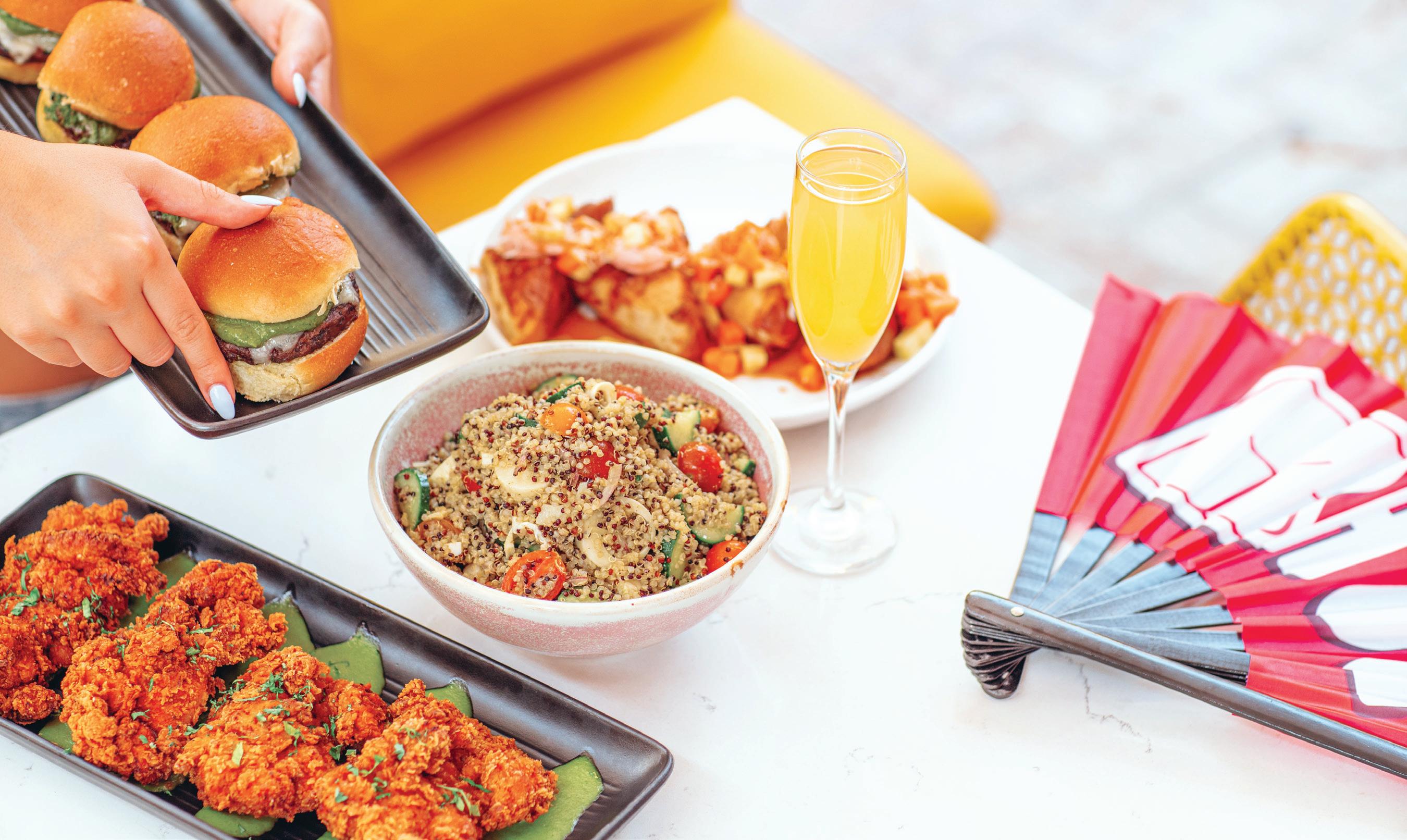
to open its seventh location in nearby Boca Raton—eventually expanding to the New York market—Sesame Bakery is focused on strengthening its roots in Miami before growing further. For Odishelidze, success lies in understanding what guests want.
“We are honing in on making sure we make people feel good,” he says. “When you make the food with love, it hits our guests’ emotions. It’s not just about the flavors; it’s also about providing them with the right state of mind.”
In the heart of the historic Faena District on Miami Beach, Campo—Span -


ish for “field” or “countryside”—draws inspiration from Alan Faena’s South American home and executive chef Antonio Maldonado’s childhood memories of colorful, nourishing recipes from Puebla, Mexico.
The all-day brunch menu has a holistic spin, featuring wholesome dishes crafted with sustainable, locally sourced ingredients. The loaded pancakes are topped with seasonal berries, while the chilaquiles and eggs feature red chile de árbol, heirloom corn totopos, a sunnyside-up egg, and queso fresco. The Homestead salmon poke bowl is a superfood-rich treat.
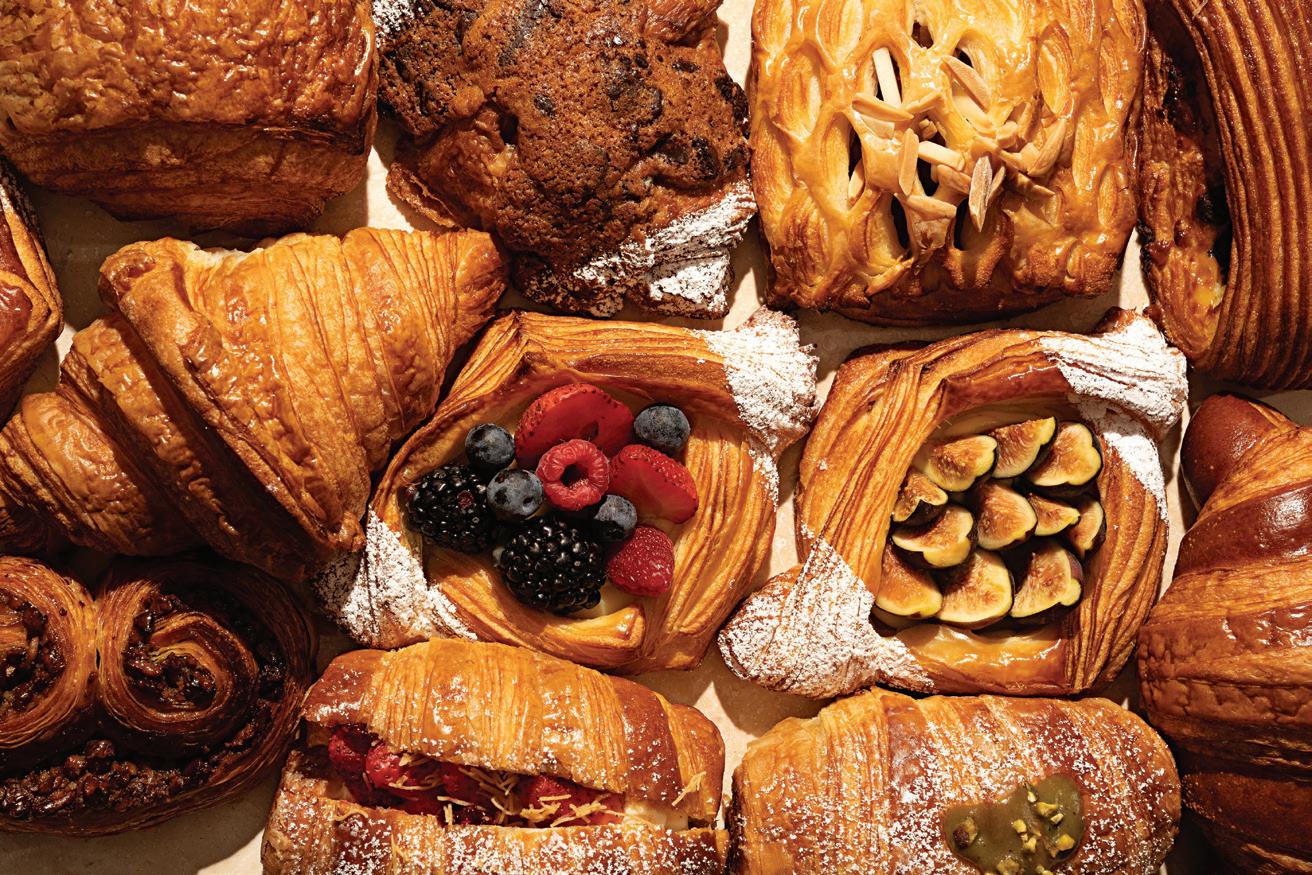
On the beverage side, the Sandia Mimosa fuses watermelon, mint, and prosecco, and the Morning After cocktail highlights clamato, celery salt, lemon, and vodka. While the menu rotates sea -
sonally, Maldonado prioritizes the highest-quality ingredients to cater to healthconscious guests.
“I focus on sustainability because I know it’s the future, and people are worried about eating better,” Maldonado says. “So my brunch menu is a reaction to that. There is a natural balance in Miami between light and heavy brunch options, and we’re right on the beach, so I cater to those who want to grab a light and tasty dish and then go lie down in the sun. It’s a casual way to offer a high-quality menu.”
Campo reflects Miami’s vibrant culture with maximalist décor and bold murals. Maldonado’s in-house garden is small, but its presence reinforces the restaurant’s commitment to freshness. He considers the table beside it the best seat in the house.
“All of my dishes have their own identity, whether that’s lightness, spiciness, or creaminess,” Maldonado says. “They come from my childhood or from one

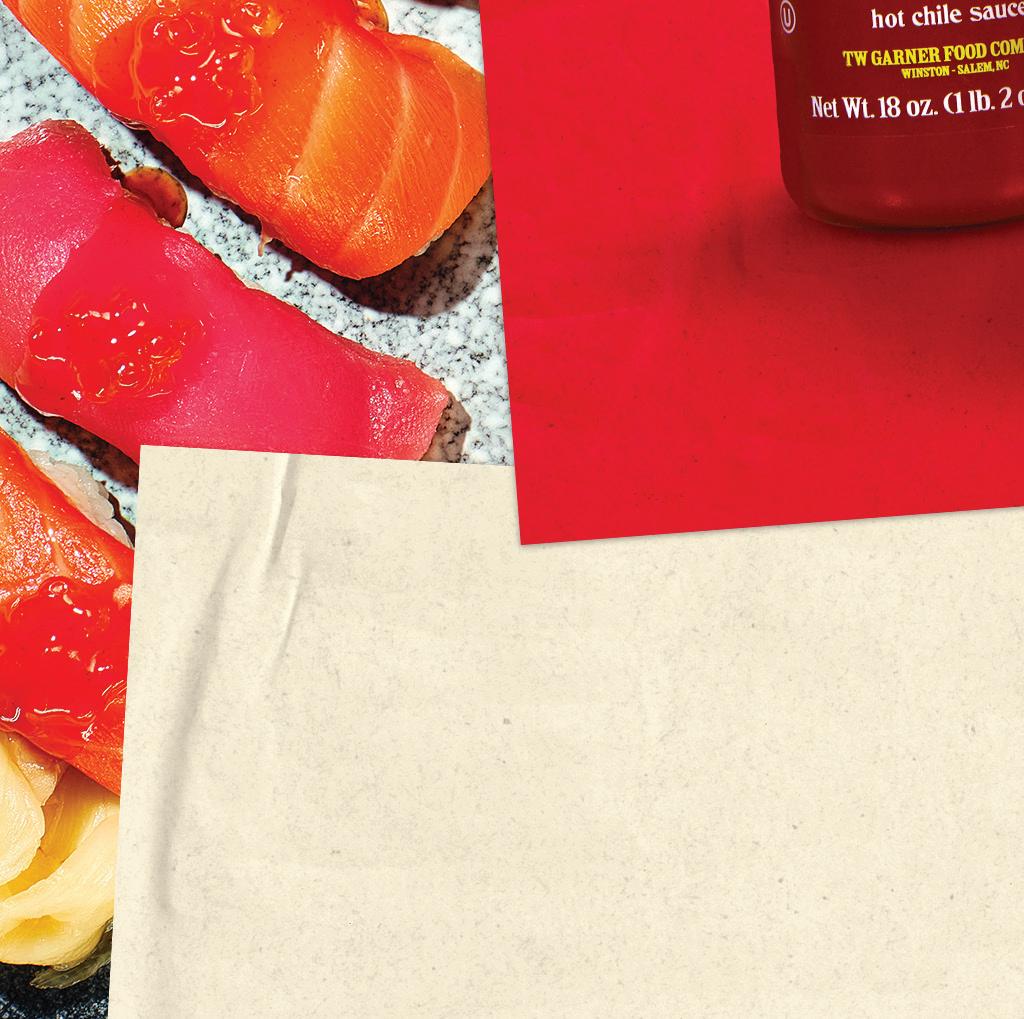









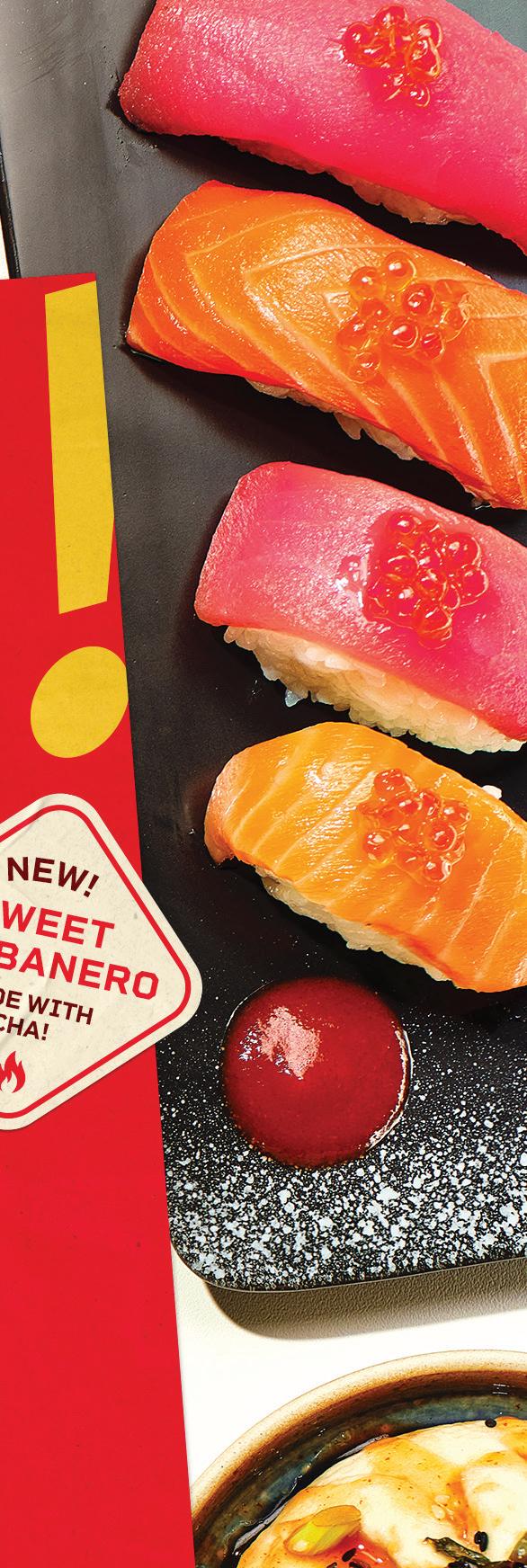
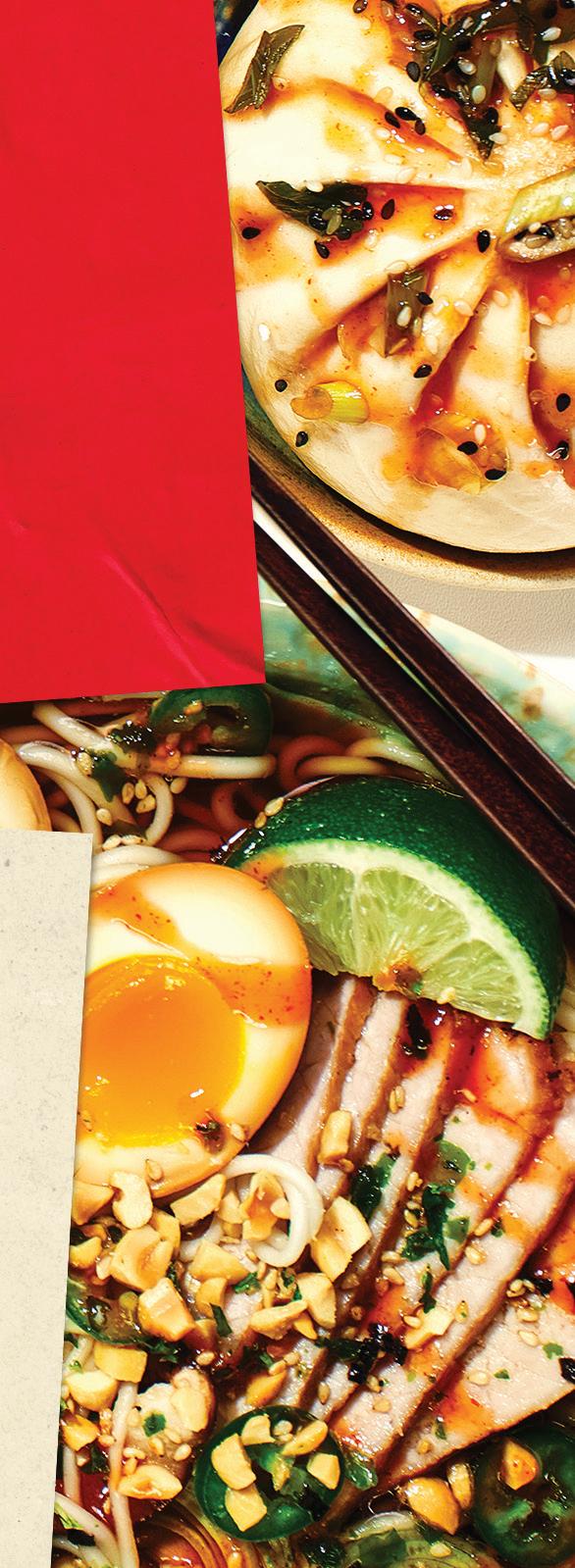

of the 30 countries I’ve been to. We are adventurous, balancing the past and future. I challenge myself to offer great food, farm-to-table ingredients, and competitive pricing in the Miami brunch landscape.”
Over in Wynwood, R House— Miami’s pioneering LGBTQ+ hotspot for drag brunches—is celebrating its 10th anniversary. Owned by husband duo chef Rocco Carulli and Owen Bale, the eatertainment concept has evolved from a restaurant into a premier drag brunch destination.
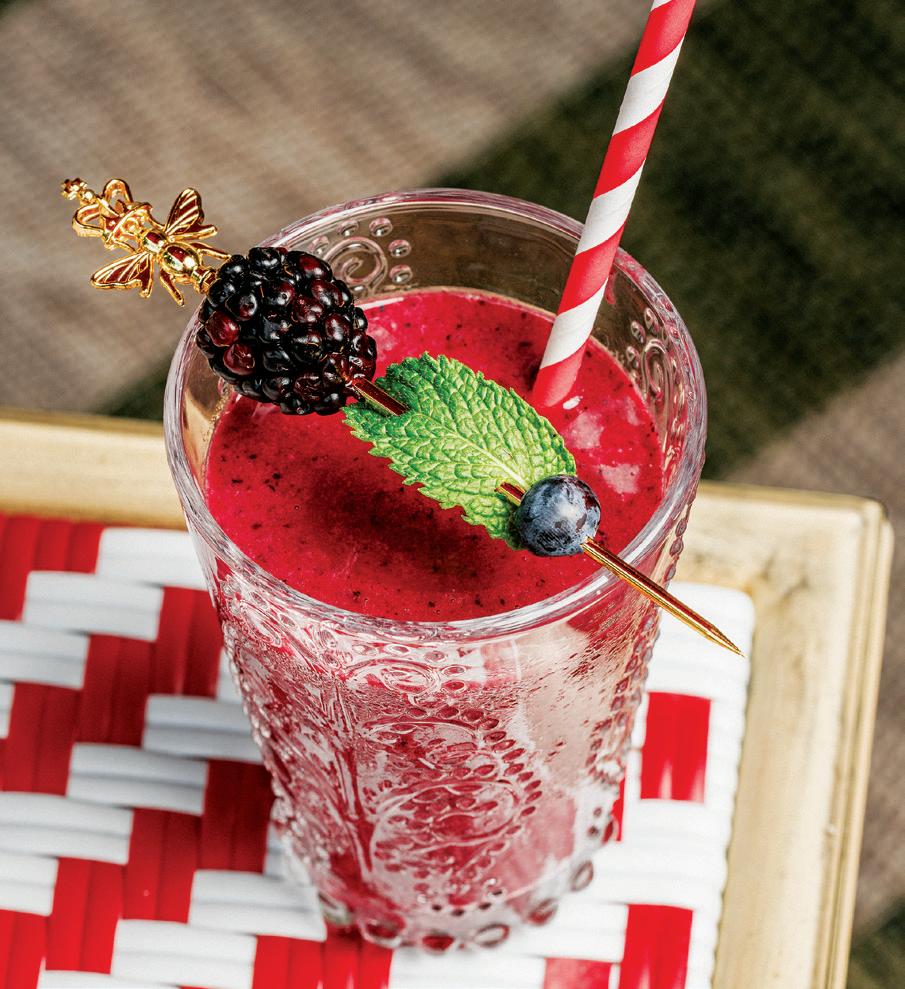
ple arriving at the same time. So there’s a lot of storage, prep work, and execution to think about,” Carulli says. “It’s a joint effort, and everyone knows their role in the brunch experience. The customers never see it, but we’re maneuvering many different things at the same time. It’s like a military operation … but at the same time, everyone loves working together, and it’s a collaborative process of constant improvement.”
With R House being a go-to spot for birthdays, bachelorette parties, and other celebrations, the brunch cocktail menu is bold and theatrical. Guests can enjoy mimosas, a signature espresso martini served with a mini basket of popcorn clipped to the side, and La Piña Loca—an oversized whole pineapple filled with frozen piña colada, five shots of house liquor, and sparklers.
“La Piña Loca is run to the table by a parade of servers with clacking fans, so it’s a big show for the guests, and it’s very popular,” Bale says. “We’ve made a point to create so many Instagram-worthy moments, giving guests opportunities to make memories with us.”
The family-style menu is designed to satisfy all guests, featuring avocado toast with Tajín and pico de gallo, spiced apple crumble French toast, and cayenne fried chicken topped with spicy cilantro sauce. Vegan options include a seasonal brunch salad, cauliflower rice bowl, pumpkin spice French toast, and an açaí berry bowl packed with superfoods. While the menu wasn’t always rotational, Carulli has recently embraced seasonal flavors to keep things fresh.
“It’s a production-type menu, made to taste amazing and fresh for 400 peo -
Beyond its renowned drag brunch, R House considers itself an incubator for talent, with one of its performers recently featured on “RuPaul’s Drag Race.” Carulli and Bale aspire to be recognized nationwide as the top destination for drag entertainment, expanding their show schedule, creating more opportunities for performers, and continuing to redefine the brunch experience.
“We have a robust entertainment roster, and it’s the heart of our business, but we don’t offer just drag performances. We also offer a beautiful venue, a great menu, and vibrant drinks,” Bale says. “It’s the total package. We’re not relying on one aspect of the business to make or break the experience for everybody.”

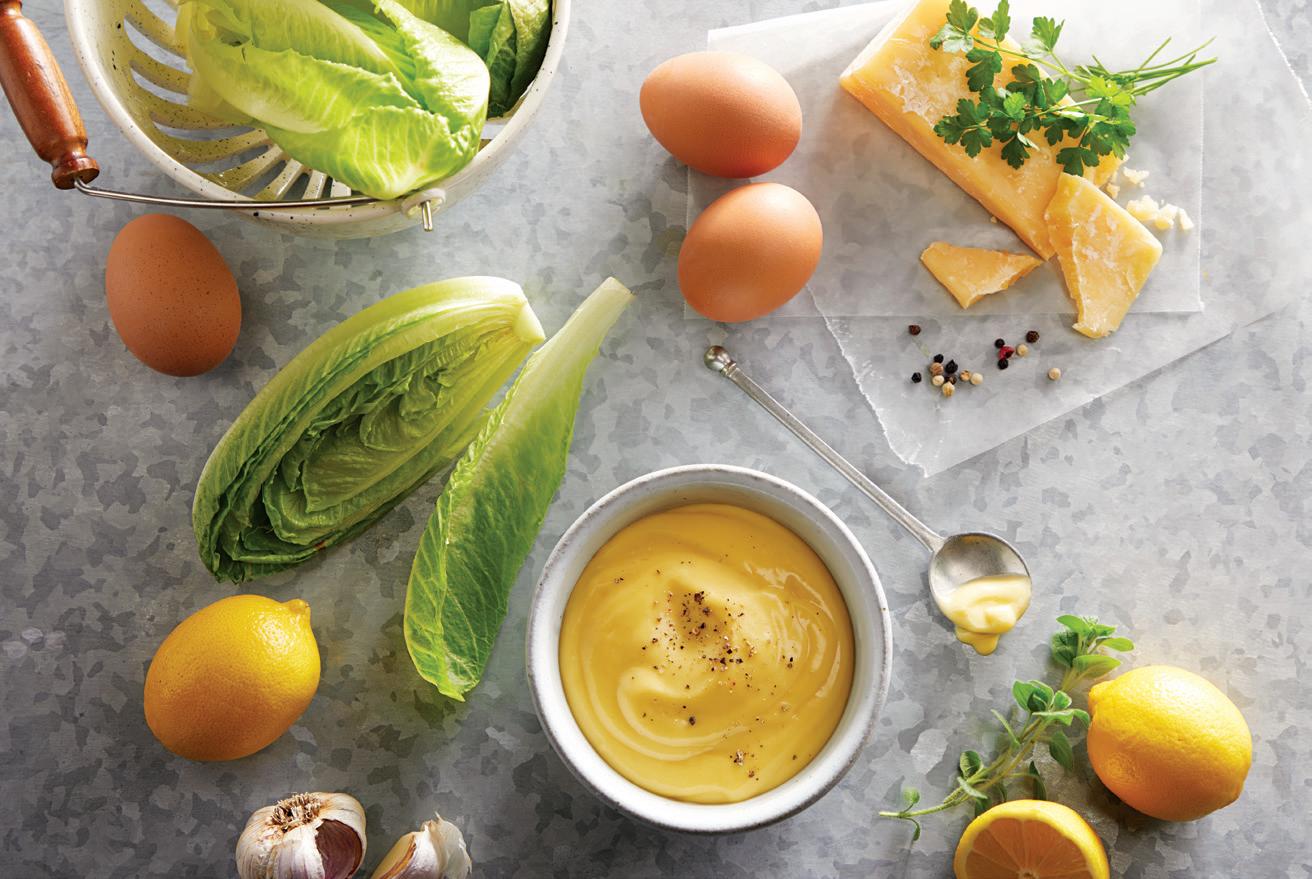
remain irreplaceable on menus as operators and consumers navigate the challenges of bird flu (pathogenic avian flu). The American Egg Board ( aeb) is a key resource for operators seeking guidance. Nate Hedtke, vice president of Innovation and Customer Engagement at AEB, shares what operators need to know about Bird Flu’s impact and how to maintain a reliable egg supply.
WHAT SHOULD OPERATORS KNOW ABOUT BIRD FLU’S IMPACT ON EGG SAFETY AND SUPPLY?
America’s egg farmers are battling bird flu, which has caused the loss of over 130 million egg-laying hens— including more than 30 million just this year. This disease is putting a strain on our nation’s egg production system, impacting the national supply and the price of eggs.
The USDA and FDA confirm there is no evidence that bird flu can be transmitted to humans through properly cooked food. The likelihood that eggs from infected poultry are in the retail market is low, due to safeguards in place, which include testing of flocks and federal inspection programs.
WHAT ARE COMMON MISCONCEPTIONS ABOUT BIRD FLU AND EGG SAFETY, AND HOW CAN OPERATORS REASSURE CUSTOMERS?
The risk of infected eggs entering the market is low, and proper cooking and handling eliminates any potential concerns. Operators can reassure customers by reinforcing federal safety regulations and explaining the multiple lay-
Timely straight-talk for you and your customers. BY DREW
FILIPSKI
ers of testing, inspection, and on-farm biosecurity ensuring only safe, high-quality eggs reach their kitchens. Keeping open communication with guests and educating staff on these safety measures can help operators alleviate concerns and build confidence in menu offerings.
HOW CAN OPERATORS MITIGATE SUPPLY CHAIN DISRUPTIONS FROM BIRD FLU?
Strategies depend on each operator’s menu, service model, and reliance on eggs. However, there are steps to minimize impact. Diversifying sourcing methods, like incorporating shell eggs, liquid eggs, and pre-cooked egg products, allows operators to manage fluctuations in supply without compromising consistency. Optimizing portion control through blended egg dishes or creative applications can help balance costs. Operators should also take a long-term approach to planning as it will take a sustained period with no additional HPAI detections on egg farms to stabilize supply. Proactive discussions with suppliers and distributors will be essential in maintaining stability as the industry works toward recovery.
HOW DOES THE AMERICAN EGG BOARD HELP ENSURE A STEADY, SAFE EGG SUPPLY DURING MARKET VOLATILITY?
AEB plays a crucial role in supporting operators with upto-date insights, resources, and industry coordination. In addition to working closely with the USDA, FDA, and United Egg Producers on research and response strategies, AEB also provides support to operators. We share real-time supply updates, host one-on-one consultations, and offer insights through dedicated web portals. When major announcements are made—whether about vaccine developments, policy changes, or supply updates— we communicate these developments in clear, actionable ways to help operators understand what it means for their business. Our goal is to be a trusted resource for operators, offering data-driven guidance and practical solutions to keep real eggs on the menu with confidence. •
For more information, visit incredibleegg.org/fso

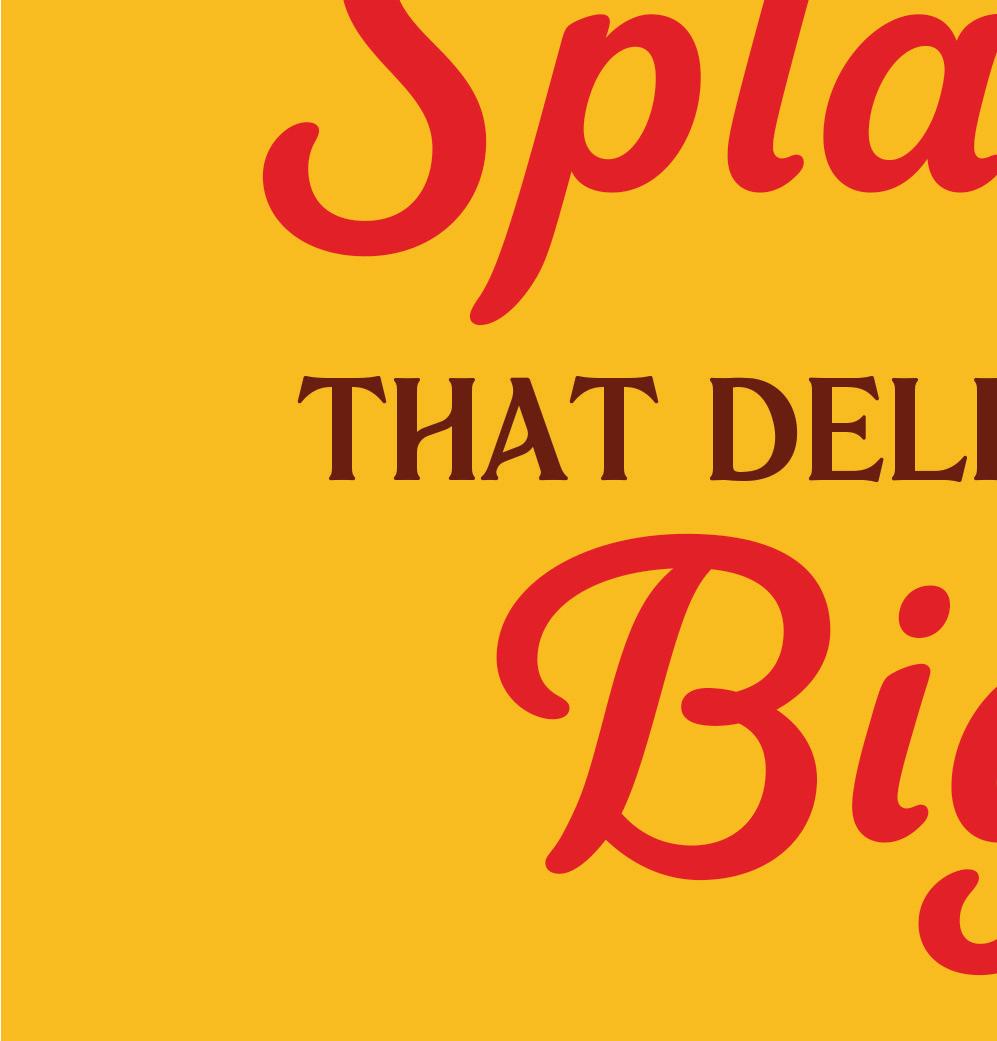

LEARN MORE






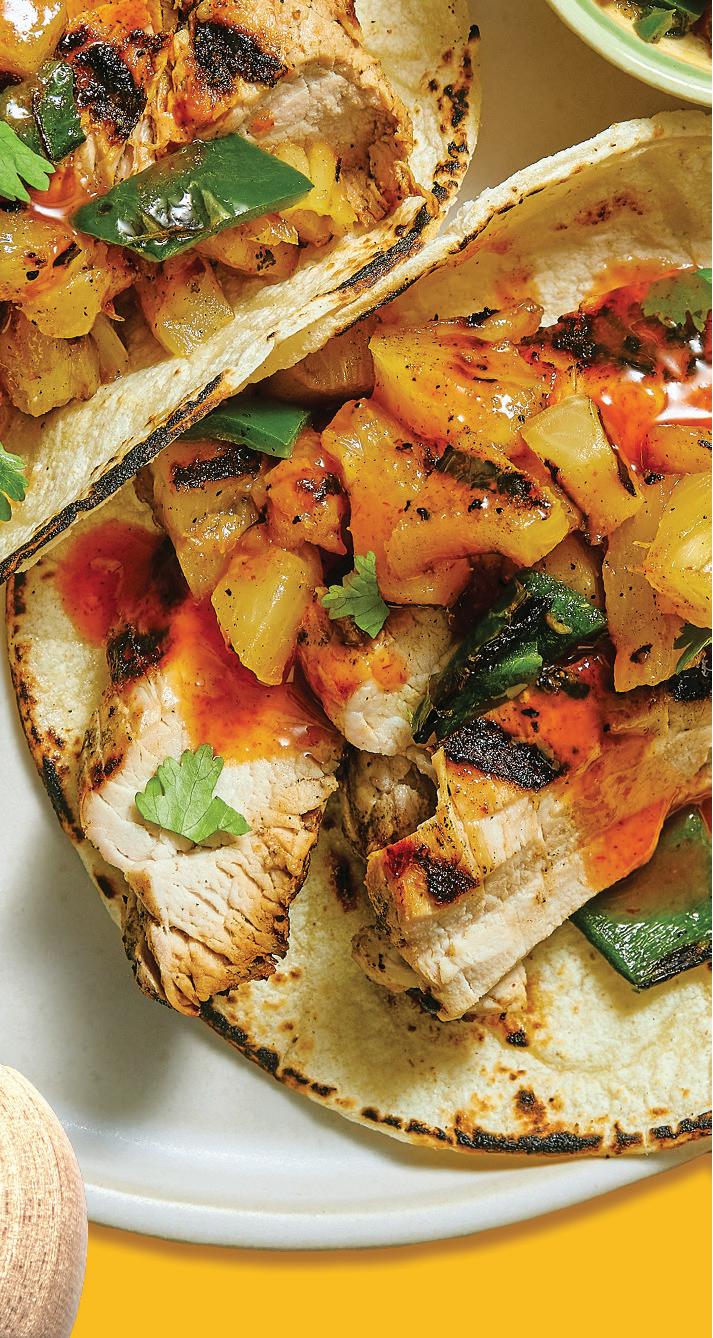
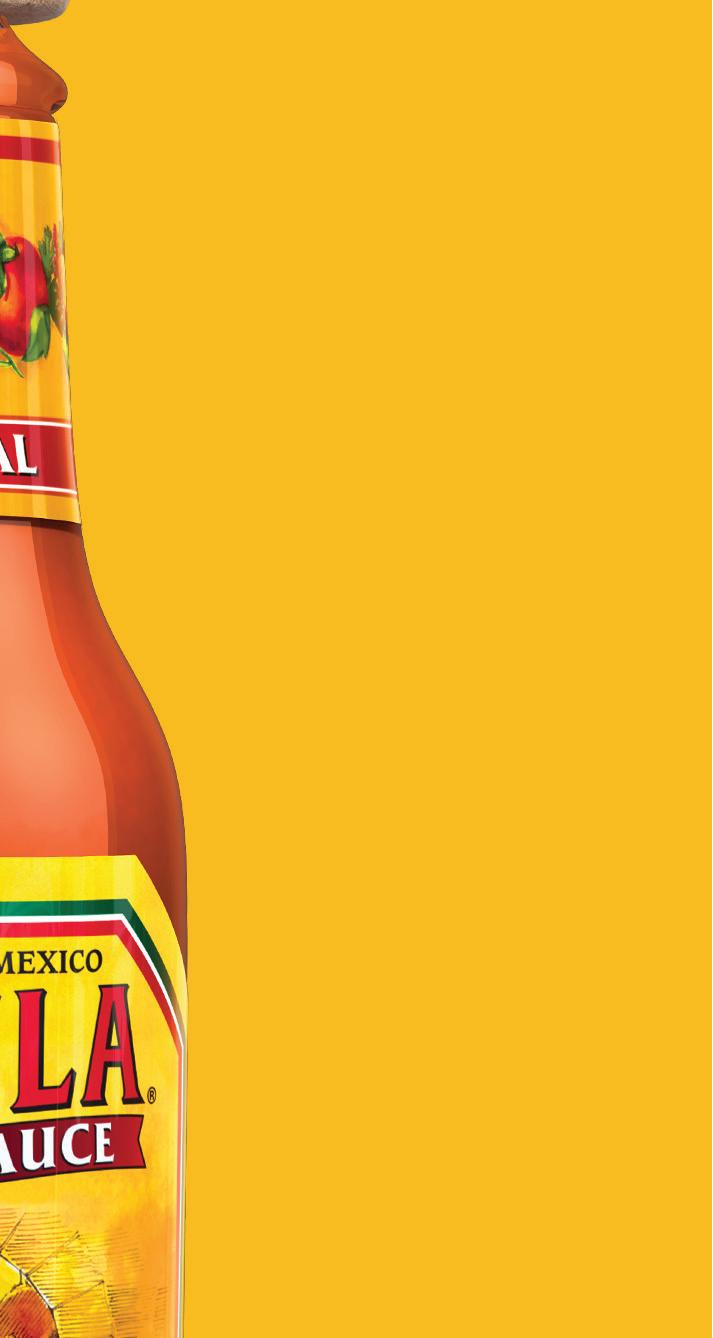
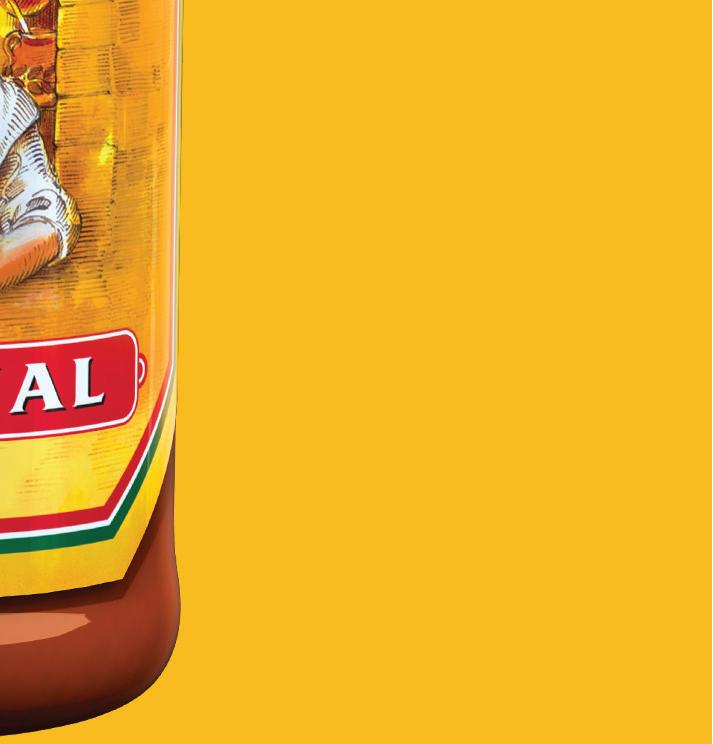



MENTIONED IN THIS STORY ANOTHER ROUND ANOTHER RALLY • FOCUS ON HEALTH
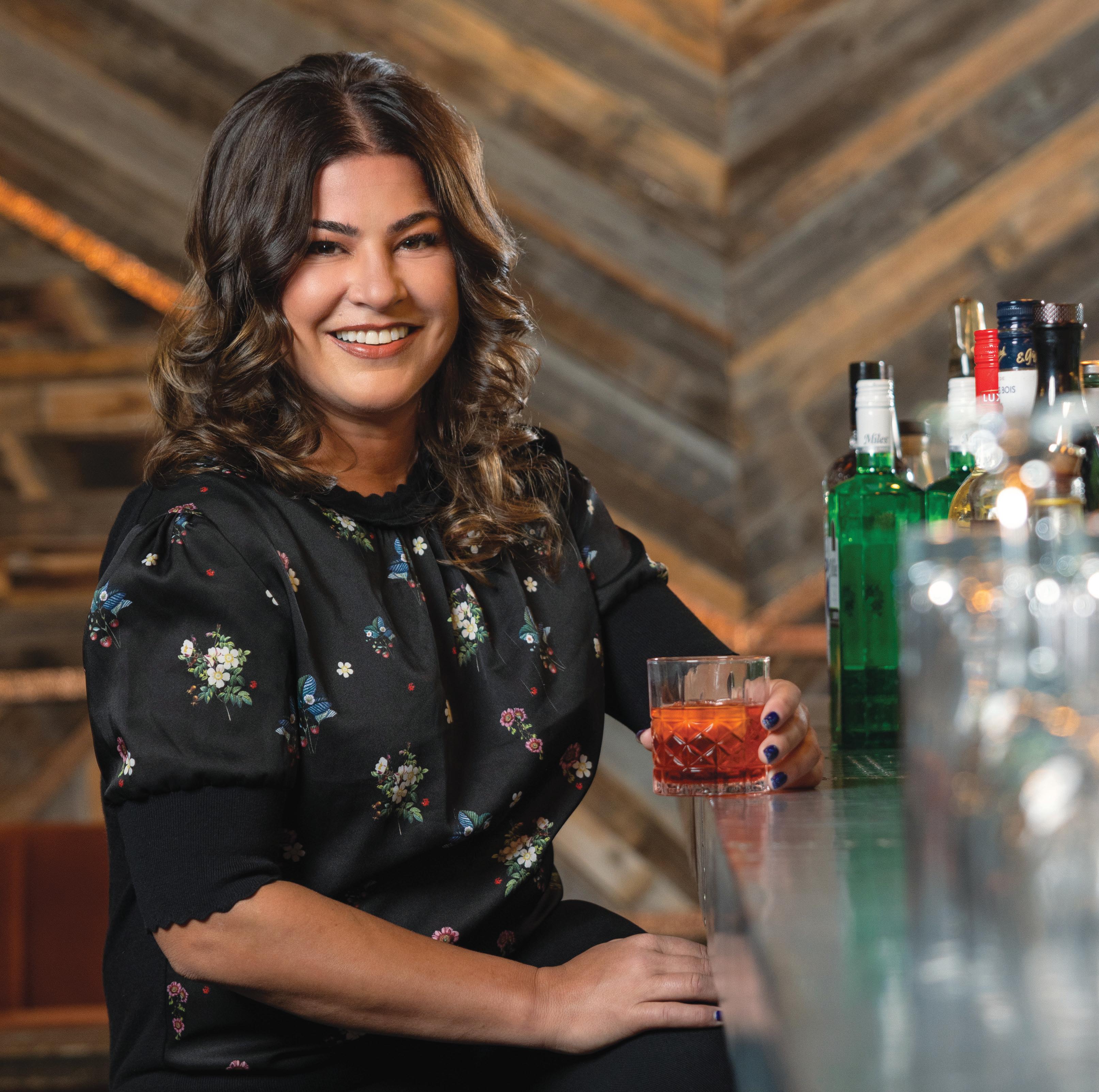
BY SAM DANLEY
Organizations are stepping up to tackle the biggest issues in the beverage world.
THE HOSPITALITY INDUSTRY has long grappled with instability, inequality, and a lack of support for workers. More organizations are stepping up to tackle these challenges headon, helping bartenders and hospi-
“We’re working toward creating an industry where everyone can build lasting and sustainable careers, without having to sacrifice stability or security.”
Amanda Gunderson
tality professionals build sustainable careers while fostering a more equitable and supportive industry. Groups like Another Round Another Rally and Focus on Health are leading the way, driving real change for workers be-
hind the bar and beyond. Here’s a look at how they’re making it happen.
Founded in 2018 by Amanda Gunderson and a group of like-minded individuals, Another Round Another Rally arose from a shared frustration with the lack of stability in the hospitality industry.
“We were just talking one night about how the system was not built to actually allow for full careers for most of the 15 million people employed in it,” Gunderson says. “Most people in hospitality that we knew did not have any form of health insurance provided by their employer. We could also see that there were fun educational opportunities that could
RESTAURANTS AND BARS CAN BETTER SUPPORT STAFF BY IMPLEMENTING POLICIES LIKE PAID SICK LEAVE, PTO, AND PAID FAMILY LEAVE, AS WELL AS BETTER RESOURCES FOR EMPLOYEES STRUGGLING WITH MENTAL HEALTH OR SUBSTANCE USE.
develop skills and make people more hireable, so we just put our heads down and went to work.”
The organization provides emergency aid to hospitality workers in crisis, including general emergency funding, mental health support, a fund for those facing gender-based violence, and assistance for workers diagnosed with cancer. Scholarships and reimbursement grants are another area of focus. Another Round Another Rally offers a range of professional development opportunities, including immersive educational experiences and specialized programs in spirits education. These initiatives provide workers with the chance to learn from industry experts, explore different regions, and gain hands-on experi-
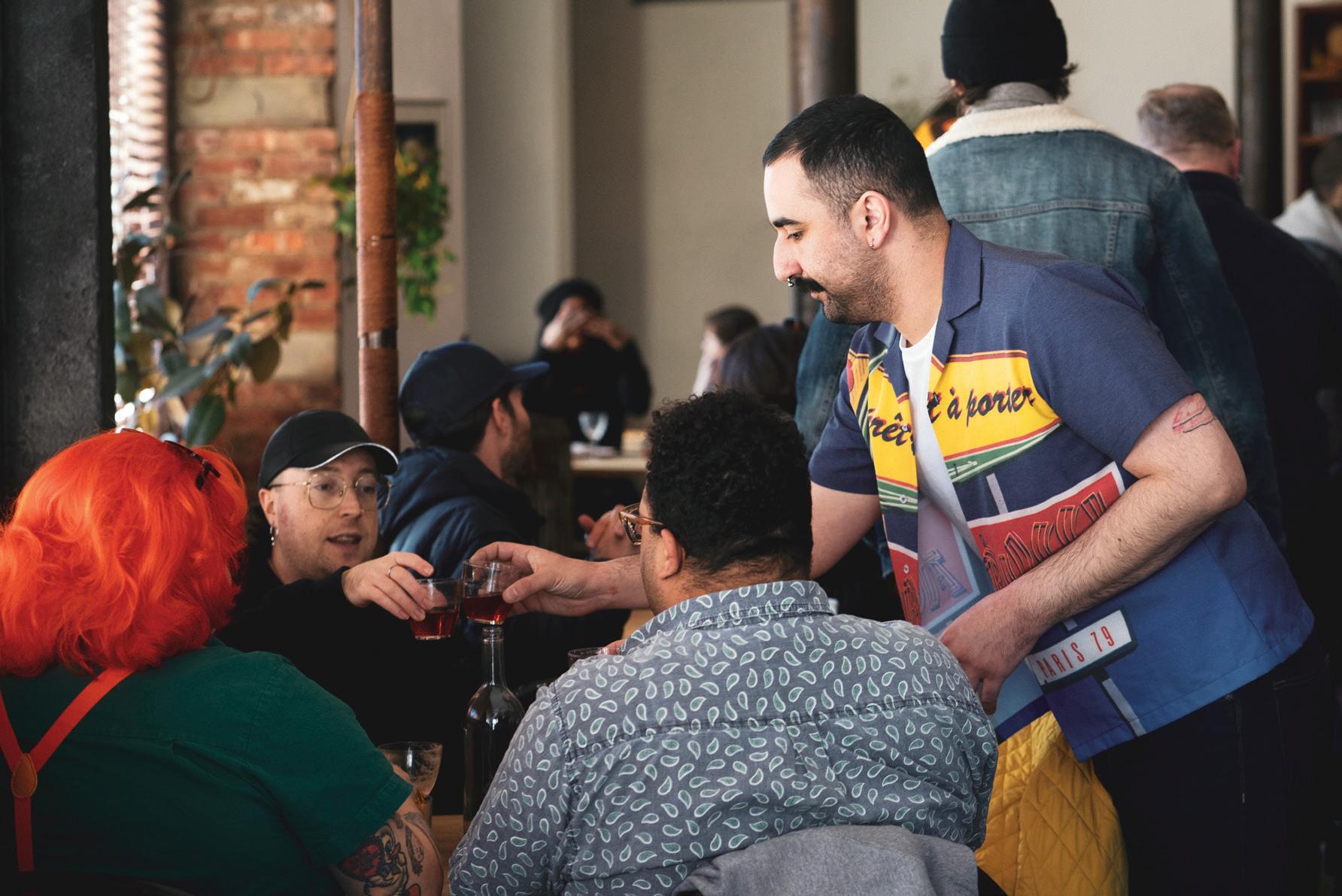

ence in areas like bourbon, rum, agave spirits, and cognac.
Gunderson says the ultimate goal is to dismantle systemic barriers in the industry, particularly for marginalized groups. “There are some startling truths about the realities of working in hospitality,” she says. Restaurant workers are two and a half times more likely to live in poverty than the general workforce, and more than 40 percent of restaurant workers are living with an income below two times the federal poverty line, according to Restaurant Opportunities Center United.
“That’s more than any other industry and disproportionately affects women, particularly women of color,” Gunderson notes.
When the organization talks about driving “radical change,” it envisions a future where women, people of color, LGBTQ+ individuals, people with disabilities, and immigrants hold leadership roles and occupy the highest-paying positions in bars and restaurants.
“We’re working toward creating an industry where everyone can build lasting and sustainable careers, without having to sacrifice stability or security,” Gunderson says. “And with millions of dollars in aid already doled out and thousands of hospitality members already helped, we’re on our way.”
While Gunderson acknowledges progress, she believes there’s still a long way to go. “Bars and restaurants have definitely made some moves toward a more equitable space in recent years,” she says, “but we are still at the bottom tier of the mountain that needs to be climbed.”
She points out that the industry remains deeply segregated—not just by restaurant style or neighborhood, but by job title.
“For example, when you see a person of Thai descent in management, you are most likely to see that person in a Thai restaurant,” Gunderson says. “If you work in a bar, you have likely seen your immigrant barback be passed up for a promotion time and time again when bartender positions become available. That is the truth across the spectrum in hospitality. There are so many barriers to break down

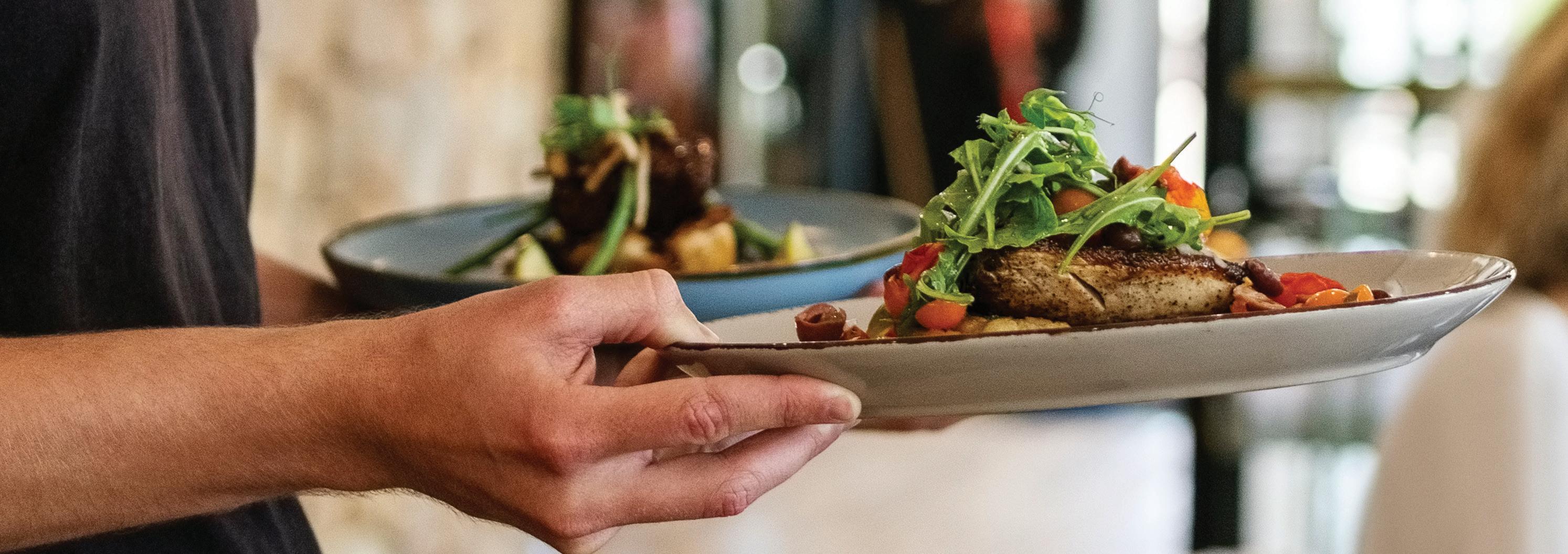


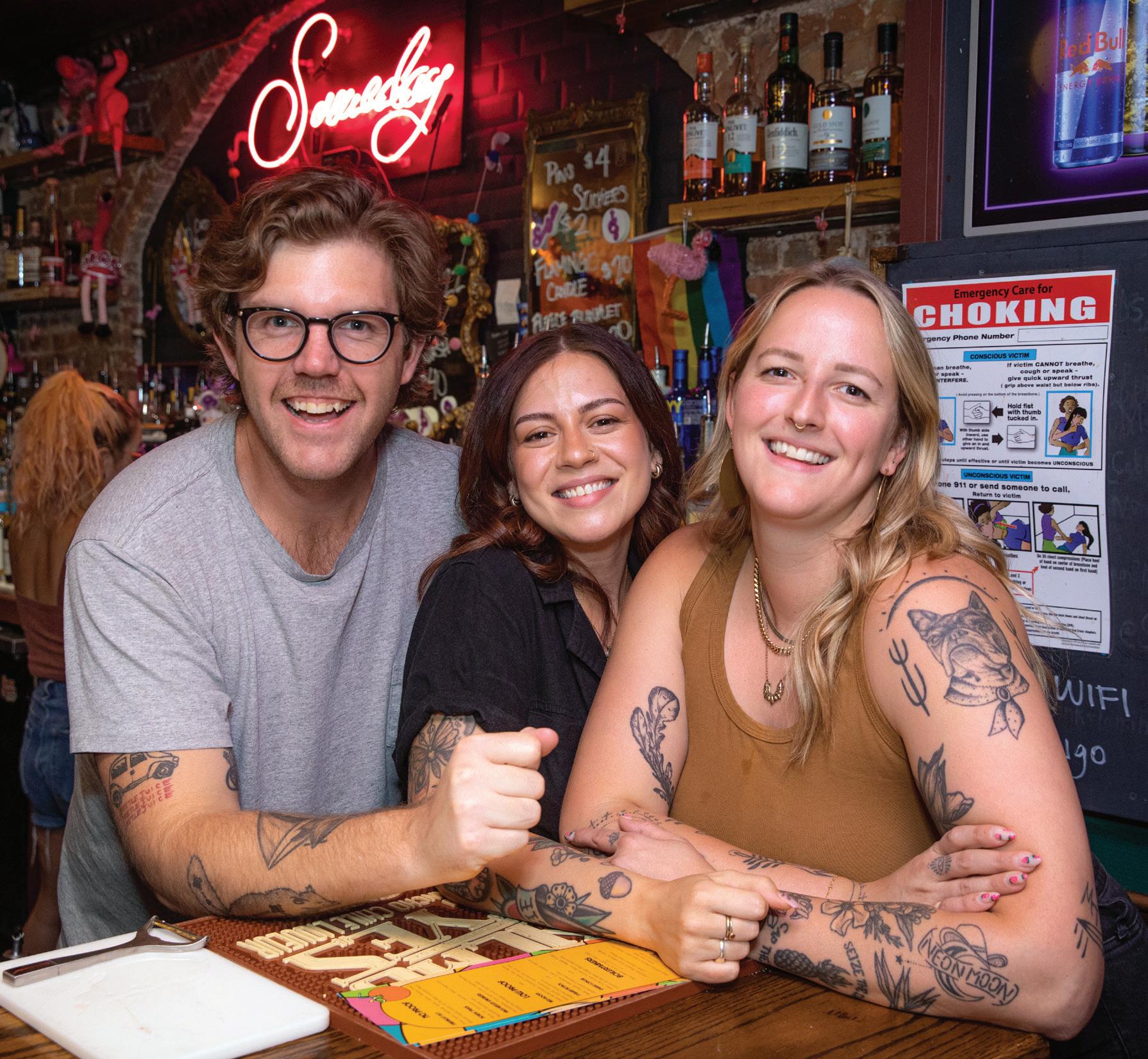

for historically underrepresented voices in the hospitality space across the country. We believe that professional development is the key to this change because opportunity, education, experience, and mentorship all equal access.”
Mentorship is particularly crucial, and Gunderson believes the industry could do much more in this area. Her advice for leaders looking to create more mentorship opportunities for bar staff? “Seek the answers for how to build a great team from within and don’t manage everyone in a blanket way.”
“One of the statistics we love about mentorship is that if you have a mentor at work, you are five times more likely to get promoted, but if you are a mentor at work, you are six times more likely to get promoted,” Gunderson adds. “Set your team up for success with mentorship and think outside of the box in pairings. People don’t need to look the same or have the same background to be paired together.”
Focus on Health advocates for wellness in the drinks industry, addressing a key challenge: bartenders often struggle in
FOCUS ON HEALTH HELPS HOSPITALITY PROFESSIONALS PRIORITIZE WELLBEING THROUGH VARIOUS PROGRAMS AND RESOURCES. THE NO/LOW TOUR, A NATIONWIDE EVENT SERIES, HIGHLIGHTS NON-ALCOHOLIC AND LOW-ABV COCKTAILS CRAFTED BY TOP
silence in a profession built around celebration. Co-founded in 2020 by Alex Jump and LP O’Brien during the pandemic, the organization was born from their own difficulties maintaining wellbeing in the industry. Their mission is simple—creating a healthier, more sustainable work environment for bartenders, servers, and chefs.
“Hospitality professionals dedicate themselves to serving others, often at the expense of their own health, struggling in silence and feeling isolated without clear resources for help,” Jump says. “We saw a critical need to address this imbalance and break the stigma around seeking support. Beyond that, the majority of hospitality workers are from marginalized backgrounds: women, people of color, queer folks. These people are often disadvantaged when it comes to their health and wellbeing.”
One of the biggest challenges, Jump explains, is balancing personal wellbeing with the demands of the job— long hours, late nights, high stress, and an industry culture where drinking and substance use are often normalized. It’s easy for workers to neglect their own needs, whether that’s sleep, mental
health, or even basic nutrition.
Focus on Health helps hospitality professionals prioritize well-being through various programs and resources. The No/ Low Tour, a nationwide event series, highlights non-alcoholic and low-ABV cocktails crafted by top bartenders, promoting mindful drinking while emphasizing creativity and community. The organization also partners with Another Round Another Rally to offer mentorship, scholarships, and access to industry conferences for professionals from underrepresented backgrounds. Additionally, Focus on Health provides educational resources, such as podcasts and workshops, to support career development and wellness. It also offers No & Low Beverage Consulting to help bars and restaurants develop zero-proof cocktail programs.
Jump says that restaurants and bars can better support staff by implementing policies like paid sick leave, PTO, and paid family leave. She also advocates for improved training programs, including sexual harassment prevention, bystander intervention, and conflict resolution, as well as better resources for employees struggling with mental health or substance use.
“We look at wellness from a holistic standpoint,” Jump says. “That doesn’t just mean you should be working out and eating a healthy diet. That also means that we should support the professional development and upward mobility of marginalized people in our industry to ensure they have a seat at the table and can move into leadership and ownership positions. It also means that we discuss the hard-to-talk-about topics of our industry, like the fact that the hospitality industry is number one for illicit drug use and substance use disorder and number three for binge drinking.”
To that end, Focus on Health is currently piloting a harm reduction and overdose prevention training program in Denver, which she says will take another year or so to fully bring to life. “In the long term, we hope to positively impact the hospitality industry so that people continue to see it as a viable and sustainable place to have a career,” Jump says.

Stop by and visit us at the National Restaurant Show Chicago | May 17–20, 2025
BOOTH #7057

Meet ZERO—the espresso machine that redefines precision, power, and performance. With no limits on creativity, control, or quality, ZERO puts the future of espresso in your hands. Featuring digital touchscreens, patented Flow Regulation System, and the original multi-boiler technology, ZERO is designed for baristas who refuse to compromise - delivering precision and exceptional espresso in every shot.
dallacorte.com/usa


Functional beverages are booming, especially in the energy drink category. Once associated with convenience stores and extreme-sport branding, energy drinks are now fi nding a home in cafés, restaurants, and foodservice venues—places where operators are seeking to meet evolving consumer expectations for health, performance, and personalization.
Today’s consumer wants more than just a caffeine jolt, they want ingredients with benefits. at’s why the functional beverage
How Monin is helping redefine energy drinks for café and foodservice operators.
category is rapidly expanding, with beverages o ering energy, focus, hydration, and even mood enhancement gaining traction across menus. is shi presents a unique challenge for operators: How do you meet demand for on-trend, be erfor-you beverages without overhauling your existing setup?
Monin, a leader in flavor innovation, is meeting this need with its new range of fl avored energy concentrates. Monin Brilliance Energy™ transforms sparkling water into bold, fruit-forward energy drinks with eye-catching electric hues. Each colorful blend combines functional ingredients like Co eeberry®, green co ee extract, L-theanine, vitamin B12, and guarana to deliver a refreshing jolt that tastes delicious. Designed with foodservice in mind, these concentrates o er operators a simple, scalable way to serve trendy, customizable energy beverages without adding complexity behind the counter.
Available in six natural and three sugar-free options, a 1 oz. serving (2 pumps) of Monin Brilliance delivers 80 mg of natural ca eine, e ortlessly transforming sparkling water into customizable energy drinks that are easy to build and serve. Because operators can create these beverages inhouse, there is no need to rely on more expensive canned energy drinks. e result is both menu innovation and cost savings over time.
is new solution is also built for scalability. From independent cafés to multi-unit national chains, Monin Brilliance integrates seamlessly into existing beverage programs with minimal training or equipment. As the lines between food, beverage, and wellness continue to blur, functional energy drinks are quickly becoming menu must-haves. Monin is helping operators lead the charge and stay ahead of the trend by o ering not just new fl avors but practical, scalable tools that enhance the guest experience and drive revenue.
With functional beverages here to stay, the question for foodservice operators isn’t whether to add energy drinks. It’s how to do it in a way that increases revenue, elevates the guest experience, and delivers sustainable cost savings. For a growing number of operators, Monin Brilliance might just be the answer.
To learn more, visit moninbrilliance.com .

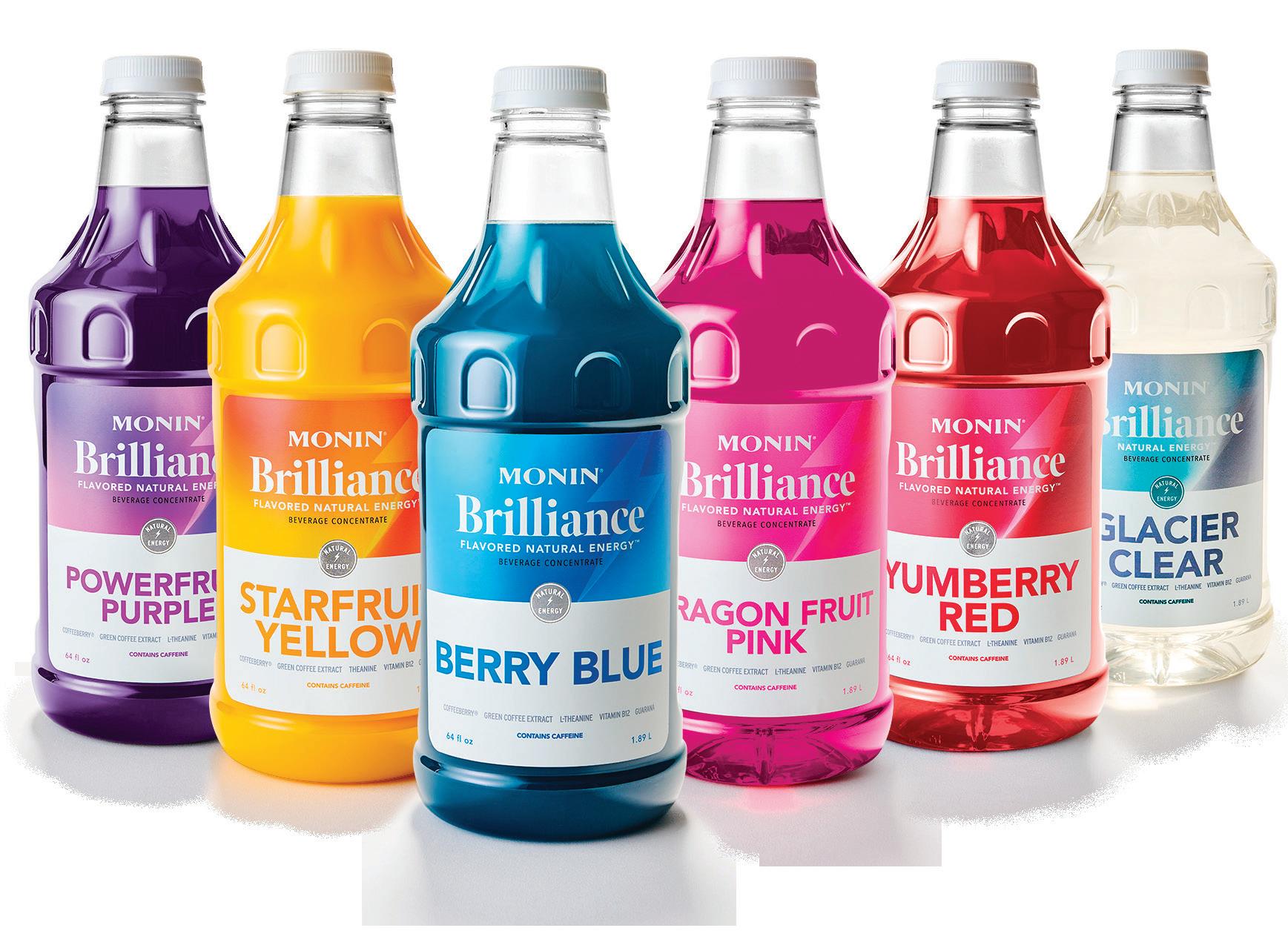
With just two pumps, Monin Brilliance Energy™ transforms sparkling water into vibrant, flavorful energy drinks. Available in 6 natural flavors and 3 sugar-free options.

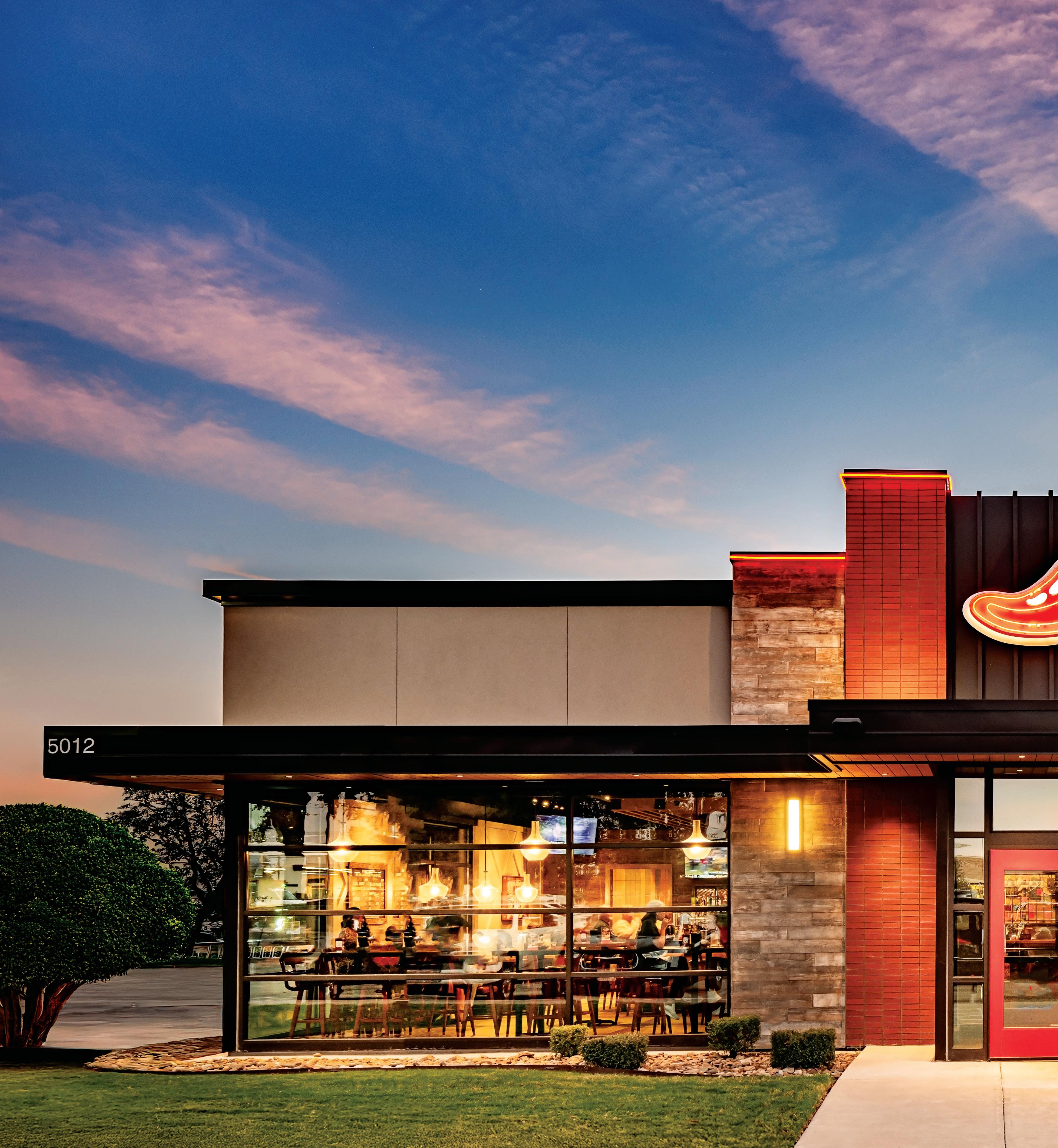
Following a massive multi-year turnaround play and several viral marketing moments, the 50-year-old legacy chain and its Baby Back Ribs are back, better than ever, and here to stay, thanks to turnaround architect and Brinker International CEO Kevin Hochman and his team.
BY CALLIE EVERGREEN

THE VOTES ARE IN, AND IT’S UNANIMOUS CHILI’S IS THE OFFICIAL COMEBACK KID OF THE YEAR (AND LAST YEAR). Just three years ago, it was a brand seemingly caught in the quicksand of nostalgia—fondly remembered, but not top of mind for modern consumers thinking about where to spend their dining dollars. Fast forward to today, and Chili’s is not only back in the national conversation—it’s dominating it.
The definition of a comeback kid: One who suffers significant defeats or setbacks, yet still manages to return to a position of success. Also: one who repeatedly demonstrates the propensity to overcome downturns or periods of bad publicity, and rebound to victory or popularity.
So, how did we get here? The truth is, no one in casual dining is close to Chili’s right now, from its sustained double-digit sales growth for three straight quarters to its continual ability to immerse itself in the cultural zeitgeist.
The other day, I caught myself singing the infamous “Chili’s Baby Back Ribs” jingle (and earworm) that was featured on the cult-favorite TV series "The Office," which was set in Scranton, Pennsylvania. Nearly 20 years later, the Chili’s permanent Scranton branch officially opened last month in April. The restaurant design pays homage to memorable moments from the show, from throwback chalk art murals to signature tile tables and a special photo booth—creating a time capsule for "The Office" fans and ChiliHeads, more often one and the same.
Former members of the cast even appeared in a classic TV commercial-style ad for the new location, like Melora Hardin who played Jan Levinson, Amy Pietz who plays Donna, a love interest for Michael Scott, and Andy Buckley who played David Wallace. In the ad, Buckley serves as a bartender and says, “Head in with your Scranton office co-workers for any occasion, like your Scranton office award show” (referencing the Dundie awards, naturally).
The retro branch rebooted the Awesome Blossom, a deep-fried onion appetizer cut in the shape of a blossom with pullable petals that was removed from menus in 2008, now exclusive to the location. Chili’s Scranton Branch merch also went live on April 7 with a pair of t-shirts that was available on the brand’s online store, welcometochilis.com.
At the time of opening, Chili’s chief marketing officer Geroge Felix said, “We’ve seen the brand come to life on screen through the years, and that includes being tied to Scranton despite never having a location there. That changes this year with our newest restaurant. A moment this big was way more than a pop-up could pay off, so we created Chili’s Scranton Branch to feel like a familiar home to fans complete with the perfect throwback menu
item in the Awesome Blossom, and we can’t wait for them to join us.”
This year, the brand celebrated its 50th birthday—the first Chili’s opened its doors on March 13, 1975 in Dallas— and has once again shown its mastery of not just marketing, but also overdelivering on its promises.
Chili’s ascension into pop culture couldn’t have happened without a powerful marketing engine. Led by Felix and VP of marketing Jesse Johnson— alums of KFC’s “Return of Colonel Sanders” campaign revival—the Chili’s team brought energy, irreverence, and authenticity back to the brand voice.
Earlier in 2024, the bar and grill chain went viral on TikTok with the launch of its Triple Dipper, where guests select three appetizers like Honey-Chipotle Chicken Crispers, Big Mouth Bites (mini burger slides with bacon, American cheese, sauteed onions, and housemade ranch), and, of course, the fried mozzarella sticks which produced the iconic “cheese pulls” everyone wanted to show off; the brand sold over 29 million Triple Dippers last year.
I think nearly everyone in the restaurant industry was watching and wondering: Will the massive attention and increase in Chili’s foot traffic and sales last, or will this be another social media gimmick or trend that slowly fades away? What is the line between a legendary restaurant brand celebrating nostalgia versus trying too hard to live in the past?
To answer those questions, we need to dig into Chili’s multi-year turnaround strategy, spearheaded by Kevin Hochman, president, CEO, and board member of Brinker International, Chili’s parent company based in Dallas. The former Yum! Brands executive and former KFC U.S. President took over as CEO of Brinker in 2022.
“The team is fired up; the leadership team just couldn’t be more excited about the turnaround of Chili’s and our company,” Hochman says, “and the reason why they’re so excited is that we’re making a lot of people feel special, which is the purpose and mission of Brinker and Chili’s.”

Let’s look at some stats for context. In the second quarter of 2025, the brand’s same-store sales saw a tremendous increase of 31.4 percent over last year— a staggering number for a casual restaurant brand in today’s challenging macroeconomic environment. Traffic lifted 19.9 percent, and the Triple Dipper accounted for 14 percent of sales, which is twice as much as a year ago and three points higher than Q1.
“This has been building, so I think for a lot of people who weren’t close to our story, which is the majority of America, I don’t think they realize how much stronger Chili’s had been getting the previous seven quarters before that plus-31 that we posted,” Hochman says. “I don’t think anybody would have guessed that Chili’s is doing comps better seven of the last eight quarters, so when you look at the progression of it, the previous two quarters we were double digit, and then we hit the 31.4, and so I think that really surprised everybody.”
Already, those numbers show true staying power. With more than 1,200 restaurants in the U.S., recent Circana traffic share data shows Chili’s was the number one casual-dining chain in 2024, with estimated consumer spend of nearly $5 billion last year and an estimated average unit volume of $4.2 million—which has grown 55 percent in the last three years. Internationally, Chili’s has restaurants across 29 countries and two territories, bringing its total systemwide unit count over 1,600.
“What most people don’t know about our story is they see the advertising on TV, and they see the social media presence, which is great. I mean, our CMO George Felix, it’s the fourth time I’ve worked with him, he is the best in the business, and he’s doing everything I thought he would do and more, and it’s working. It’s doing incredibly well,” Hochman says. “However, had we not done the hard work in the gym to fix the operation and make it really, really, really strong, I don’t think we would

KEVIN HOCHMAN (LEFT), CEO OF CHILI’S PARENT COMPANY BRINKER INTERNATIONAL, AND GEORGE FELIX, CMO, HAVE BEEN TWO OF THE GREATEST DRIVING FORCES BEHIND ONE OF THE RESTAURANT INDUSTRY’S MOST CELEBRATED COMEBACKS.
have these sustained results, and that has been the untold story of Chili’s.”
So, how did Chili’s go about fixing its operations? One of the earliest and boldest moves Hochman made was menu simplification. Chili’s eliminated over 25 percent of menu items, “so we can do fewer things and do them a whole lot better,” he notes. “That’s a hard thing to do and still grow sales the way we’ve grown.” A tighter menu allows for operators to execute at higher levels, and has contributed to the lowest guest problem scores and the best food-grade scores in brand history.
The second big-ticket item Chili’s focused on was labor; over $100 million has been invested in adding more hourly workers to ensure every restaurant is clean and providing excellent service with minimal wait times for guests. Even with
increased traffic, ticket and dining times have decreased because of more efficient and better trained staff who are turning tables faster.
Chili’s has slowed down new builds to redeploy that capital into its existing restaurants, and has invested hundreds of millions of dollars incrementally “to make sure that our restaurants are in the best possible condition they can be in, and that has been at the expense of building restaurants,” Hochman reveals. “If you talk to the restaurant teams, they’ll tell you that has made a huge difference. We’re talking about roofs, we’re talking about the actual structure of the facility, upgrading bathrooms and making sure equipment works, and doing all the things that you need to do to be a consistently well-run restaurant company.”
Turnover at the managerial levels is at an all-time low, while hourly turnover continues to improve. Hochman says the brand was ahead of the industry pre-pandemic, took a hit during the pandemic, and “never really recovered until


we started making these changes operationally a few years ago, and then we really made some significant improvements to turnover,” he admits. “We got teams that are more engaged. They’re excited to be there. They’re executing with a simpler menu, with the tools and resources that they need to be able to delight the guest, and then we’re winning with the guests, and that’s creating this cycle of winning.”
As far as why now was the right time culturally for Chili’s to make its grand comeback, Hochman points back to the basics of what people are looking for when they dine out: “They want to have an hour with friends and family or to meet people, they want to have food that they crave … key items they think about a lot when they decide where they’re going to go. They want to have it in a nice atmosphere that’s kind of fun and friendly with good service. And that sounds really simple, right? But there’s not that many people that do that right,” he says.
“There are some perennial winners in casual dining that have been doing it for years, and when you look at their secret sauce, that’s kind of it—it’s not that secret. But very few in casual dining were actually doing that consistently, and we wanted to be one of them, so we studied those guys, and then we went to town.”
Hochman and his team asked themselves, where are we today? Where do we want to be when we’re consistently winning? “And then we focused on those things very passionately. We stopped doing everything else and we said, how are we going to get back to the fundamentals of casual dining and doing that consistently,” he adds. “It doesn’t matter whether the economy goes soft or not, we have to continue working on these fundamentals. And if the economy were to go soft, that's just going to put us in a better position to win, because the guest is going to be more discerning about where they go.”
One of the biggest wins Chili’s is celebrating is earning the trust of guests who are confident they’ll have a good experience and get value for the dollars they spend. “On the core fundamentals
of casual dining, we have dramatically improved from where we were three years ago, and I think that’s making a huge difference,” Hochman notes.
A key to Chili’s ascent is how it flipped the value script in a period when consumers are looking for value while seeing the quick rise of fast food costs. Its “3 for Me” combo deal for $10.99—featuring choice of a starter, main, and beverage— offered a full meal experience at a price that undercut or at least matched fastcasual and quick-service competitors.
“About a year and a half ago, we saw guests starting to complain on social media about the rising prices of fast food, and they would take their combo meal receipt and they’d post it online and be like, ‘This combo meal was $18, this is crazy.’ And our social team picked that up and we said, ‘Wow, we ought to make an ad about that, because our combo meal is only $10.99,’” Hochman recalls. “There are a lot of [combo meals] over $10 and people use that as a kind of benchmark of relative value, and when you compare what you get a Chili’s, both the size of the burger or the variety of what you have, the unlimited chips and salsa, the bottomless drink, it’s kind of an unbeatable value versus when you compare that with fast food.”
Hochman will never forget May 1 of last year, when Chili’s made that direct comparison on a TV ad, specifically referencing the Big Smasher Burger—a heavy-hitting alternative to a certain fast-food burger with Thousand Island, American cheese, diced red onions, pickles, and lettuce. “The business just took off,” he says. “I think when we made that direct comparison to what was happening with fast-food prices for what you could get at Chili's, we were already doing well, but the business had a step change improvement when we turned on that advertising and we saw the articles being written about what Chili's was doing.”
He adds, “I think those are the two things that have been magic in our business right now—one is this idea that the core fundamentals of why you come to
casual dining, we've made significant improvements on where you get a very consistent good experience, and we see that in all our guest scores, and obviously we’ve seen that in the market share that we're gaining, and we're now the number one market share brand from a traffic standpoint, which we're very proud of. We’ve regained that after many years of not having that. And then two, having this unbeatable value that we've reframed versus fast food with this insight that people are really frustrated of what's happened with the fast-food promise.”
Chili’s had initially planned to remove the Big Smasher Burger from the 3 for Me deal in fall 2024, but ended up keeping it running due to its popularity. It not only tapped into the cultural conversation around fast-food prices—it
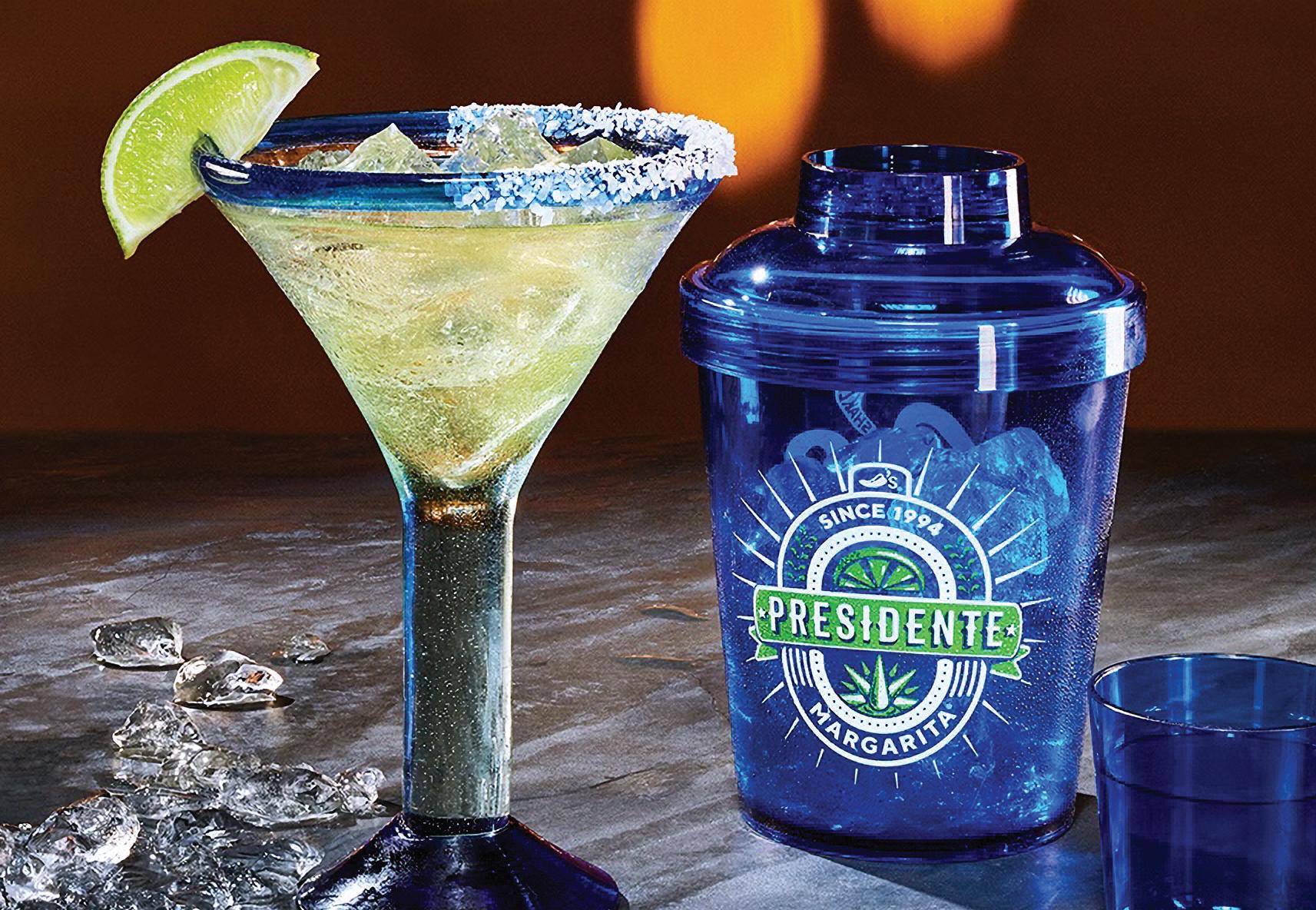
CHILI’S REFRESHED MARGARITA LINEUP OFFERS SOMETHING FOR EVERY PALATE, FROM $6 CLASSICS TO SUPERPREMIUM POURS.
drove traffic and frequency. A large percentage of new guests tried Chili’s for the first time because of the deal, and crucially, many came back.
Building on the foundation of its 3 for Me value platform, Chili’s reignited its advertising efforts in March 2023 and ramped up its social media presence. The brand began experimenting with bold, culturally relevant moves—partnering with singer Brian McKnight, reuniting R&B legends Boyz II Men to revive the iconic “Baby Back Ribs” jingle, and teaming up with “Vanderpump Rules” stars


Scheana Shay and Katie Maloney to debut a new Espresso Martini. Time and time again, we’re seeing the groundwork laid for Chili’s massive comeback throughout the past few years.
A crucial piece of the puzzle for Chili’s has been getting team buy-in. Hochman personally visits markets once or twice a month to hold listening sessions, where he asks managers what they would change tomorrow if they were in the CEO
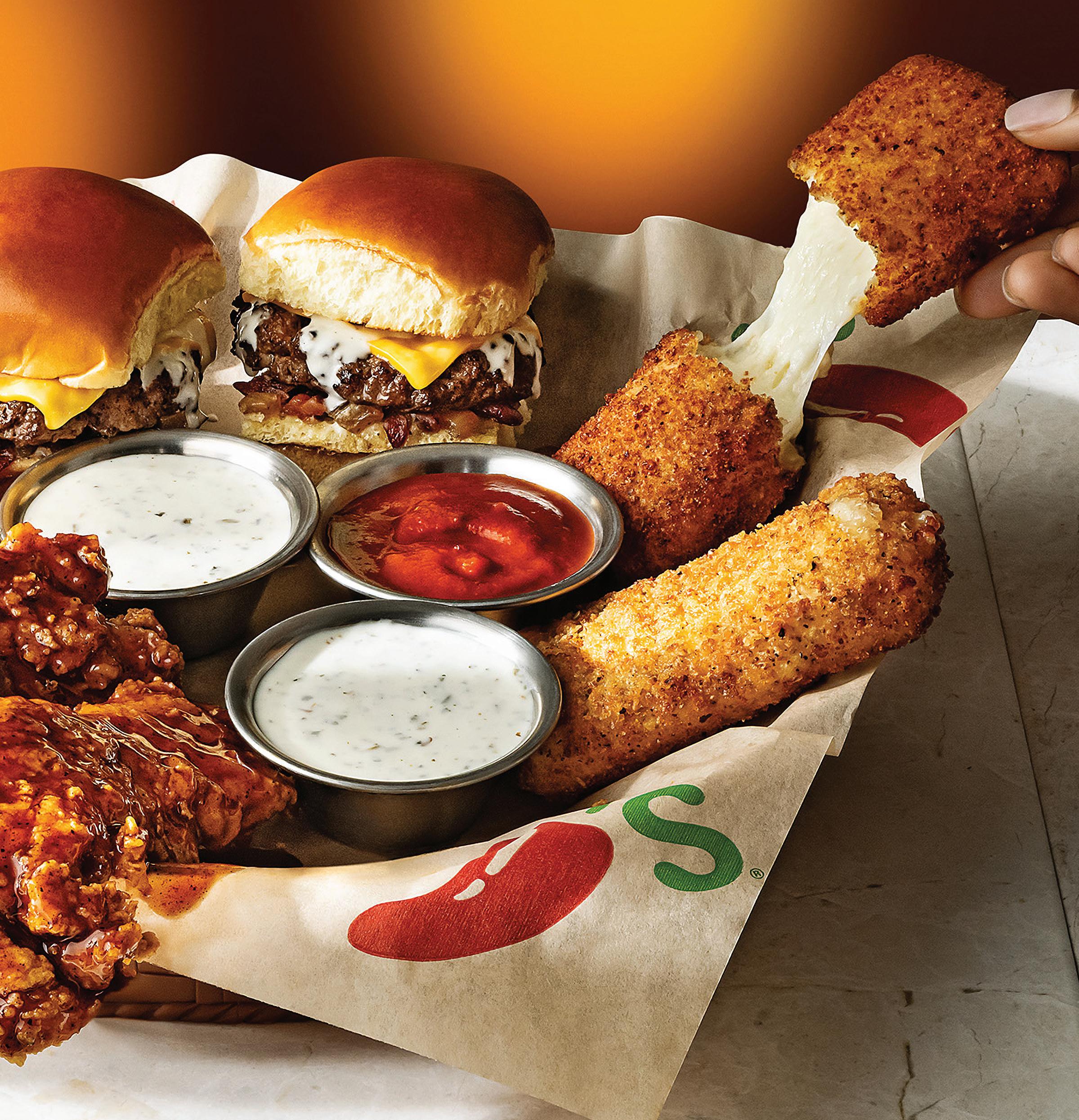

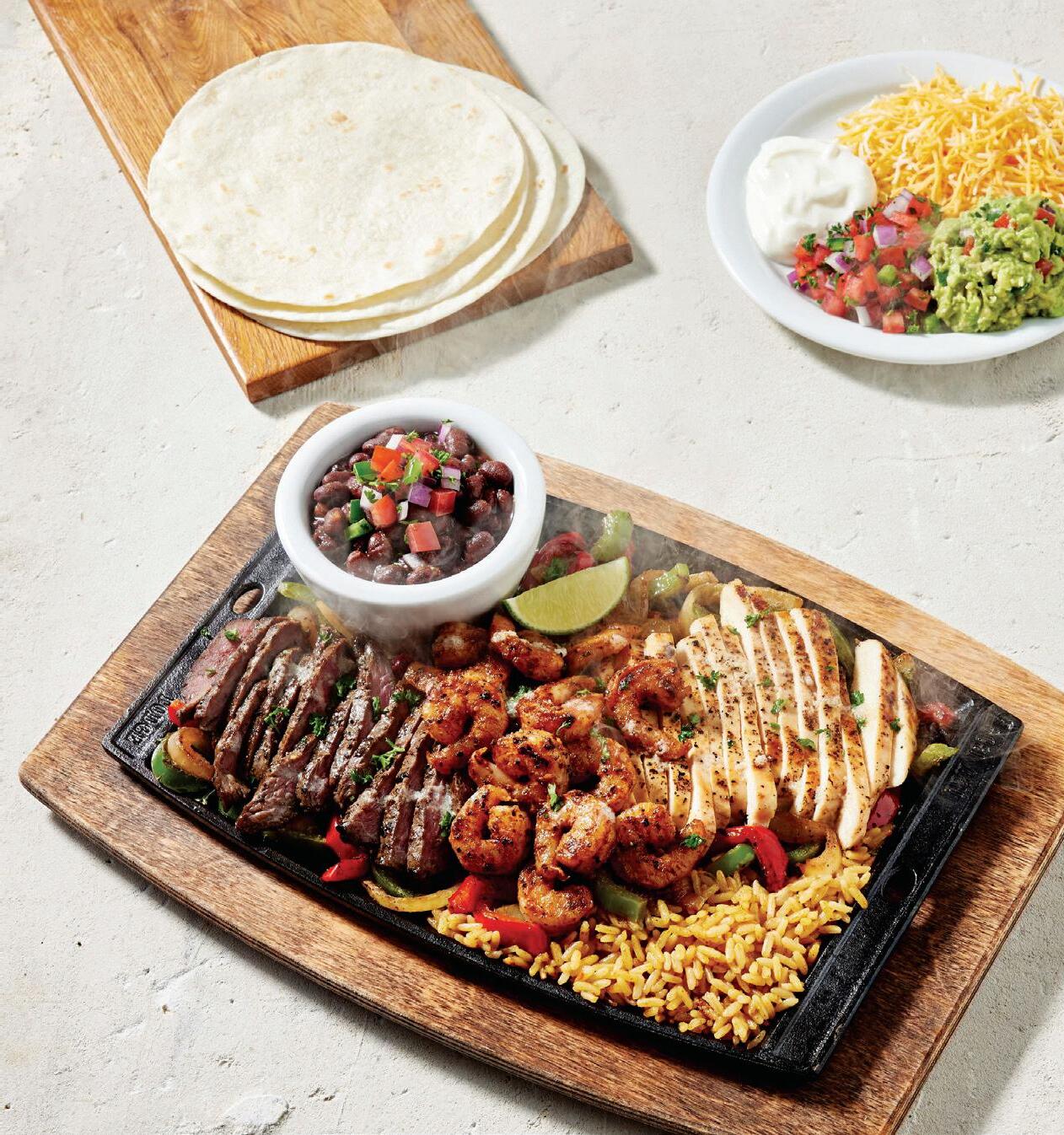
seat. “They love doing it, because they get heart, and they have a direct line to me, the CEO,” he says. “You’d be surprised how many great answers you get. Every time I do one of these, I get new ideas.”
Those listening sessions have led to sweeping changes across Chili’s restaurants—from tech upgrades to kitchen prep streamlining—all designed to make operations faster, easier, and more consistent. “Anything that creates friction for our team members to better serve the guests is our enemy,” Hochman says. We don’t like that, so we look at everything in the model. It’s not just 25 percent of the menu going away. It’s also prep steps, it’s administrative tasks that we ask the managers to do every day—can we streamline that? Because that’s not really helping them with the guests. Can we be ruthless about simplifying that?”
Take the brand’s former pay-at-thetable devices. When they malfunctioned, servers had to track down a manager to process a credit card—adding up
to 10 minutes to the guest experience. The solution? Switching to Ziosk tablets, which now work consistently and let guests pay on their own time without disruption. That seemingly small upgrade has drastically reduced service delays and improved customer satisfaction, Hochman explains.
In the kitchen, Chili’s upgraded to a new kitchen display system ( kds) that allows cooks to tap the screen and instantly pull up recipes—eliminating the need to flip through massive binders. When a fry cook requested an “allday counter” to display how many fried items like chicken tenders were needed across all tickets, Chili’s had the solution tested within a month and rolled out systemwide shortly after. “They’re handbreading chicken tenders, it’s not just dropping things from the freezer; they’re doing things from scratch, so it’s a tough job, especially when there’s so much volume coming in,” he says. “That's another example where we're using technology to make the job easier, and making sure that technology is actually reliable and works every time.”
Chili’s has also taken a hard look at prep work. Hochman recalls a recent idea from a market listening session that led to an impactful change: Instead of slicing avocados every four hours (a laborintensive and potentially dangerous task), Chili’s eliminated sliced avocado and began making more fresh guacamole daily. “I was like, that is a brilliant idea, because we’re going to get better product for everybody, we’re going to push more people into our fresh guacamole … and we get rid of an entire prep step, we just make more guacamole every day, and it’s a win for everybody,” he says. Guacamole is now used more widely across dishes, replacing browning slices with a fresher, more flavorful alternative.
“These ideas on prep steps are really important, and I think administrative duties are also a big deal,” he adds. On the admin side, Chili’s has slashed managerial burden with smart tech solutions. Artificial intelligence now handles inventory forecasting, freeing managers from hours of manual planning and allowing
them to focus more on hospitality. “We’d much rather have them coach teams and be out on the floor talking to guests,” says Hochman, and he envisions this AI approach expanding into scheduling and even product ordering.
Chili’s also built a self-service idea portal where any team member can submit suggestions. “The thing I’m most proud of is that most of these ideas that we’ve rolled out literally come from the field,” he says.
Chili’s employs over 70,000 team members—up from less than 60,000 just a few years ago when Hochman started. “We’ve had to add staff to the restaurants, and they are super fired up,” he says. During his listening sessions, it became clear to him “we needed to make the job easier, more rewarding, and more fun."
He continues, "When Chili’s was at its best, the job was really fun. People loved to come work at Chili’s, they loved to have a busy shift and interact with the guest.”
Hochman credits Aaron White, EVP and chief people officer at Brinker, for reinstating a lot of fun things in the restaurants, such as a “Culture Calendar” which brings planned team celebrations and recognition moments to the forefront each month. And as operational friction is removed and jobs become more manageable, there’s more space for those moments to thrive. “If the job’s easier, it gets more fun, and there’s more time to do fun things,” Hochman notes.
There’s a sense of pride team members feel when working for a thriving restaurant that’s constantly in the news, he adds, which guests notice and feel as well, which leads to bigger tips, manager bonuses, and more compliments from guests—going back to what Hochman described as the cycle of winning.
Chili’s has also turned its financial success into tangible benefits for employees. For the first time in years, the company lowered health insurance deductibles. It’s offering more flexibility for managers to improve work-life balance, and has a bold goal of having over three-quarters of its restaurant managers earn $100,000 or more annually. “I think we’re going to beat that goal faster,
so then how do we create an even bigger goal after that to continue to make these jobs more rewarding for our leadership,” he says.
What's Next? The Sky is the Limit Chili’s historic resurgence didn’t happen by accident. It was built on a framework Hochman calls the “Four Pillars”: food, service, atmosphere, and team members. Each pillar has guided a wave of transformation across the brand, and according to Hochman, the best is still to come.
“There is way more ahead of us to continue to improve than has already been improved,” he notes, “so we actually have way more runway ahead of us. I think everybody in this company believes that, I don’t think that’s just me. We see so much more upside in this turnaround, and so the sky’s the limit.”
When Hochman arrived, 40 percent of Chili’s sales came from what he calls the “Core Four”: burgers, Chicken Crispers, margaritas, and fajitas. That number has since climbed to 50 percent—and by the end of Q4, all four categories will have undergone significant upgrades, including a major fajitas relaunch. Each was approached with a “good, better, best” strategy: providing high-quality options at accessible price points, while offering guests the chance to trade up to something more premium.
For example, Chili’s $6 Margarita— made with premium tequila and served in an oversized glass—requires no app, coupon, or happy hour to enjoy. But for those seeking something higher-end, the chain offers upgraded versions like the Teremana Blanco Tequila Skinny Margarita or the Don Julio Marg and Casamigos Reposado Tequila Marg options.
This approach has already paid off. Sales of margaritas priced $10 and up have doubled since Hochman joined, giving Chili’s the flexibility to maintain its $6 price point without sacrificing margins. And food innovation hasn’t stopped there.
“There’s way more items that are still on the menu that we haven’t touched yet,” Hochman says, which means new menu items are on the horizon—includ-
ing a hotter, fresher queso with operational changes to reduce window time, and a reimagined ribs platform with smoked, lacquered ribs that promise an elevated flavor and texture.
“It’s not just about the recipes, it's also about the operational procedures to deliver that consistently for the guests and the way they want it. If they want piping hot queso, that’s going to be our plan on that,” he says.
Chili’s has also already spent hundreds of millions improving facilities, but a massive reimaging effort is about to begin. Brinker marketing VP Jesse Johnson is collaborating with senior director of architecture and real estate Jim Fay on a new prototype that aligns with Chili’s refreshed brand identity. The plan is to update 200 of the most outdated restaurants over the next few years, with the rest of the system to follow over an eight-year span.
Some Chili’s locations haven’t been reimaged in more than two decades, and Hochman expects those transformations to generate significant sales lifts— especially when combined with the brand’s elevated food and service standards. Meanwhile, technology investments will continue to drive efficiency and improve guest experience, including UX improvements for handheld ordering tablets that could eliminate unnecessary screen taps.
“We’ve got food flying out of the kitchen, the food is much better, the service is better, people are having fun, we’ve got a candidate pool knocking on our door, desperate to go work at Chili’s now because it’s the place to work— I mean, we’re really bringing back in a more modern and relevant way today what that essence of Chili’s was at its best. It’s back,” Hochman says.
“I think we were always a brand that people were rooting for, so now that we're winning again, I think people are really excited about it,” he adds. “The team is doing amazing, they are fired up about what’s happening, and they are excited to be a part of what might end up being the greatest restaurant turnaround in history. We’ll see.”


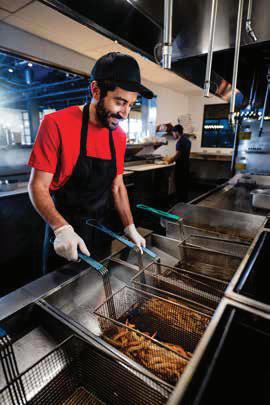
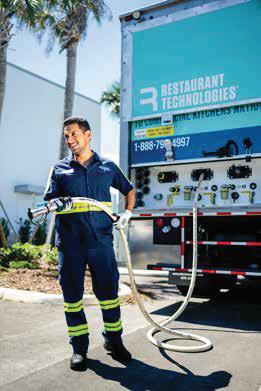




Here’s a sneak preview and handy guide to the must-see sessions at the Western Hemisphere’s largest foodservice event from May 17-20, 2025.
BY SATYNE DONER



This year’s keynote session will open with an introduction and presentation by Michelle Korsmo, president and CEO of the National Restaurant Association. She will then be joined by Carla Hall, an acclaimed chef, author, and television host, for a dynamic Q&Astyle discussion. Their conversation will highlight Hall’s passion for mentoring emerging talent and advocating for children’s well-being.
A graduate of Howard University’s business school, Hall began her career as an accountant before pivoting to fashion as a runway model. While traveling through Europe, she developed a deep love for food, leading her to transition once again—this time into the restaurant industry.
As a trained chef, Hall has worked in several upscale restaurants in Washington, D.C., and has been featured on numerous lifestyle television shows, including ABC’s Emmy Award-winning series “The Chew” and multiple Food Network programs.
Her latest cookbook, released in 2018, landed on several “Best Cookbook” lists nationwide and earned an NAACP Image Award nomination. She is also the author of “Carla and the Christmas Cornbread,” a heartfelt picture book inspired by her childhood in Nashville. The book celebrates
family traditions and features a child-friendly Christmas cornbread recipe.
Beyond her culinary work, Hall is an active member of several nonprofit organizations. She serves on the board of trustees for Helen Keller International, Pajama Program, GENYOUth, and 4-H.
Guided by her philosophy to “cook with love” and “live with joy,” Hall has built a career rooted in passion and purpose. In this featured session, she will share how this mindset has shaped her journey and her vision for empowering the next generation of foodservice professionals. She will also explore the evolving restaurant industry, the role of chefs in driving change, and how nontraditional career paths can lead to groundbreaking innovation. Attendees will be inspired by her vision for the future of food, where creativity, inclusivity, and community take center stage.
WHO
Carla Hall
Chef, author, and television host
Michelle Korsmo

President and CEO, National Restaurant Association
WHEN
Sunday, May 18, 2025, 1 p.m.
WHERE
Grand Ballroom, S100
FEATURED SESSION: TECHNOMIC
Lessons from the Winners
Led by Joe Pawlak of Technomic, this session will examine how industry leaders are addressing today’s most pressing topics, including sustainability, menu innovation, and enhancing the guest experience. Drawing from operator insights, consumer data, and real-world case studies, the discussion will highlight the hottest trends and strategies shaping the industry—regardless of business size. If you’re looking for your next game-changing idea, this session is not to be missed.
WHO Joe Pawlak
Managing Principal of Technomic
WHERE:
Grand Ballroom, S100
WHEN:
Monday, May 19, 2025
1 p.m.

From
In today’s market, each generation has unique expectations—gone are the days of a one-size-fitsall approach. From Gen X to Gen Z, this session explores how full-service restaurants, convenience stores, and colleges are adapting to the evolving foodservice landscape while staying true to their brand values.
WHO:
Mindy Armstrong
VP, Menu Innovation, Ascent Hospitality Management, Perkins and Huddle House
Jennifer DiFrancesco
Director of Culinary Innovation, Sodexo Campus
Steve Madonna
Senior Director of Culinary, Marlin Connections
Tom Smith
Director of Culinary Innovation, Papa Johns
WHERE Room S404
South Building, 4th Floor
WHEN
Saturday, May 17, 2025
1 p.m.-1:45 p.m
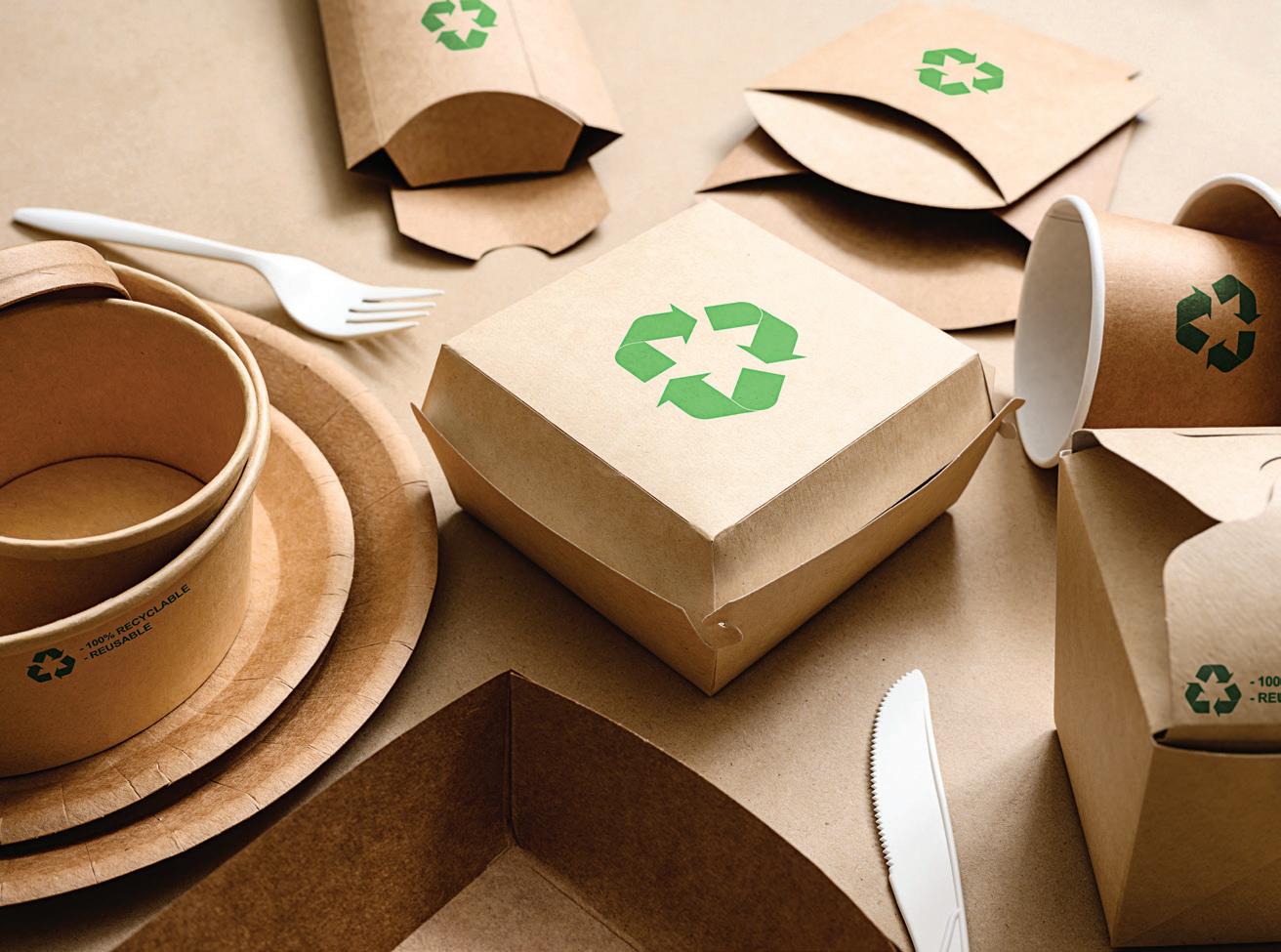

AI: A Culinary Catalyst of Creativity Killer?
Can AI drive culinary innovation, inspire creativity, elevate menu development, and reshape the dining experience? This ses-

sion will explore AI’s role as a culinary catalyst while emphasizing the importance of human expertise. Gain insights from an industry expert who has firsthand experience—and take part in a unique sideby-side tasting of an AIgenerated recipe versus a chef-crafted creation.
WHO
Renée Howarth
Associate Director Culinary at Marlin Connections
WHERE Room S503
South Building, 5th Floor
WHEN
Saturday, May 17, 2025
1 p.m.-1:45 p.m.
PANCAKES FROM PERKINS
Mental health isn’t just an HR conversation—it’s a business imperative. In this session, Dan Simons shares his playbook for prioritizing mental well-being in the workplace to drive both profitability and longterm sustainability. Drawing from insights gained while leading a multi-million-dollar operation with more than 1,400 employees, Simons will outline a step-by-step strategy to help operators develop both short- and long-term mental health initiatives.
Attendees will learn how investing in employee wellbeing leads to measurable returns, both directly and indirectly, improving team performance and overall business success.
WHO
Dan Simons
Co-Founder at Founding Farmers Restaurant Group
WHERE Room S504
South Building, 5th Floor
WHEN
Saturday, May 17, 2025
2 p.m.-2:45 p.m.
Maintaining brand integrity and standards while expanding into new markets is essential for franchisee success and long-term growth. Whether you’re scaling locally or globally, this session features industry experts sharing insights on effective franchisee selection, quality control, and strategies for enhancing customer satisfaction—all while allowing for thoughtful local adaptations.
WHO
Jake Barden
Senior Vice President of Franchise Sales, Dine Brands
Lynette McKee
Senior Vice President, Franchising, Potbelly Sandwich Works
Lori Osley
VP of Franchise Development, Qdoba Restaurant Corporation
Devin Schneider
Director of Brand Development, Jeremiah’s Italian Ice
WHERE
Room S503
South Building, 5th Floor
WHEN
Saturday, May 17, 2025
2 p.m.-2:45 p.m.
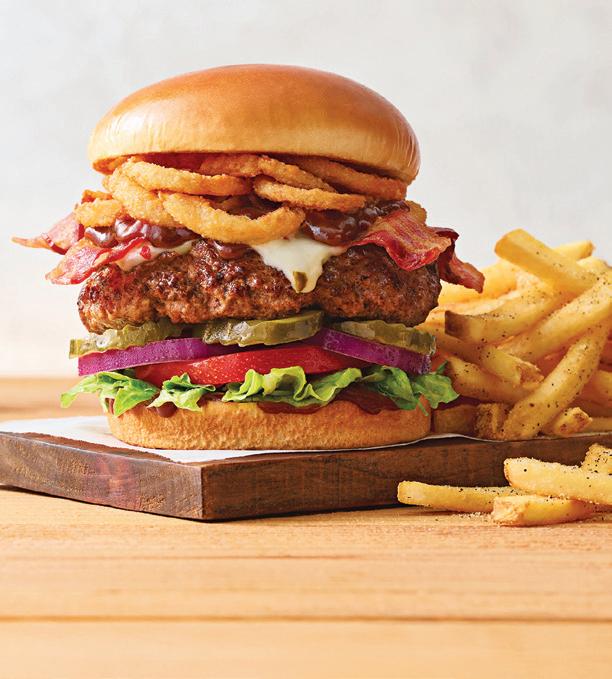
Since 2022, more than 40 anti-DEI bills have been introduced in over 30 states, with 14 signed into law—primarily targeting large educational institutions despite ongoing critiques. This session will explore strategies to sustain workplace inclusion and demonstrate how DEI initiatives align with overall business goals. Speaker Erika Cospy Carr will emphasize that workshops alone are not enough to validate the value of DEI; instead, building a culture of accountability and a strong infrastructure is essential for lasting impact.
WHO
Erika Cospy Carr
Vice President, The Multicultural Foodservice & Hospitality Alliance (mfha)
WHERE
Room S502
South Building, 5th Floor
WHEN
Sunday, May 18, 2025
10 a.m.-10:45 a.m.
Studies show that about 1 in 8 U.S. adults have used a GLP-1 drug like Ozempic or Mounjaro—a number that is expected to rise. This trend surpasses any single lifestyle diet in scale and is set to make a significant impact on the restaurant

Are you ready to witness culinary excellence live on stage? This year’s National Restaurant Association Show hosts food and beverage demos by restaurant masters at the top of their game. Be sure to stop by: The Culinary Experience, Lakeside, 12448

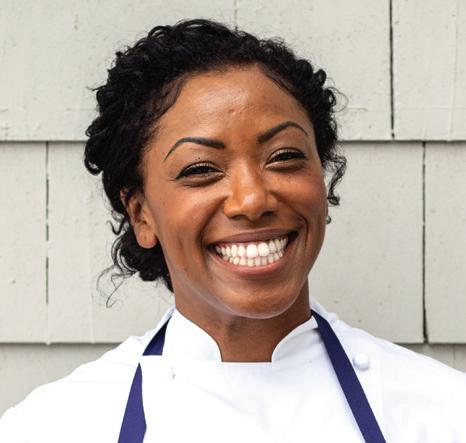


Chef Rick Bayless AWARD-WINNING CHEF, RESTAURATEUR, AUTHOR, AND TELEVISION PERSONALITY
OWNER: FRONTERA GRILL, TOPOLOBAMPO, XOCO, BAR SÓTANO, TORTAS FRONTERA, FRONTERA COCINA, TORTAZO
WHEN:
Saturday, May 17, 2025 10:30 a.m.-11:45 a.m.
Chef Nyesha J. Arrington
CHEF, TELEVISION PERSONALITY, AND RESTAURATEUR
OWNER: NATIVE BY NYESHA WHEN: Monday, May 19, 2025 11:30 a.m.-12:15 p.m.
Chef Jet Tila
CHEF, RESTAURATEUR, AUTHOR, AND TELEVISION PERSONALITY
PARTNER: DRAGON TIGER NOODLE CO., PEI WEI, COMPASS GROUP, SCHWAN’S CJ FOOD, HSN, NBC UNIVERSAL/DREAMWORKS
WHEN: Monday, May 19, 2025
2 p.m.-2:45 p.m.
Chef Jonathon Sawyer
AWARD-WINNING CHEF, RESTAURATEUR, AUTHOR, TELEVISION PERSONALITY
OWNER: THE GREENHOUSE TAVERN, NOODLECAT, TRENTINA, ADORN BAR & RESTAURANT, KINDLING
WHEN: Tuesday, May 20, 2025 12:00 p.m.-12:45 p.m.

industry. In this session, operators will learn how to introduce innovative menu options that appeal to this growing demographic while staying true to their brand and without overhauling their entire menu.
WHO
Rachel Royster Director, Strategic Planning & Innovation, CSSI/Marlin Connections
WHERE
Room S504
South Building, 5th Floor
WHEN
Sunday, May 18, 2025
10 a.m.-10:45 a.m.
Sponsored by Campbell’s Foodservice, this session will spotlight emerging foodservice concepts and the bold ideas reshaping customer expectations. Learn how industry leaders are staying ahead of the curve and leveraging the latest trends for success— in the kitchen, the dining room, and beyond.
WHERE Room S406
South Building, 4th Floor
WHEN
Sunday, May 18, 2025
10 a.m.-10:45 a.m.
If you have a successful restaurant concept and are ready to franchise to accelerate growth, it’s time to ask yourself these 10 key questions as a reality check before taking the leap. This session will guide you through evaluating your unique selling proposition, analyzing essential financial viability metrics, and establishing operational systems that support a franchise model while aligning with legal requirements.
WHO
Kendall Ware
Former COO, Walk-On’s Sports Bistreaux
WHERE Room S503
South Building, 5th Floor
WHEN
Sunday, May 18, 2025
10 a.m.-10:45 a.m.

This session will explore the power of building authentic connections through grassroots marketing by leveraging local micro-influencers and patrons to boost brand awareness, foster strategic community partnerships, and empower staff to become passionate brand advocates, driving organic growth.
WHO
Sharyn Knight Director of Marketing, VIVA Chicken
Amanda Quinn Director
of Catering, VIVA Chicken
WHERE Room S504
South Building, 5th Floor
WHEN
Sunday, May 18, 2025
11 a.m.-11:45 a.m.
Building
This hands-on workshop will equip participants with strategies to create a unique restaurant concept that appeals to both investors and customers.
Speaker Chip Romp will guide you through the key elements of a successful restaurant business plan, including financial planning, daily operations, and identifying potential funding sources. Whether you're a new restaurant owner or simply interested in the process, this session is for you.
WHO Chip Romp Sr. Director, Workforce and Business Services, RestaurantOwner.com
WHERE Room S505
South Building, 5th Floor
WHEN
Sunday, May 18, 2025
11 a.m.-11:45 a.m.
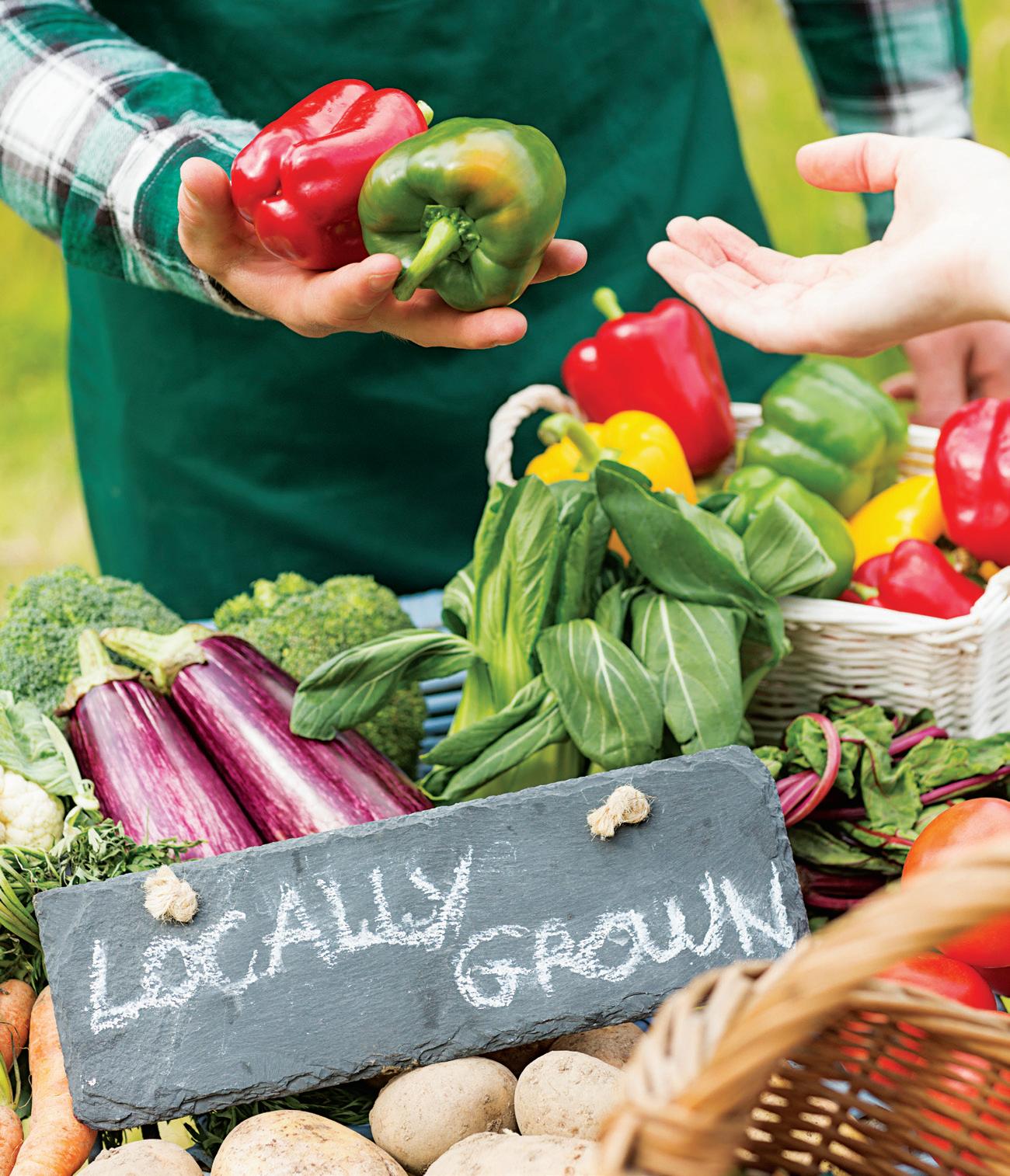
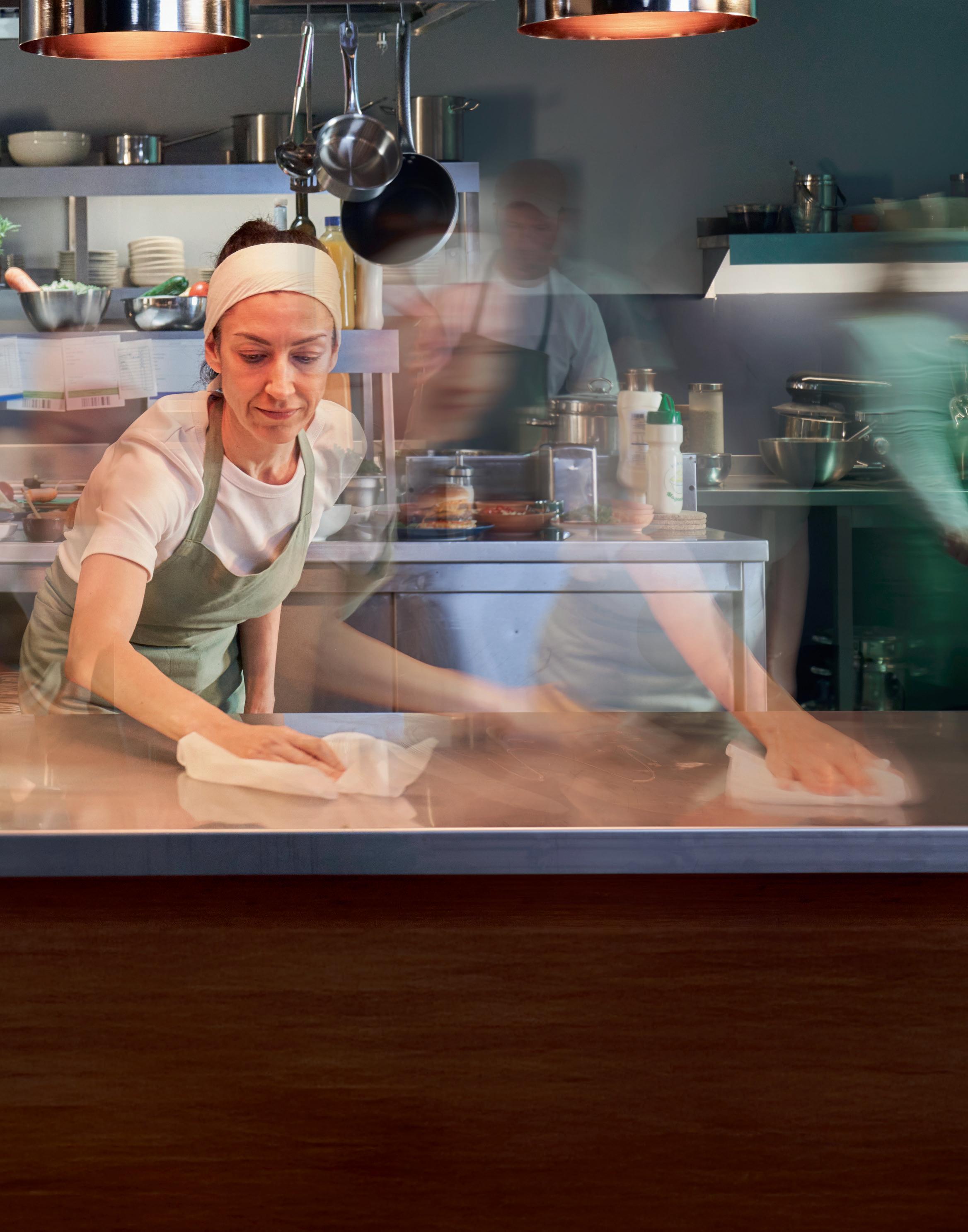
Discover how Tork sustainable hygiene solutions can make cleaning more efficient across the full house, giving staff more time to focus on guests. Better hygiene for better guest experience

In an era where digital crime and threats are at an all-time high, restaurant owners and team members must understand the risks at hand. While IT and cybersecurity roles are growing, having a solid foundation in security is essential to protect restaurant operations. This session will offer a comprehensive overview of cybersecurity, providing strategies to safeguard customer information and ensure business continuity in the event of a system failure.
WHO
Bryan Meredith Restaurateur Coach and Speaker, Bryan Meredith Coaching
WHERE Room S405
South Building, 4th Floor
WHEN
Sunday, May 18, 2025
11 a.m.-11:45 a.m.
Strong Partnerships: Best Practices for Working with Foodservice Distributors
Strategic purchasing and building strong relationships with vendors are key to maintaining profitability. This session will help attendees understand the pros and cons of broad-line versus specialty distributors, effective communication and collaboration strategies, and ways to enhance bargaining power in a competitive, complex landscape.
WHERE
Room S406
South Building, 4th Floor
WHEN
Monday, May 19, 2025
11:30 a.m.-12:15 p.m

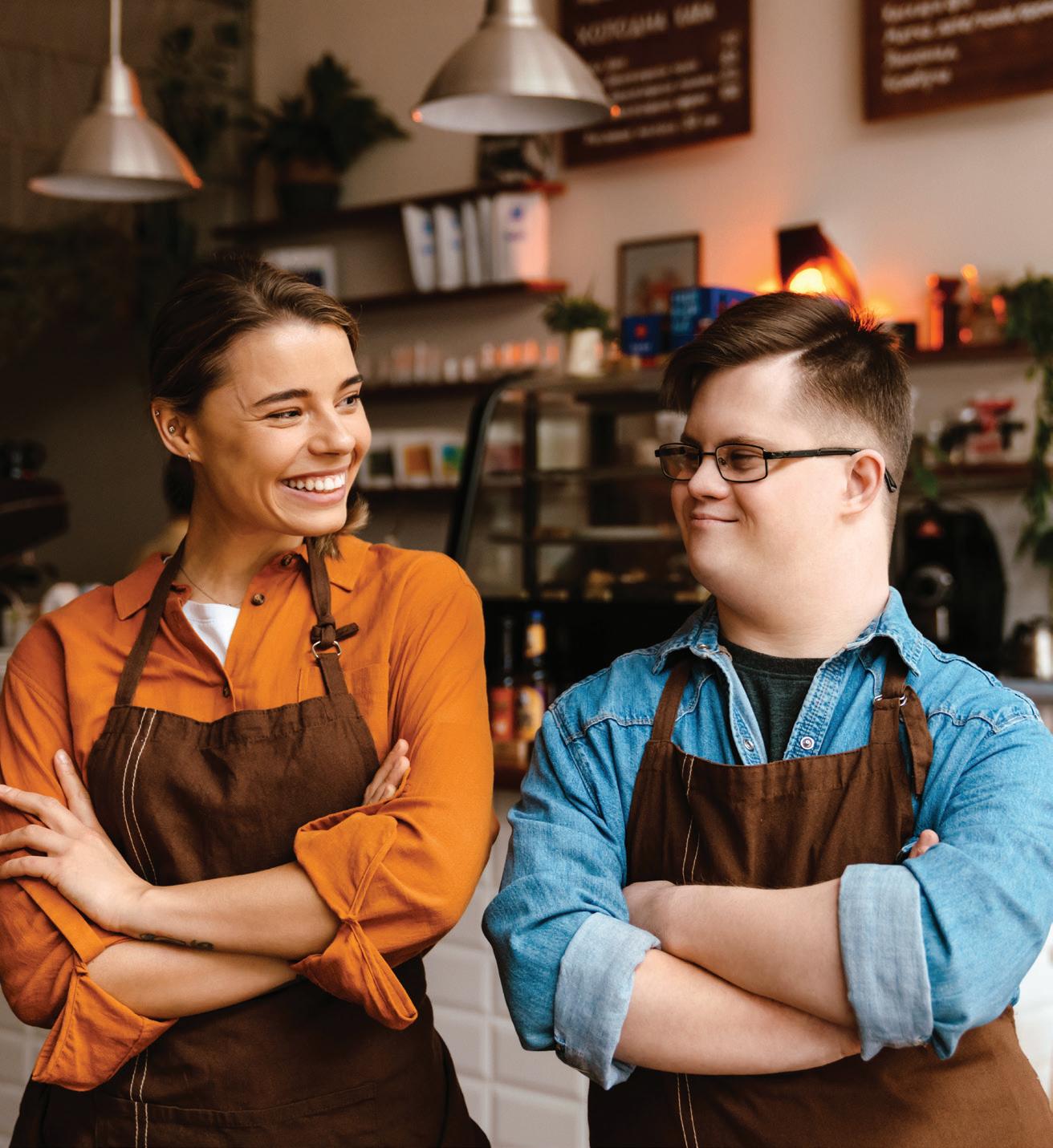
Inclusive employment is vital for all businesses.
A national survey found that 87 percent of respondents prefer to do business with companies that hire individuals with intellectual and developmental disabilities (idd). This session will explore the social and economic benefits of inclusive employment and share best practices for hiring and managing employees with disabilities.
WHO Noelle Alix Founder, BeanZ & Company, LLC
Kim Morrison Founder, BeanZ & Company, LLC
WHERE
Room S503
South Building, 5th Floor
WHEN Monday, May 19, 2025 11:30 a.m.-12:15 p.m.
Want to drive traffic and sales without relying on discounts? This session will explore alternative strategies for creating a value proposition that drives trial, newness, and repeat visits, ultimately strengthening unit economics over the long term. Attendees will learn how to reframe their brand’s message to resonate with customers and leverage technology to inspire engagement and loyalty.
WHO Alexis Gillette
Vice President of Marketing, Dunn Brothers Coffee
WHERE Room S406
South Building, 4th Floor
WHEN Monday, May 19, 2025 11:30 a.m.-12:15 p.m.







Talented and Ready to Serve! Increasing Young Adult Employment and Advancement in Restaurant & Hospitality
The National Restaurant Association Educational Foundation conducted focus groups and surveys with employers and young adults (ages 18-24) to understand why they enter the industry, what motivates them to stay, and why they leave. This session will provide valuable insights on how to develop strategies to attract, hire, and retain this influential group that is making a significant impact on the industry.
WHO
Patricia Gill Director of Workforce Development, National Restaurant Association Educational Foundation
WHERE
Room S405
South Building, 4th Floor
WHEN
Monday, May 19, 2025
11:30 a.m.-12:15 p.m
As most restaurants integrate a tech stack into their strategies, maintaining strong relationships with technology vendors is crucial. But how do you know when a tech vendor partnership no longer aligns with your business objectives, costs, or operational needs? This session will guide you through identifying those signs and pro -
vide a structured approach to ending partnerships smoothly. From reviewing contracts to handling data migration and training staff, you’ll learn how to avoid disruptions and ensure a seamless transition.
WHO
Patrick Yearout
Director of Innovation, Ivar’s Restaurants
WHERE
Room S502
South Building, 5th Floor
WHEN
Monday, May 19, 2025
11:30 a.m.-12:15 p.m.
Now that you have a winning restaurant concept and business plan, it’s time to secure the right funding to bring your dream to life. This session will break down various funding sources, from bank loans to private investors, and cover important metrics such as break-even analysis and cash flow projections. Additionally, attend -
ees will gain insights on how to structure a persuasive pitch and develop realistic financial projections that will appeal to lenders and investors.
WHO
Sara Nickel Bray Vice President, Workforce and Business Development, RestaurantOwner.com
WHERE
Room S505
South Building, 5th Floor
WHEN
Monday, May 19, 2025
11:30 a.m.-12:15 p.m
If you've ever dreamed of bringing your restaurant's signature dish, sauce, or snack food to the masses through merchandising, this session will guide you through the process, from ideation to commercialization. Learn from industry experts about navigating FDA and local regulations, tracking performance post-launch, and devel-
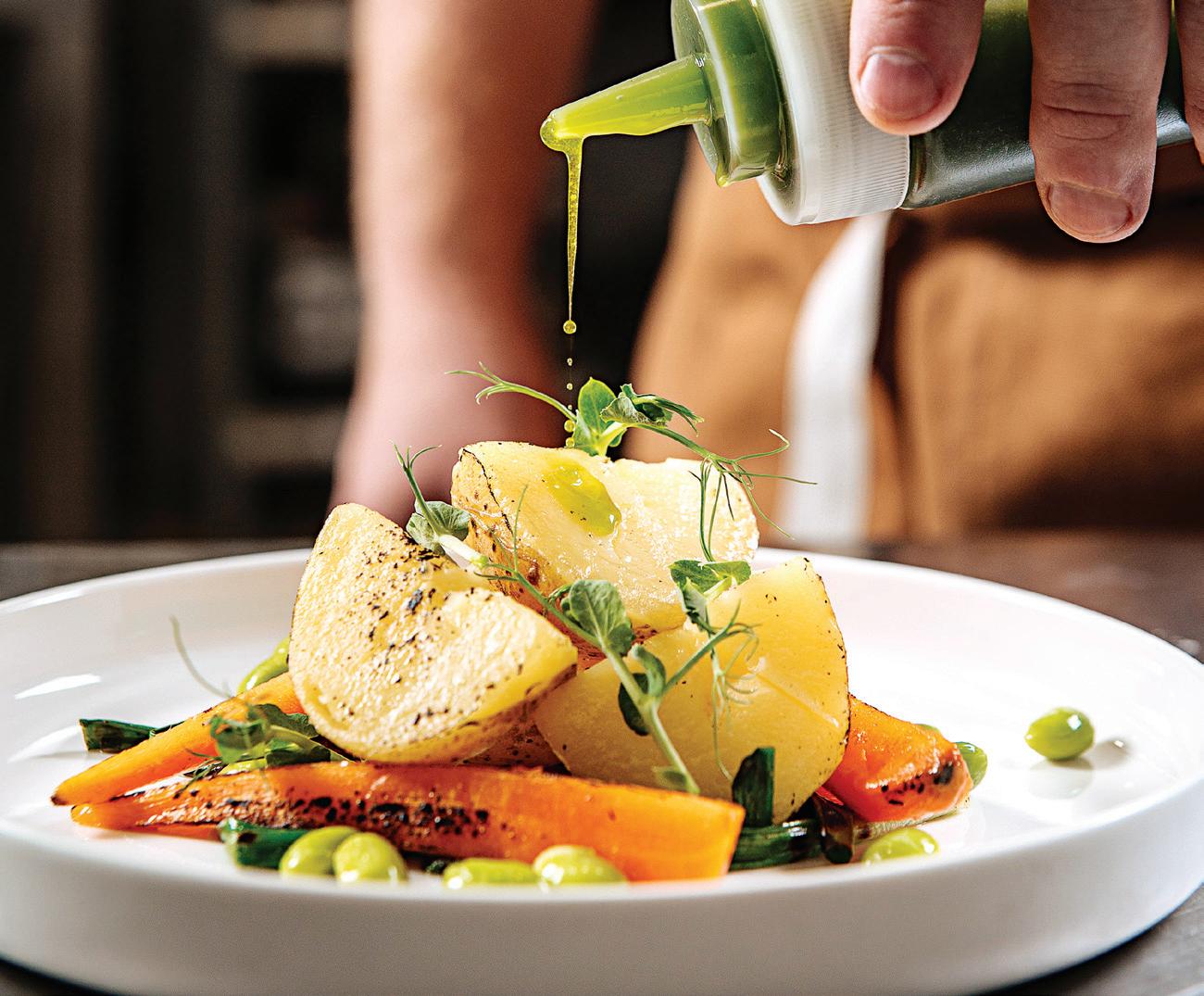
oping effective marketing strategies to ensure success in the retail market.
WHO
Jeff Binczyk Director, Friedman Center for Entrepreneurship, Johnson & Wales University, College of Business
Ruben Morawicki
Association Professor, Director of Ecolab Center for Culinary Science, Johnson & Wales University, College of Food Innovation and Technology
Lynn Tripp
Associate Professor, Johnson & Wales University, College of Food Innovation and Technology
WHERE Room S504
South Building, 5th Floor
WHEN
Monday, May 19, 2025 11:30 a.m.-12:15 p.m.
Snacking has evolved into a full-fledged alternative to traditional meals, with increasing demand for health-conscious snacks and on-the-go meal solutions. Discover how restaurants and retailers are adapting to this trend with innovative snack options for both on- and off-premise consumption, and learn how to stay ahead of the curve in a rapidly changing market.
WHO
Suzy Badaracco President, Culinary Tides Inc.
WHERE Room S403
South Building, 4th Floor
WHEN Monday, May 19, 2025 11:30 a.m.-12:15 p.m
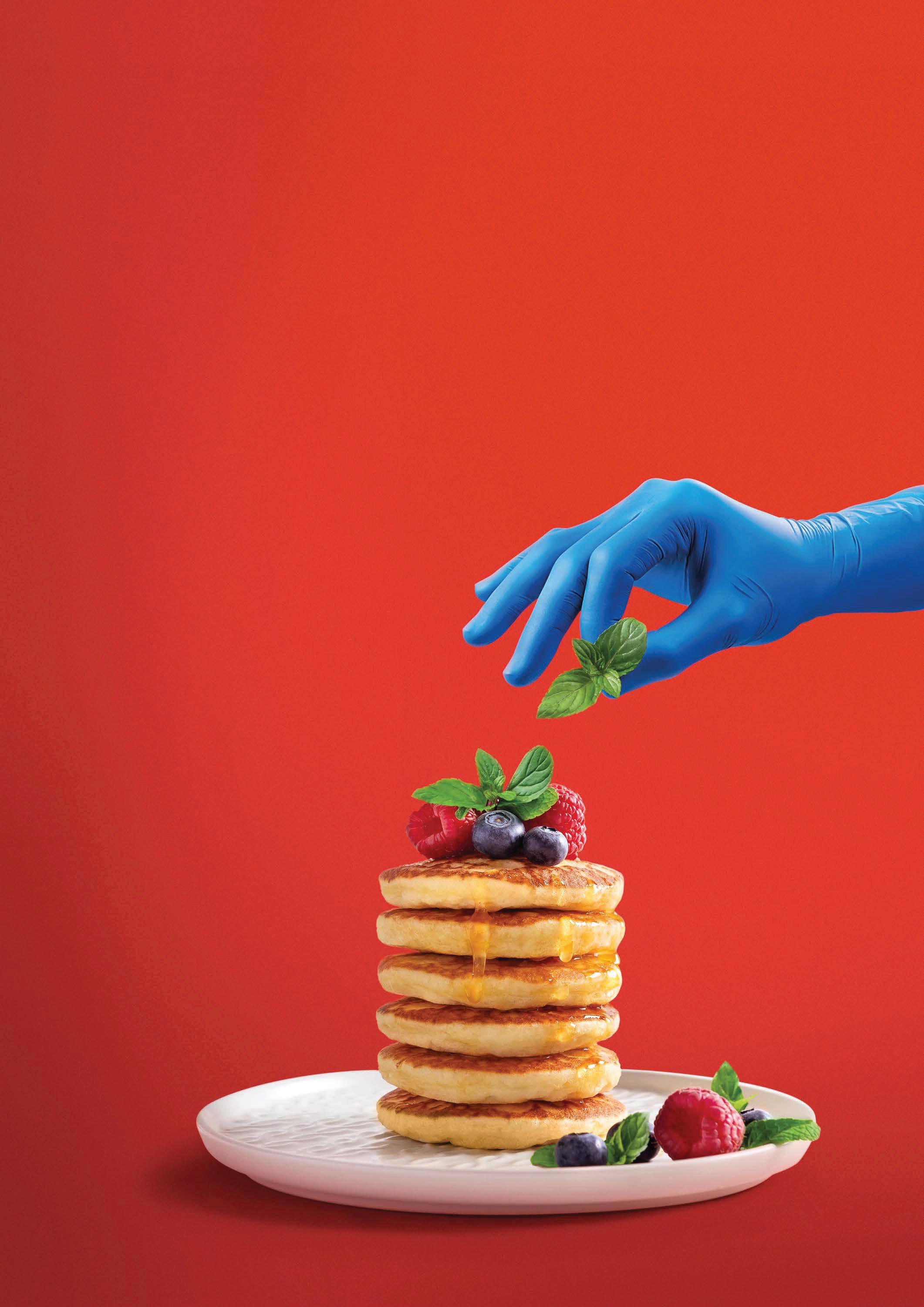
With inflation driving up food, labor, and rent costs, menu price increases are inevitable. While this decision can be challenging— balancing expenses and customer satisfaction— it doesn't have to be difficult. This session will present industry-proven best practices for raising menu prices in a way that customers will understand and accept.
WHERE Room S502
South Building, 5th Floor
WHEN
Tuesday, May 20, 2025
10 a.m.-10:45 a.m.

Predictive Personalization is a technique that uses customer data and AI tools to anticipate what customers will want in the coming days, weeks, or months.
This session will teach you how to leverage this technique to create tailored offers, products, and mes -
sages that resonate with your audience, driving sales, loyalty, and revenue growth.
WHO
Brittany Oat
CEO and Founder, bSocial Strategy
WHERE Room S503
South Building, 5th Floor
WHEN
Tuesday, May 20, 2025
10 a.m.-10:45 a.m.
Looking to introduce and pilot new processes, technologies, and menu offerings without disrupting existing workflows?
This session will explore best practices for rolling out new operations with a flexible framework, whether you operate a single unit or an entire fleet of stores. In today’s competitive environment, agility is key—and this session will show you how to achieve it.
WHO
Brooke Dusenberry
Senior Designer Environments, WD Partners
Joanne Heyob
SVP, Operations Strategy & Design, WD Partners; Rob Seely, AVP, Operations Strategy & Design, WD Partners
Mike Guinan
Vice President of Restaurant Operations, White Castle
WHERE Room S504
South Building, 5th Floor
WHEN
Tuesday, May 20, 2025
10 a.m.-10:45 a.m.
Who Closed

Attract and Retain Great Crew Members by Teaching them the Business and Making it Fun
This session will show you how to achieve a dedicated workforce with strong retention rates and management pipelines in fast-paced, high-turnover, multi-unit restaurants. By opening the books and teaching employees business and financial literacy, you can empower your team to build meaningful careers while driving profitability and sustainable growth.
WHO
Eric Bishop Director of Training and Development, Burgatory Alexis Bovalino
HR Director, Burgatory/ Shorty’s X Anne-Claire Broughton Principal, Broughton Consulting, LLC
WHERE Room S504
South Building, 5th Floor
WHEN
Tuesday, May 20, 2025, 11:00 a.m.-11:45 a.m.
Don’t let rising food prices compromise your flavor quality. Chef Adrianne Calvo will break down the crucial components of food costs and show you how to identify areas for potential savings without sacrificing flavor. Through intentional menu engineering, this session will teach you how to design menus that highlight high-margin items while maintaining quality and keeping your guests coming back for more.
WHO
Adrianne Calvo, Executive Chef, Owner, Author, Host, Chef Adrianne’s Vineyard Restaurant and Bar/ Maximum Flavor
WHERE Room S502
South Building, 5th Floor
WHEN Tuesday, May 20 2025
11:00 a.m.-11:45 a.m.






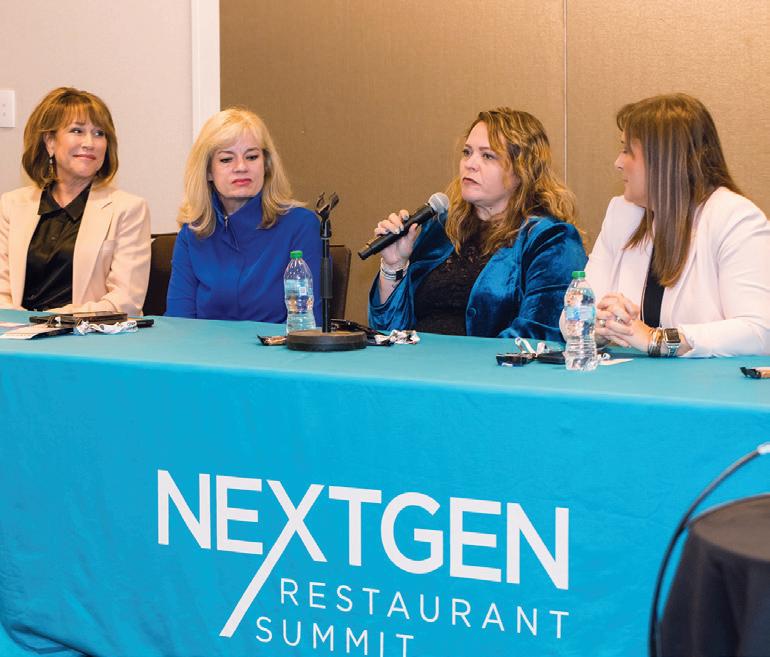


















































The eatertainment concept’s team of dynamic women leaders are proving that community, inclusivity, and great food can all come together on the pickleball court.
KELLI ALLDREDGE isn’t your typical brand president. Before taking the helm of the chef-driven eatertainment concept, she was a Kansas City Chiefs cheerleader and a devoted patron of Chicken N Pickle. In 2016, she met up with her tennis friends every Sunday to play a round of pickleball and grab lunch.
At the time, she was helping a Kansas City nonprofit raise money for a local cancer center. She needed a space where families, friends, and colleagues could connect for a good cause—and she landed on Chicken N Pickle as a potential venue. She had no idea this decision
would change the trajectory of her life— and the brand’s.
“I got the guts to approach the founder [Dave Johnson] and pitch my idea. He gave me the courts, but I had to figure out the rest,” Alldredge says. “For months, I worked with the team and outlined Chicken N Pickle’s first-ever fundraiser.”
Despite the frigid January weather, the fundraiser was an overwhelming success, drawing nearly 300 attendees and raising $80,000 for charity. The following week, she was offered a job.
“I remember laughing because I wasn’t looking for a job, but I challenged the
founder. I told him he had something special, with strong potential to make an impact in this community, and these events could become a part of the brand’s ethos,” Alldredge says. “I worked part-time for a month before transitioning into a full-time role. I wholeheartedly believed in the company.”
She gradually took on more responsibility, immersing herself in the brand’s pickleball, marketing, and partnership teams. When news broke that Chicken N Pickle would add a second location in her hometown of Wichita, Kansas, Alldredge brought her sister, Kim Blackman, on board to lead the brand’s outreach programs as senior director of community partnerships.
“I was a teacher, and I had been out of the workforce to raise my family while remaining on the school board,

but I came back in full force to what I’m considering my first career,” Blackman recalls. “Everything I’ve been able to do for communities through Chicken N Pickle just makes it easy to be excited to be a part of this unique team.”
Today, Chicken N Pickle has 11 locations across Texas, Missouri, Kansas, Arizona, Nevada, and Oklahoma, with five additional restaurants—including new markets in Colorado and Indiana— set to open by 2026.
Even as it expands into a nationwide eatertainment destination, the brand remains committed to understanding the unique needs of each community. Chicken N Pickle’s nonprofit, Our Hearts Are Local, hosts other 501(c)(3) organizations almost daily to assist with fundraising efforts. To date, the brand has fostered more than 8,000 nonprofit partnerships.
“We offer the space during non-peak court times for these organizations to raise as much money as they can and help get their stories out there,” says Carrie Bartlow, senior director of communications. “Every Tuesday, our social media managers highlight our local community partnerships to amplify the incredible work they’re doing. Often, these groups don’t have a lot of resources, so I like to think we go above and beyond for them.”
We see multiple generations enjoying a game of pickleball and a meal together at the same time. We support all ages, all abilities, all backgrounds,” Bartlow says. “For example, our foundation purchases two sports wheelchairs for every location when they open. No matter what, we’re going to get you out there having a good time.”
Chicken N Pickle’s commitment to inclusion extends beyond its customers. The company launched a women’s employee resource group, which now has 86 members supporting one another through mentorship, open discussions, and even a book club that fosters personal connection.
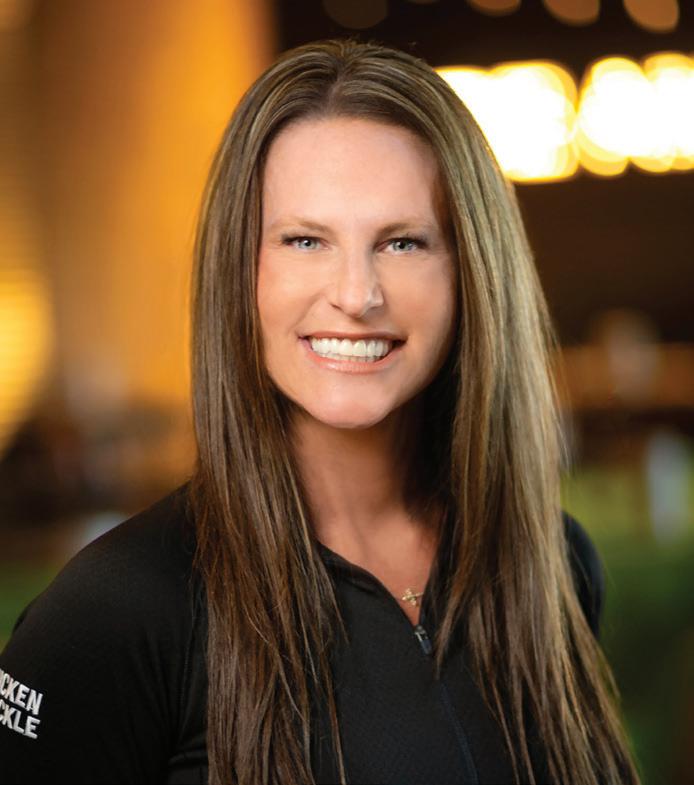
Chicken N Pickle’s community impact coordinators set it apart in the restaurant industry. Under Blackman’s leadership, she hires what she calls “caring hearts” to bridge internal and external communities at each location. Their sole mission is to use the restaurant’s property to serve a greater purpose.
“The essence of Chicken N Pickle is to cultivate a vibrant community through playful experiences, delicious food, and shared celebrations in a setting that fosters human connection and support for our neighbors,” Bartlow says. “Our impact coordinators communicate our values to customers in a tangible way, and their main goal is to go out and make their community a better place.”
Inclusivity is also central to the brand’s identity, which considers its broad audience a strength. Alldredge believes pickleball is for everyone, and she encourages her teams to create an environment where every guest feels welcome—like they’re in their best friend’s backyard, grabbing a bite and staying active.
For her, “all” truly means all.
“It’s not uncommon to see people ages 8 to 88 on our courts and at our tables.
“Every month, women in our company have an opportunity to join a call where we encourage open conversations about the challenges and successes our women-led teams face. We watch women-led TED Talks, listen to podcasts and welcome guest speakers,” Bartlow says. “We celebrate women on our teams—everyone from our pickleball pro athletes to our chefs and social media mavens. Diversity of thought strengthens our brand and helps us resonate with a broader audience.”
Alldredge echoes Bartlow’s sentiments. As more people experience Chicken N Pickle as a community staple—whether as employees or guests—she champions diversity, opportunity, and kindness.
“I believe women are strong, valuable, and can do anything they set their minds to. Everyone has their strengths, and the men on our team are allies through and through,” Alldredge says. “Mutual support is important. Our founder saw something in me, believed in me fiercely, and took a chance on me. I wouldn’t be where I am today otherwise.”
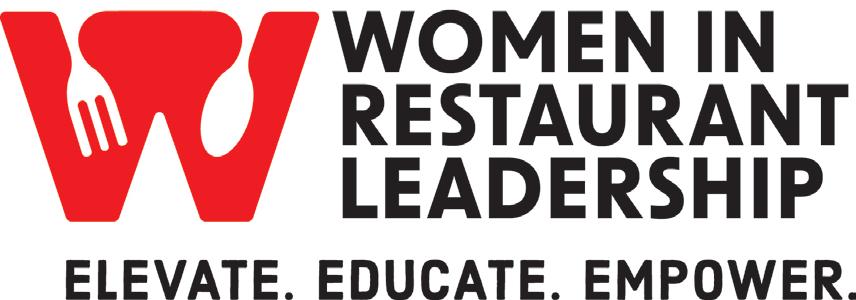
BY TALLULAH HAWLEY
As the 41-year-old brand continues to grow, Cantina Laredo digs into nontraditional locations for airport diners who want to expand their palates.
CANTINA LAREDO WAS FOUNDED at a time when Tex-Mex cuisine was gaining popularity across the U.S. in the ‘80s. The restaurant’s founder, Gilbert Cuellar Jr., created the brand with a subsequent mission—to deliver authentic and refined Mexican food north of the border. Though the brand was eventually acquired by Consolidated Restaurant Operations—which operates seven other full-service restaurants— Cantina Laredo never lost sight of Cuellar Jr.’s original vision.
HQ: Dallas, Texas
CUISINE: Modern Mexican UNITS: 13

FOUNDED: 1984 OWNER: Consolidated Restaurant Operations
David Wierman, now president of operations and a franchise consultant for Cantina Laredo, initially joined the brand in 1986 to pay his way through graduate school by waiting tables and bartending. In his current role, he leads and supports a team of general managers and their respective restaurant teams. “We keep evolving the food and we’re doing twists on traditional Mexican food offerings,” says Wierman.
He adds, “the best example on our menu would probably be the ahi tuna tacos, so you’re taking really traditional raw ingredients that you’d find in Mexican food, a crispy corn tortilla shell, guacamole, pickled onions, cilantro, jicama,
and we’re doing a twist with that—we put ginger in the jicama, chipotle pepper in the aioli, and sushi-grade ahi tuna, and we mix it with a Hawaiian poke sauce.”
Forty-one years later, Cantina Laredo still prides itself on its modern approach to upscale Mexican dining, elevating traditional Mexican dishes with unique twists. This concept also flows over to the bar program, with a large selection of tequilas and mezcals. “We’re always trying to focus on what the next cuttingedge flavor profile will be,” says Wierman, “so we have [cocktails and drinks with] passionfruit, mango, watermelon, pineapple, and blood orange. We’re always trying to push the envelope on menu ideation.”
With dozens of tequila brands available at every location, Cantina Laredo also hosts a quarterly tequila dinner. With a set four-course menu, fresh seafood and vegetables are paired with multiple tequila offerings. Seasonality plays a large role in this program, with a rotating list of fresh and local fruit and vegetable menu items depending on the month.
Today, Cantina Laredo has 13 total restaurants, spread out across Texas, Arkansas, Florida, Georgia, Minnesota, Missouri, and Virginia. The brand began franchising in 2003, and is split almost evenly between corporate-owned and franchisee-operated locations, with seven of the former and six of the latter. The first franchised location of Cantina Laredo opened that same year in Fort Myers, Florida, and is still in operation.
Similar to Wierman’s journey, Mike Flippo—now president of franchise operations—joined Cantina Laredo in its youth, starting out as a unit-level kitchen manager in 1988. He quickly moved up to general manager, then regional manager, then shifted to the franchising side of the industry in 1996, although the franchise program began seven years later.
After Flippo and the team were first approached by someone interested in operating a franchise location in Florida, they spent years fine-tuning their process so that it could be more easily replicable. Flippo proposed they “give it a shot and watch it very closely,” he recalls. “I saw the opportunity and I thought that there was a pretty good chance for expansion if we were successful, so I was very excited to make that switch over.”
In choosing a location, Flippo says, “we’ve been successful in downtowns and we’ve been successful in suburban markets. I think the big thing we look for is some good ingress and egress, daytime traffic, nighttime family traffic.” He also highlights the importance of the retailers near the locations, saying, “You want to be in a market where the people that are shopping [at nearby stores] are our clientele that are looking for this modern Mexican, just not your normal Tex-Mex restaurant.”
Wierman asserts that the key to maintaining consistency across all their locations is the people that make up Cantina Laredo. “We’ve got some really great people, from the kitchen to the front of the house to the managers that have been with the company a really long time,” says Wierman. “They are brand advocates and are passionate about Cantina Laredo—they love the food, they love the service, they love the regulars that come in. That really helps us maintain a high level of operations, just treating people the right way.”
tell us because they know us personally and they hold us to account.” When asked what year he joined Cantina Laredo, Watson refers to himself as a “newbie.” By newbie, he has been with the brand for 23 years, but he is the newest member of senior management in the organization.
Operating through COVID was rough for Cantina Laredo; it suffered several closures at previously popular locations that “evaporated right in front of us during the pandemic,” says Watson. “But, we’re back, we’re doing well. We have strong restaurants operating now, and we feel good about where we are.”
Recently, franchising has been the focus of the company’s future growth. Three new franchised locations have opened since 2021. In these markets where diners expect a higher-quality meal at a medium pricepoint, Watson notes that the bar menu aspect of Cantina Laredo may be polarizing to some groups, such as families in southern states. However, the main demographic of their diners are families coming in for a meal.
To promote their bar options, the team at Cantina Laredo hosts differently themed happy hour specials depending on the day of the week. For example, Thursday is “Ladies’ Night,” with discounted margaritas for women. Wierman says that the

“And they keep us honest,” adds Bill Watson, vice president of marketing. “If they see us making a boneheaded mistake, either an item or a price hike, they
happy hour program is “a great way to bring in different groups and provide a really great opportunity for people to get together, celebrate, and catch up.”
The brand’s newest location is inside Atlanta’s bustling Hartsfield-Jackson International Airport in Terminal T, marking Cantina Laredo’s first location in the state of Georgia. Owned and operated by franchisee Guillermo Perales of Georgia Airport Concessions, the space is 4,850 square feet and seats 134 guests.
Airport dining locations are competitive and highly sought after in today’s market, says Flippo, as they tend to perform very well. Cantina Laredo already has locations in Terminals D and B within Dallas Fort Worth International Airport, which opened in 2006 and 2015, respectively. In 2013, the brand opened in Dallas Love Field Airport, which has become the highest volume franchised unit systemwide.
“ATL is generating tremendous weekly sales volumes and is experiencing weekly sales increase over the previous weeks as more travelers through ATL are learning about it,” says Flippo. “We have been fortunate to partner with experienced airport operators who don’t try and reinvent the wheel. They recognize the value of the Cantina Laredo brand and focus their management teams on executing the brand standards.”

Barilla 13 barillafs.com
Belgioioso inside back cover 920-863-2123 belgioioso.com
Dalla Corte . . . . . . . .
. . 27 dallacorte.com/usa
Ecolab 25 800-352-5326 ecolab.com/LaborSavers
Ghirardelli inside front cover 888-402-6262 ghirardelli.com/professional
J&J Snacks .
10 jjsnackfoodservice.com/ requesut-free-samples
Malaysian Rubber 47 myrubbercouncil.com
McCormick Cholula 22 855-246-5852 shop.mccormick.com/collections/ cholula
McCormick McCulinary 9 800-322-SPICE McCormicksForChefs.com/ Crafted-Without-Compromise
Monin . . .
28, 29 monin.com
NorthAmerican Bancard 49 866-481-4604 NYNAB.com
Perdue back cover perduefoodservice.com
Progressive Commercial . . . . . . 3 888-806-9598 ProgressiveCommercial.com
Red Gold 17 866-729-7187 RedGoldFoodservice.com
Robot Coupe
800-824-1646 robot-coupe.com
Restaurant Technologies 37 rti-inc.com/control-costs
Stratas Foods
888-404-1004 stratasfoods.com
Tabasco
5 tabasco.com
Texas Pete . . . . . . . . . . . . . . . . . 19 TexasPeteFoodservice.com
Tork 43 torkglobal.com
Tronex 6 tronexcompany.com
VITOFryfilter 45 887-859-0398 vitofryfilter.com
BRANDED CONTENT
The American Egg Board 21 incredibleegg.org/fso
Eugene Drezner VP, BUSINESS DEVELOPMENT edrezner@wtwhmedia.com | (919) 945-0705
Amber Dobsovic NATIONAL SALES DIRECTOR adobsovic@wtwhmedia.com | (757) 637-8673
Edward Richards
NATIONAL SALES DIRECTOR erichards@wtwhmedia.com | (216) 956-6636
Tom Boyles
NATIONAL SALES MANAGER tboyles@wtwhmedia.com | (662) 607-5249
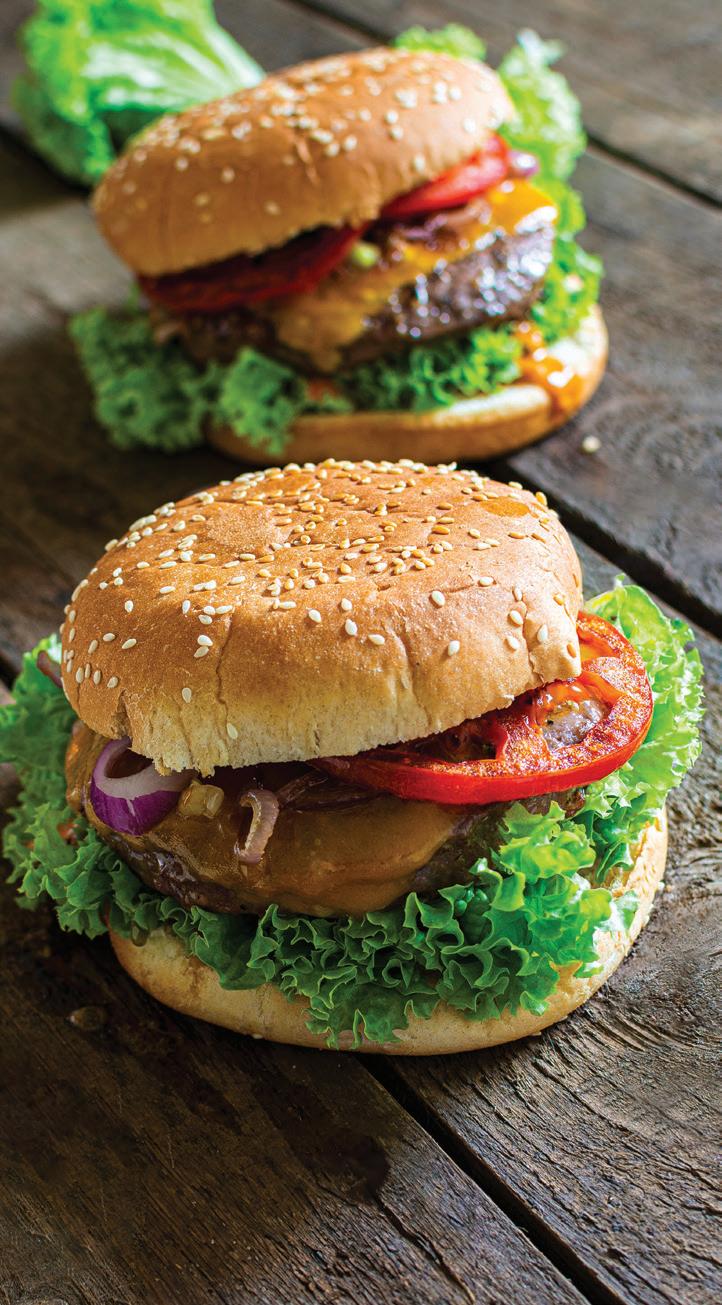


ROBERTA FRIERSON
Role: SVP, IT and Digital Strategy
Brand: Bar Louie
Locations: 48
Founded: 1991 HQ: Addison, Texas
After working for Chicago-based Lettuce Entertain You Restaurants for nearly 15 years, Roberta Frierson joined the Bar Louie team in late 2021 at senior vice president of technology and digital strategy, taking the reins of tech strategy and operations impacting 48 restaurants (31 corporate and 17 franchises) across the country.
FSR sat down with Frierson to find out how she utilizes data, AI, and authentic leadership to steer the brand into the future, and her advice for aspiring leaders in tech and restaurants.
BY CALLIE EVERGREEN

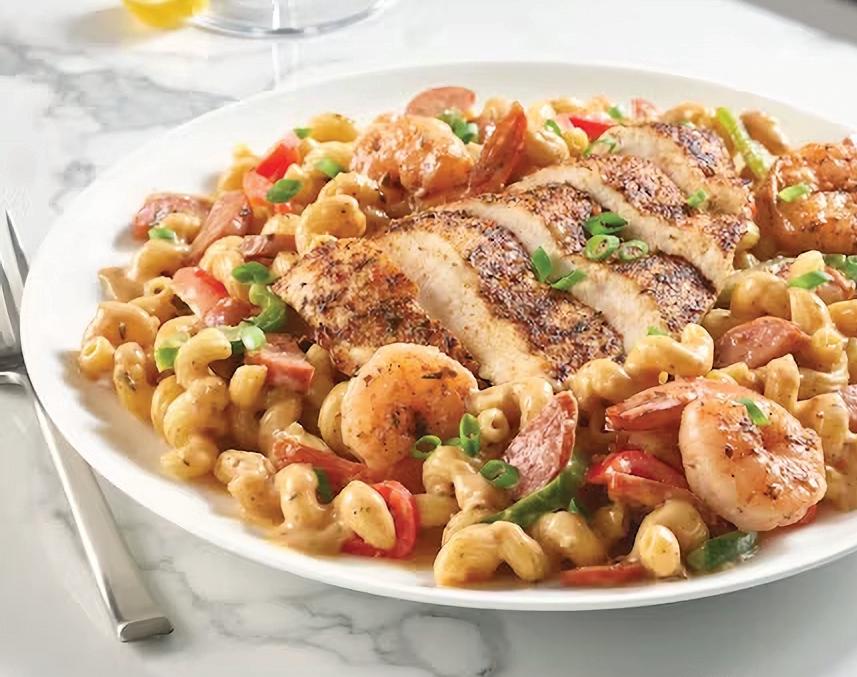
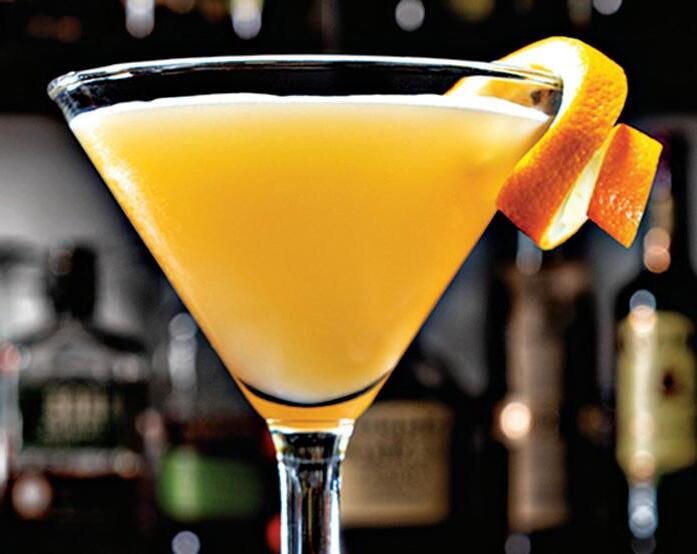
How do you use data to inform decisions?
There’s no reason for us to reinvent the wheel. We’re not doing anything new or revolutionary, so making sure we focus on providing the best guest experience using data insights. What value are we going to deliver? What does our rewards program look like compared to others in the industry? For my back-ofhouse operations, what can I do from a technology perspective to make your job easier? How am I going to get you out of that office and get you on the floor, engaging without customers? Is this something we can scale for growth, or are our tools stopping us from growing? We have to learn to be honest about that as technologists. We have to be good stewards of our tech stack and make sure we have a solid understanding of what are the problems we’re trying to solve, and do we have measurable and attainable KPIs.
How is Bar Louie using AI today?
For us, the best tool to use AI is to take all of our data and be able to extrapolate insights; to solve some of our marketing problems; to
solve for, what does the consumer want? We’re using AI in our marketing strategy so we can get creative out faster, and we can use data to make sure it’s resonating with our guests.
What’s your advice for young restaurant leaders, especially women?
For me, there are three pillars—the first one is to practice authentic leadership. Decide who you’re going to be early on, and then be that. In technology where collaboration and innovation are crucial to what I do, empathetic leadership is often what drives my success. The second thing is I have to be able to learn the art of delegation and become a master at that. I built a very strong team around me. When I empower others and take on the responsibility and the trust to lead, it’s a sign of strength. That last pillar is to own my own voice and my own expertise. Don’t be shy about speaking up. Trust your knowledge, contribute your ideas confidently. Don’t be afraid of what you don’t know. Don’t be afraid to ask questions, and don’t ever, ever forget there’s a reason why you’re at the table.
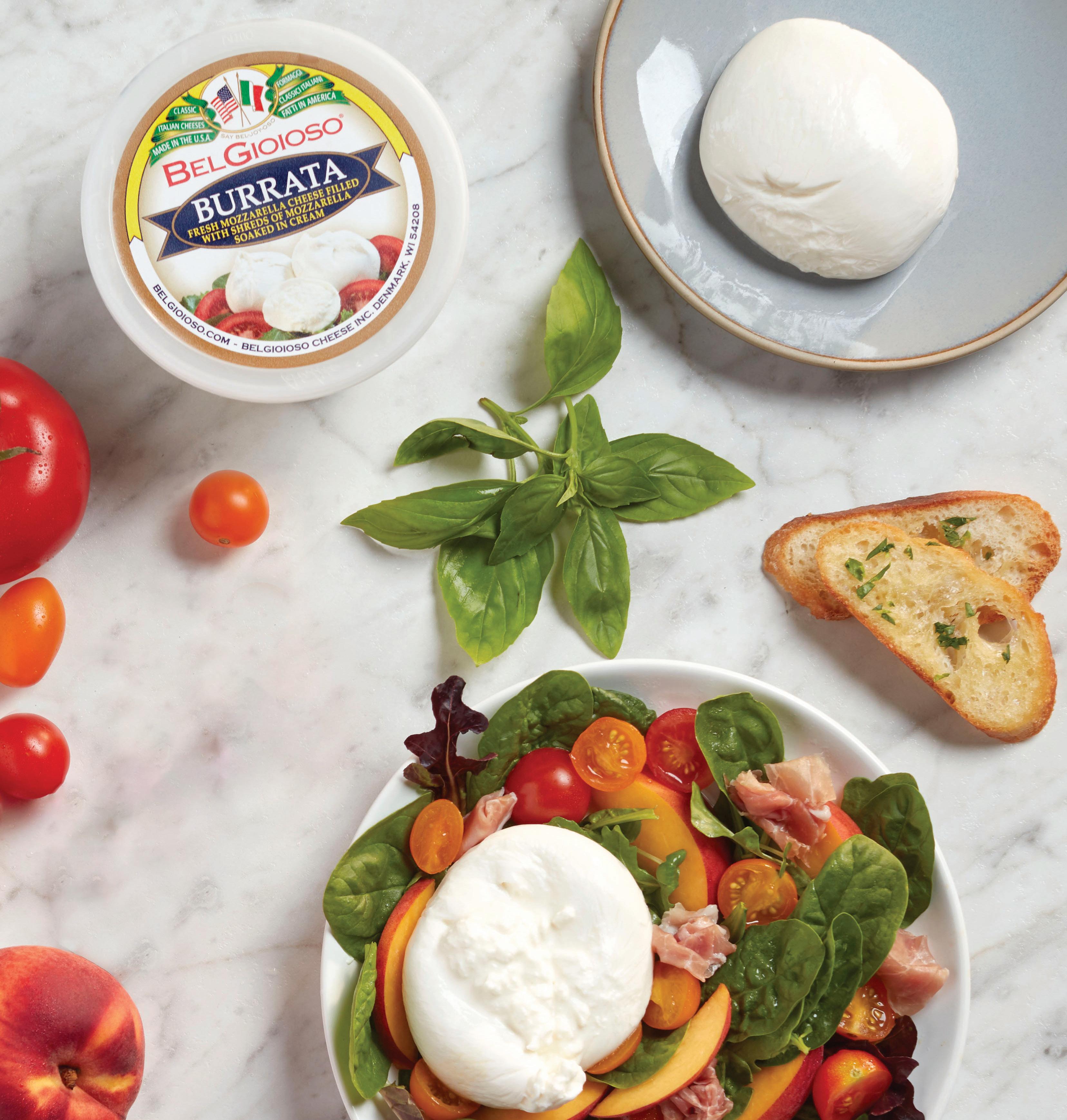



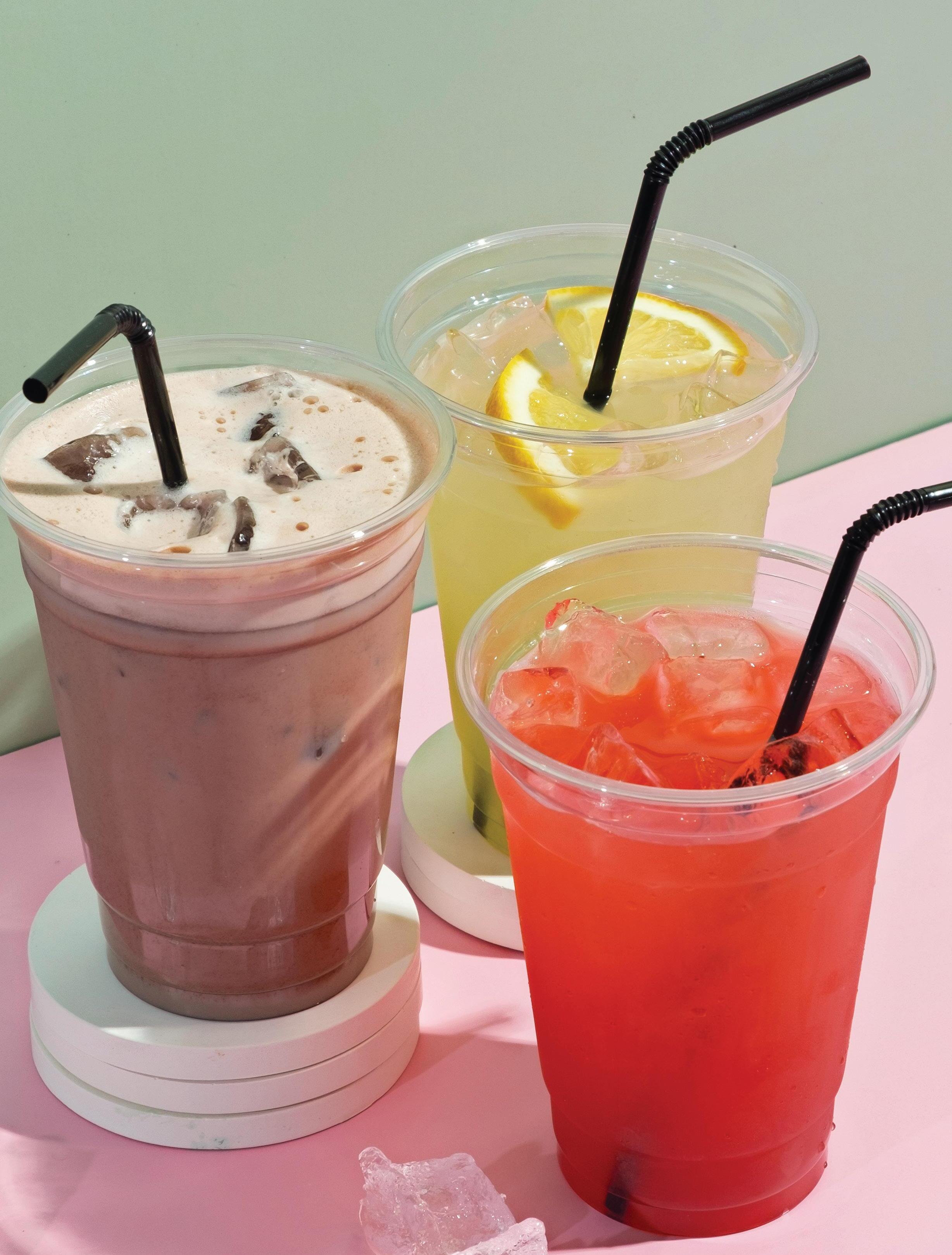

In the fast-paced world of coffee service, e ciency, quality, and customer satisfaction are paramount. e BUNN Premia® is a high-performance co ee brewer that is transforming the landscape of co ee preparation and service.
With Premia’s automated daypart management, it automatically grinds, brews, and manages freshness to ensure optimal co ee availability, seamlessly adapting to the ebb and flow of customer demand throughout the day. Using an intelligent reservoir management system, it schedules brewing to maintain the set fi ll levels in the internal So Heat reservoir. e system automatically monitors freshness and drains expired co ee and brews to refi ll the reservoir, so co ee is available for instant dispense during peak demand hours while reducing waste during slower dayparts.
Premia not only enhances the quality of co ee but also lightens the workload for sta . e machine’s design reduces the number of operator touches required each day. With features like liquid auto clean, large-capacity 3lb bean hoppers, and under-counter through-chutes for spent grounds disposal, Premia allows operators to focus on customers rather than being bogged down by operational tasks.
One of Premia’s standout features is liquid auto clean. is feature removes the reliance on sta to complete steps related to daily cleaning. Daily operator interaction consists of simply placing the cleaning shroud on the unit to automatically start the cleaning process. Liquid cleaner is stored internally, with an option to store additional liquid cleaner in an external container extending refi lls up to 30 days.* is technology ensures that the unit is cleaned daily with the proper cleaning solution for optimal performance.
Premia is designed for co ee lovers who crave excellence. Freshly brewed from whole beans, the brewer produces a drip-style flavor profi le characterized by excellent cup clarity and the absence of crema, making it an ideal choice for both hot and iced co ees. Push and hold dispense allows consumers to customize individual beverages with ability to mix and match coffee varieties.
Operators can rest easy knowing their BUNN equipment is professionally managed with comprehensive support throughout the entire equipment lifecycle. e BUNN Value Portfolio allows easy integration of equipment with both BUNNserve® and BUNNdigitalTM. BUNNserve® provides the capabilities to cover the equipment’s lifecycle through logistics, installation, planned maintenance, reactive service, and removal and recovery.
e BUNNdigital platform combines equipment and service with systems and applications to enable customers with increased eciencies in labor, maintenance, and service. Overall, the BUNN Value Portfolio provides the customer with a complete program partner with expertise in beverage dispensing and a focus on equipment, service, and digital solutions.
Premia is more than just a co ee brewer; it’s an innovation in the co ee service industry. By combining automated management, exceptional brewing technology, and an emphasis on customer experience, Premia sets a new standard for operators aiming to excel in today’s competitive market.

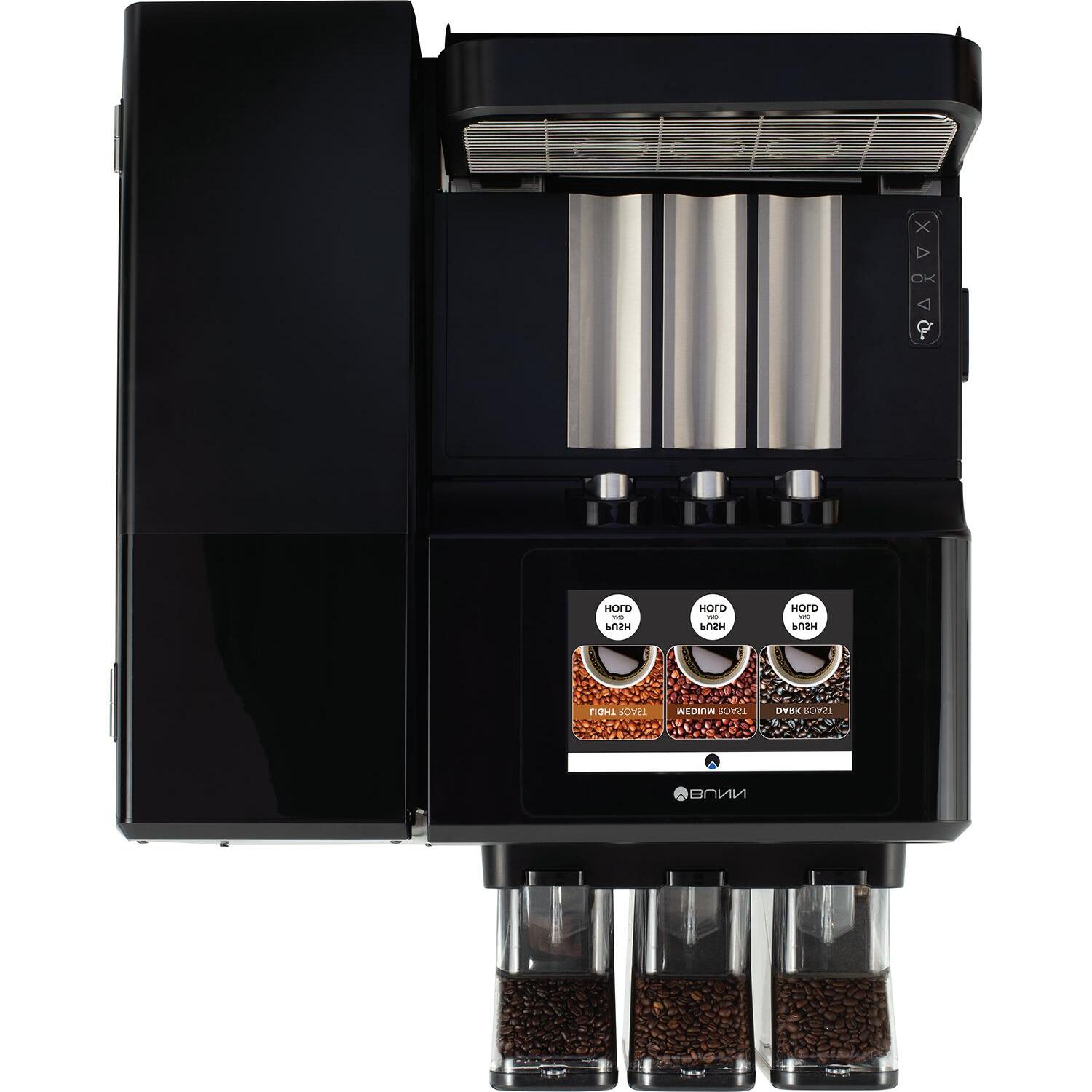
The simple strategy that drives beverage sales and improves guest experience.
Running a successful quick-serve restaurant involves more than just delicious food and e cient service. In today’s competitive market, creating unique and tailored customer experiences is essential for distinction and customer retention. To thrive, businesses must cra immersive dining experiences that not only satisfy but also delight visitors, encouraging repeat visits and positive word-of-mouth recommendations. Achieving this requires a comprehensive approach that seamlessly blends various elements, starting with a deep understanding of the target audience.
Identifying the ideal customers allows for personalized o erings tailored to their preferences. Whether catering to millennials in bustling urban settings or families seeking convenience in suburban areas, cra ing the right ambiance is crucial. Sta plays a critical role in creating a welcoming atmosphere and driving customer satisfaction.
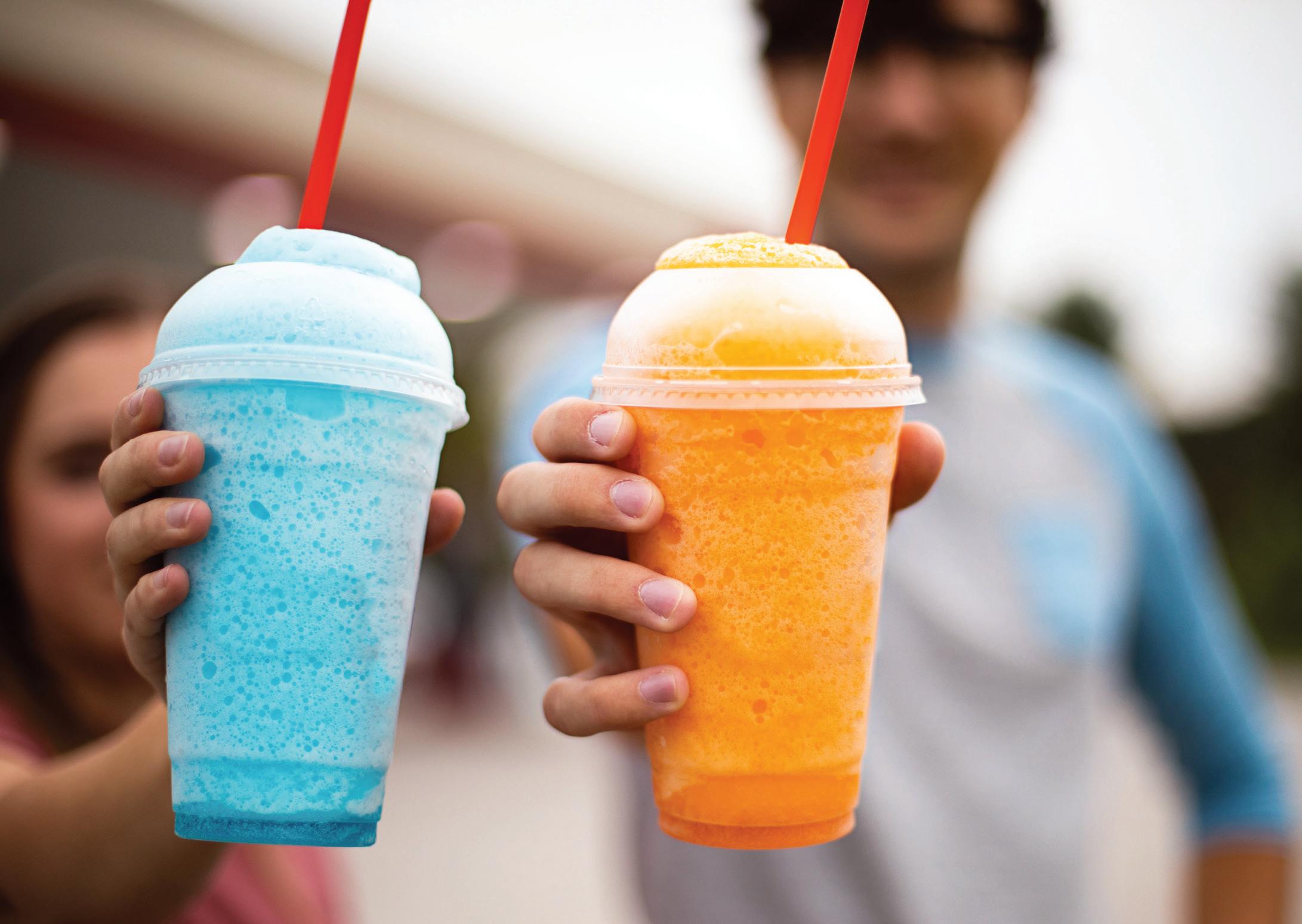
Additionally, the variety and quality of food and beverages can significantly impact foot tra c and ticket sales. In the realm of beverages, frozen drinks have emerged as sought-a er treats, o ering unique and indulgent experiences not easily replicated at home. FBD works with restaurant owners to customize their equipment to serve a wide variety of refreshing frozen drinks, including carbonated, uncarbonated, and nitro-infused, to ensure that product o erings align with customer desires.
FBD’s machines allow for frozen beverage flavors to be changed at any time to meet changing consumer demand and market trends. In addition to o ering a wide selection of flavors and combinations, FBD’s equipment has self-service capabilities that enhance the instore experience by allowing customers to cra their unique frozen beverage. e machines are designed for easy cleaning and maintenance, ensuring maximum uptime and reliability without extensive labor. Unlike others requiring frequent disassembly, FBD machines
o er hassle-free cleaning, requiring only annual maintenance. With FBD equipment, the sealed interior environment means sta only needs to clean the machine once a year, eliminating costs from daily labor and ensuring consistent product quality.
When equipment is easy to operate, business owners don’t spend nearly as much time or money on training and expenses are minimized, making routine maintenance easier and faster. Expect higher customer loyalty and repeat sales when equipment is easy and enjoyable to use by consumers.
With a focus on a customizable experience, welcoming ambiance, and innovative beverage o erings, quick-serve restaurants can propel their business to greater success in today’s competitive market. By prioritizing customer satisfaction and continuously seeking ways to improve and innovate, you can create a dining experience that keeps customers coming back for more. ◗

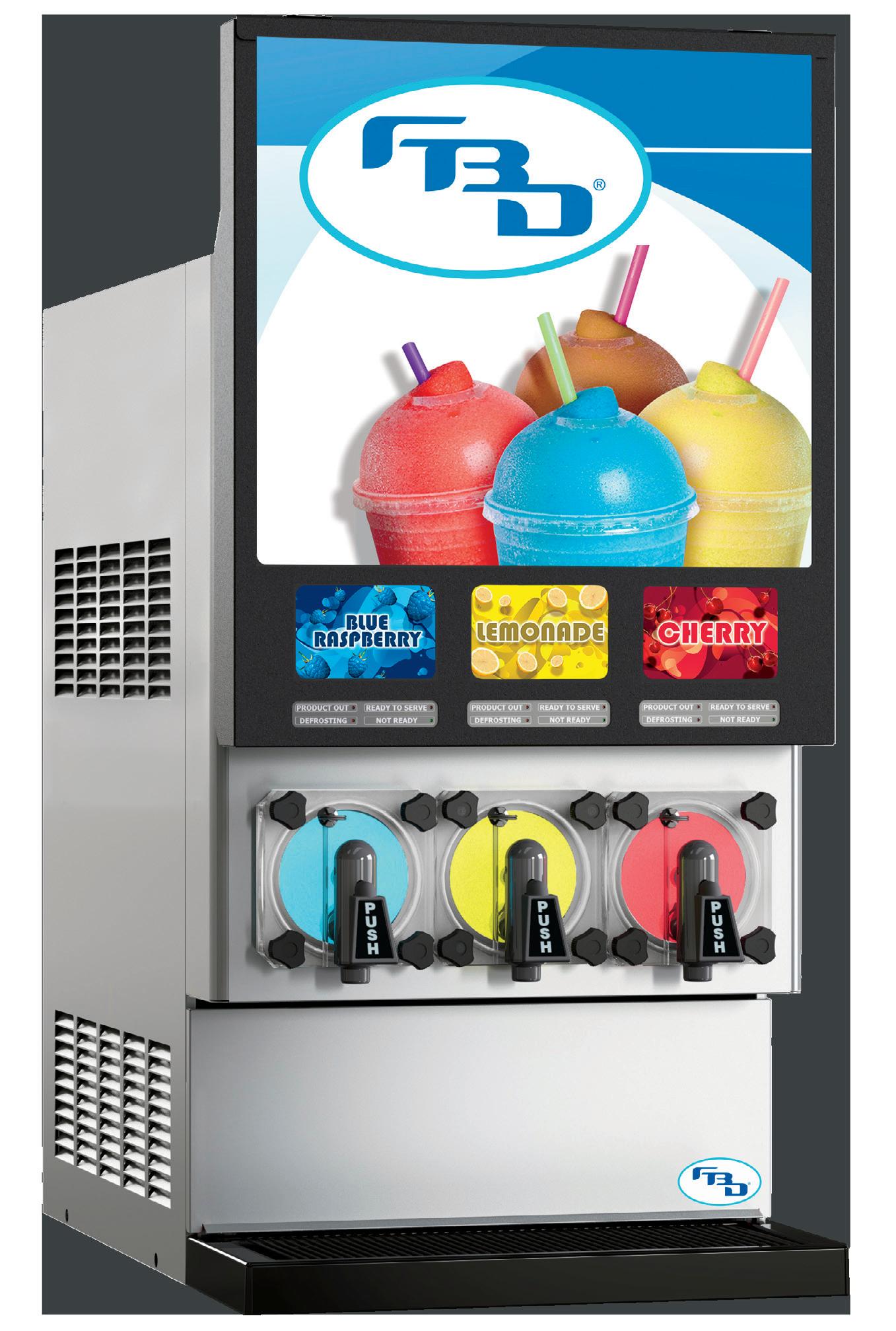

Frozen beverages are highly profitable up to 80% gross profit, given that they are mostly made up of CO2 & water.
The use of a closed sealed system, in conjunction with bag in the box technology (BIB), means no product mixing or daily disassembly to clean.
Our machines are designed to help your customers create unique and personal experiences, while ensuring excellent product quality and consistency.
FBD dispensers are engineered to make a frozen drink quickly and with minimal labor easy to execute and minimal labor- no product mixing or blending.
Improve efficiency in beverage programs to drive consistency.
In an industry where speed and consistency are key, foodservice operators are turning to streamlined beverage solutions to meet growing consumer demand. Red Diamond’s OmniBrew™ beverage program is helping operators o er variety while improving eciency and ensuring consistent flavor across operations.
With labor shortages and rising costs, solutions that simplify back-of-house operations are in high demand. Red Diamond’s OmniBrew program o ers multiple drink options using a single machine. “Operators are looking for ways to simplify processes without sacrificing quality,” says Emily Wood Forehand, executive vice president of Red Diamond.
e OmniBrew program accommodates an array of Red Diamond products, including its Simple Sweet Tea® line, Simple Sweet™ lemonades, and fresh-brewed iced coffee. One of the benefits of the Simple Sweet line (both teas and lemonades) is that the sugar is pre-measured in a fi lter pack with the product, so it is perfectly sweet. Every glass...every time.
From classic unsweet tea to fl avored varieties like watermelon tea and blackberry lemonade, this program allows operators to cater to diverse customer preferences, creating more opportunities for customization and repeat visits.
In addition, the program gives operators the ability to enter the iced co ee category without an additional equipment expense. “Cold co ee beverages are no longer just a trend—they’re an expectation,” Forehand notes. “Operators who can o er high-quality iced co ee with minimal e ort are positioned to a ract repeat customers.”
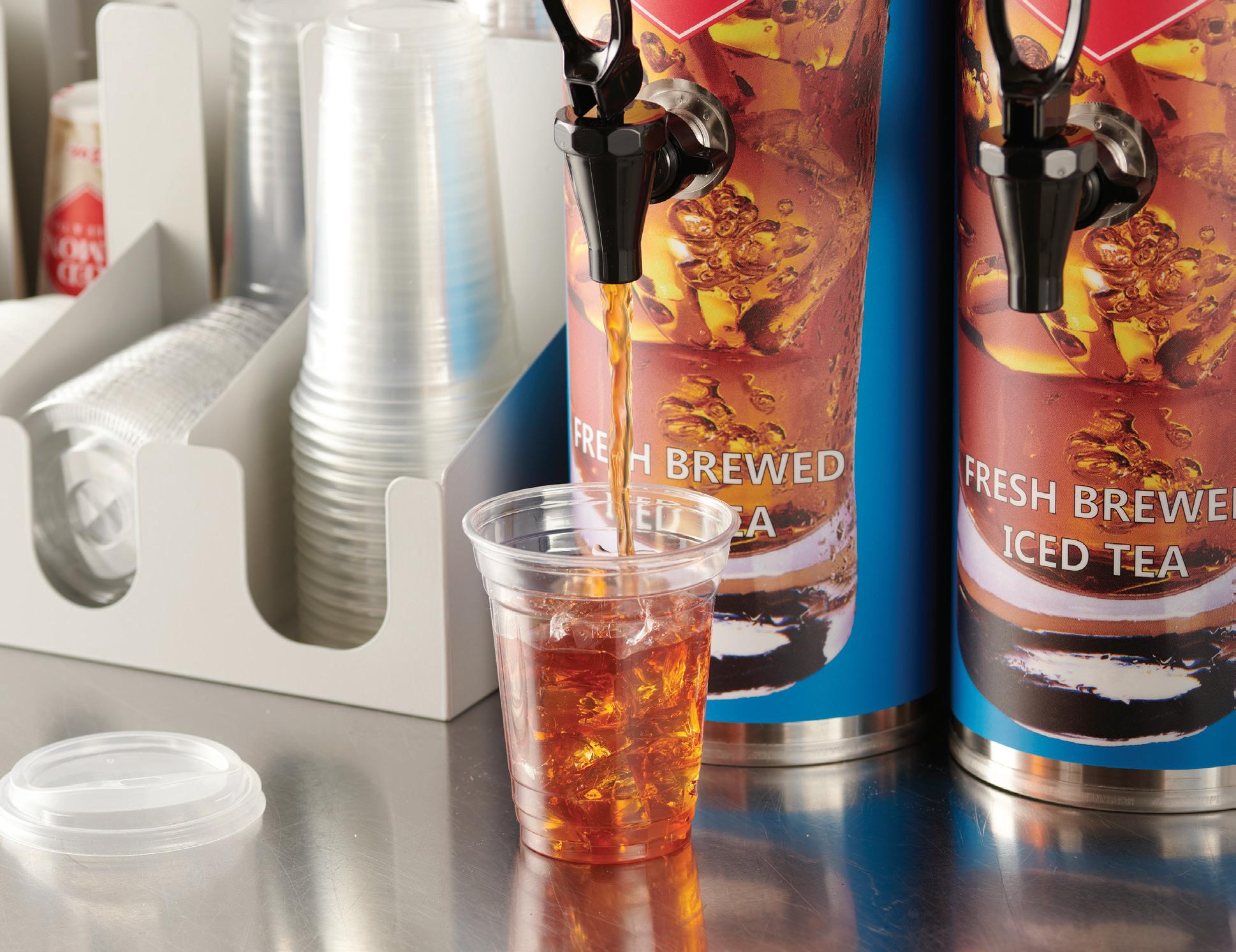

By leveraging existing brewing equipment, Red Diamond is helping operators save labor, simplify operations, and deliver consistent quality.
e OmniBrew program is designed to improve workflow and increase customer satisfaction. “When customers know they can expect the same great fl avor every time, they’re more likely to keep coming back,” Forehand says. With five generations of expertise, state-of-the-art roasting technology, and a commitment to quality, Red Diamond continues to be a trusted partner for foodservice operators looking to optimize their beverage programs. As consumer demand for premium iced drinks grows, innovations from beverage partners focused on smart solutions will help businesses stay ahead of the competition. ◗










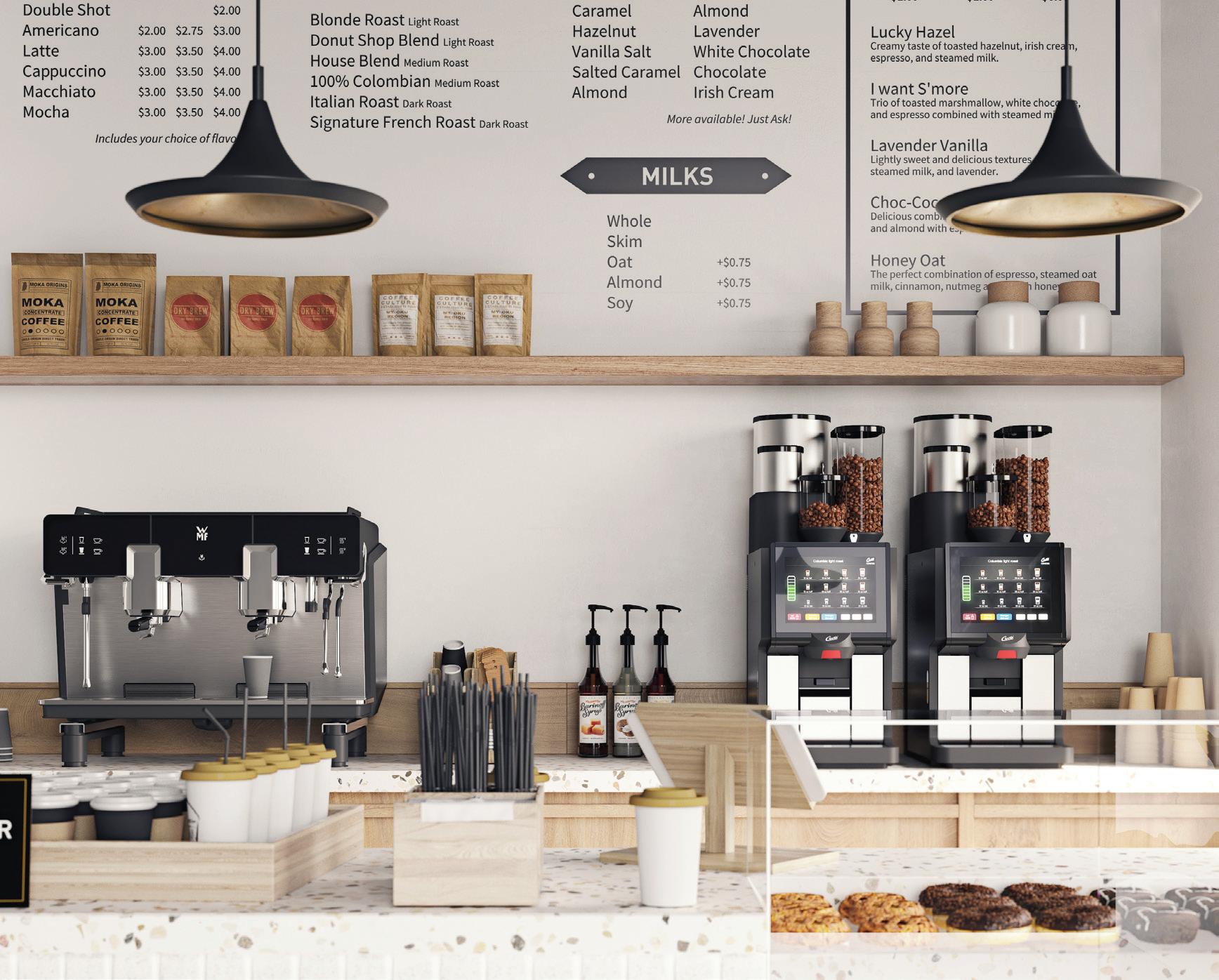
According to worldbank.org, “Arabica coffee prices surged by 13 percent in December, marking a year-over-year increase of over 60 percent. Robusta prices also rose by 5 percent, with prices more than doubling compared to the same period last year.” As global coffee prices climb, so do the stakes for operators. In today’s climate, waste isn’t just a nuisance—it’s a major cost factor.
Take this example: a co ee shop selling 200 cups per day may be discarding up to 25 percent of their brewed co ee. Over a year, that amounts to approximately $5,840 in lost product—that’s the equivalent of more than 18,000 brewed cups. In an era where every ounce ma ers, waste like this can severely impact an operation’s bo om line.
As operators contend with rising co ee prices, many are reevaluating how co ee is brewed, served, and maintained. Traditional brewing practices o en produce more than what’s needed, particularly during slower dayparts or unpredictable tra c pa erns. As a result, surplus co ee ends up down the drain. By switching to automated


brewing systems, operators can be er control output and reduce excess.
Brewing only what’s needed—when it’s needed—ensures freshness while protecting margins. is method also helps support sustainability goals by minimizing the strain on the co ee supply chain.
As operators look to retain and grow their customer base, consistency and quality remain key. With prices on the rise, customers expect more—especially when it comes to their daily co ee ritual. Automated systems eliminate the variability that can come from manual brewing, ensuring every cup meets expectations.
“Rising co ee prices don’t have to raise your stress,” says Adam Pobiner, Director of Strategic Sales at SEB Professional. “Automated equipment solutions are built to help operators stay profitable and deliver exceptional co ee, even when the market isn’t cooperating.”
Automation also aligns with what ma ers most to today’s consumers— quality, speed, and sustainability. By reducing waste and maintaining consistency, operators can enhance the guest experience while managing costs.
While equipment is a powerful tool, success in today’s market requires the right partner. Four brands—Wilbur Curtis, Schaerer, WMF, and La San Marco—one company: SEB Professional. is allows SEB Professional to be a partner who has the resources and knowledge an operator needs to create a custom co ee experience for their customers—no matter the size of an operation.
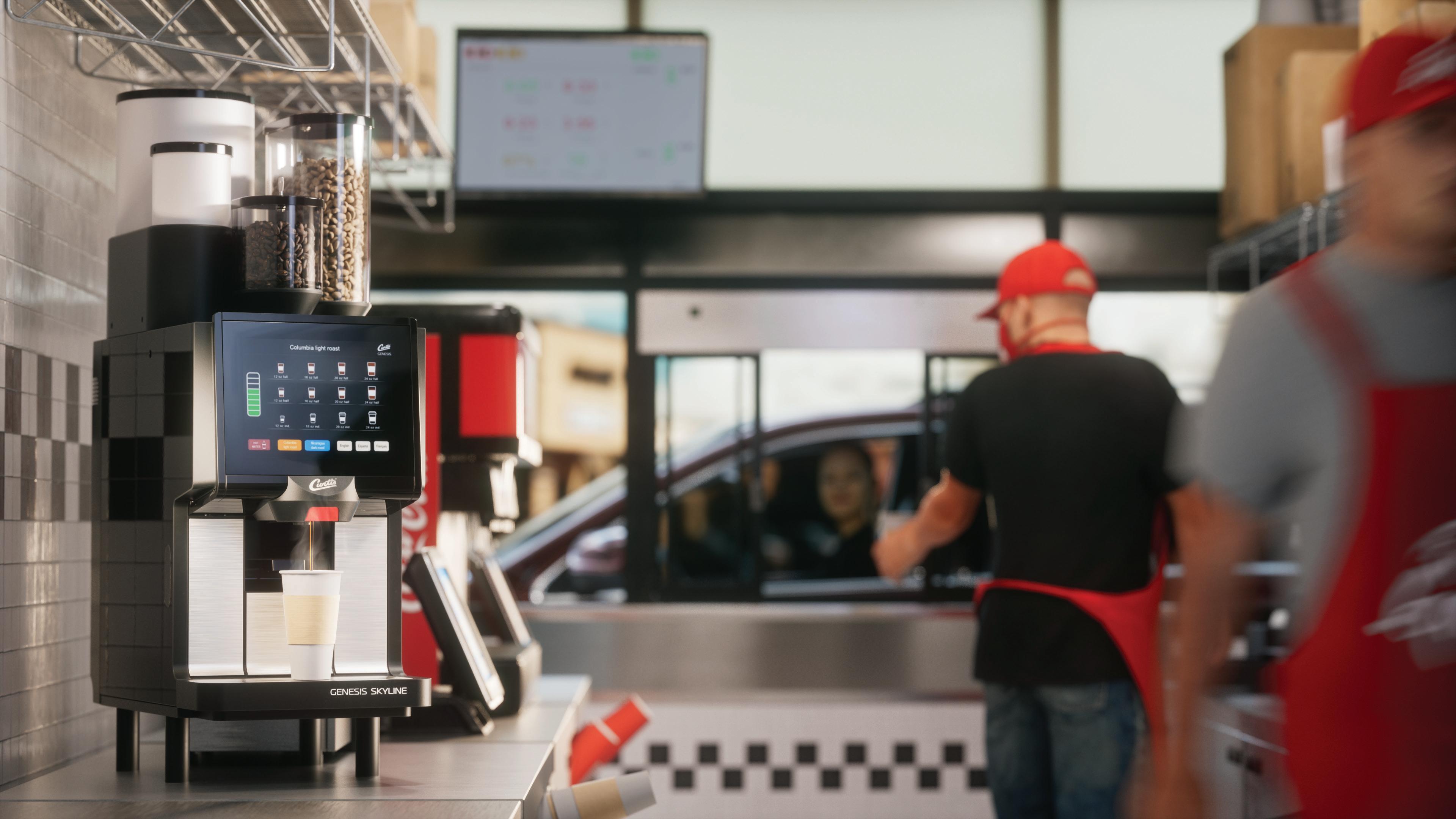

The New York Times recently reported that “wholesale coffee prices are trading near a 50-year high because of shortages related to extreme weather and increased global demand.”
As coffee prices rise, brewing smarter isn’t just a good idea - it’s essential.
At SEB Professional, we help you navigate today’s coffee challenges with equipment that is designed for precision and consistency. With automated brewing, you can reduce waste, control costs, and deliver quality in every cup - even as market pressures rise.
VISIT US AT THE NATIONAL RESTAURANT ASSOCIATION SHOW BOOTH 4441 | CHICAGO IL | MAY 17-20

How operators can offer more with less in 2025.
When trendy beverages come up, what do consumers think about? And are operators serving them? Beverages like dirty soda, boba, and smoothies are currently trending, with a recent consumer survey revealing that 94 percent of respondents aged 20–29 had purchased a boba tea in the past three months, according to CLSA. But the commonality between these drinks—aside from their visual appeal— is their ability to be customized.
Customization can be risky for operators, who may overstock certain syrups, milks, or boba options and face higher waste. is is why partnering with a full-solution provider is vital for operators. Larger, comprehensive vendors can take on more risk and advise operators on what trends best fit their menu and consumers while increasing profits.
“More SKUs doesn’t always mean more sales—it can mean more complexity and waste,” says Laurie Winward, vice president of R&D and innovation at Sunny Sky Products. “We focus on maximizing profitability within the space operators have.” is approach is key in 2025, as most operators a empt to reduce costs. According to TouchBistro’s 2025 State of Restaurants Report, 38 percent of operators are trying to reduce food waste to control costs, while 40 percent are seeking more cost-competitive vendors. However, cu ing costs does not mean eliminating customization and trendforward options for consumers.
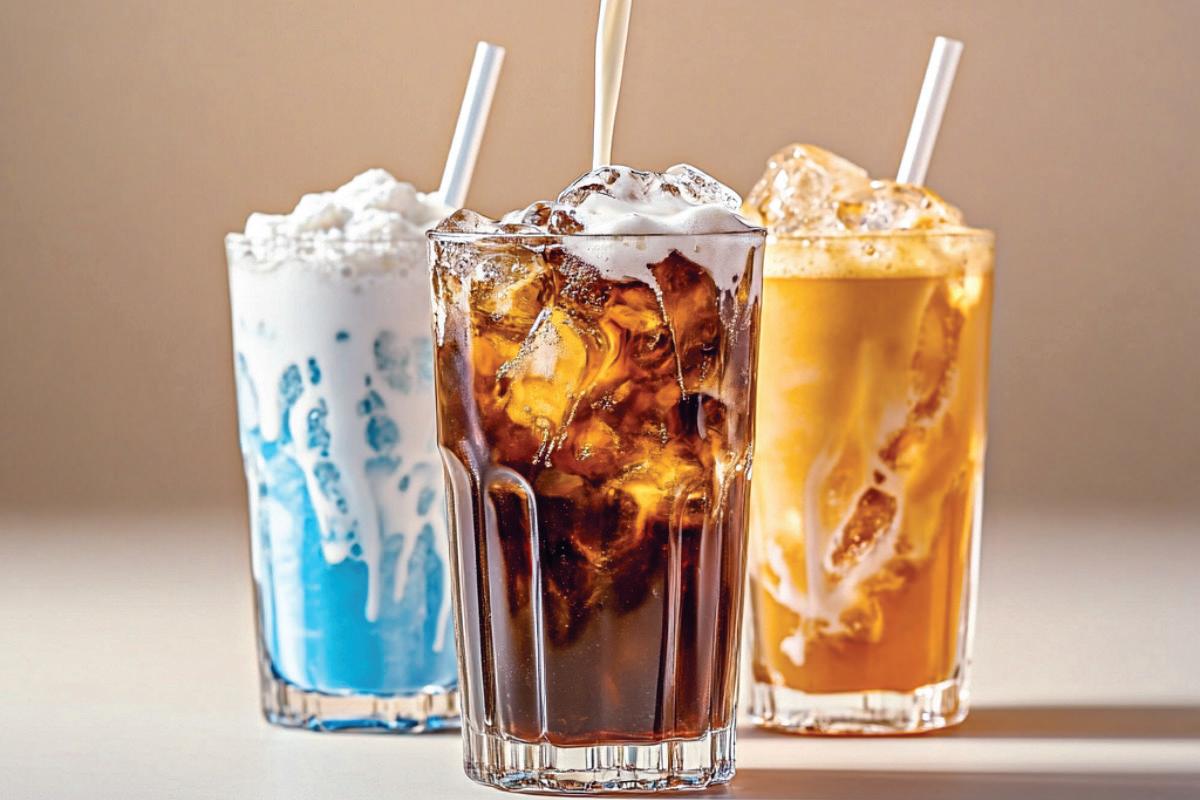
“38 percent of operators are trying to reduce food waste to control costs, while 40 percent are seeking more cost-competitive vendors.”
Sunny Sky Products helps operators integrate trendy beverages into their menus in the most cost-e ective way. “Customization is now an expectation, not a novelty,” says Isabel Atherton, vice president of marketing for Sunny Sky Products. “At fi rst, consumers were surprised to see boba or unique fl avor options at quick-service restaurants, but now they expect it everywhere.”
“Most quick-service restaurants already have a fountain unit, so making dirty sodas is just about adding a few syrups and a creamer,” Atherton says. “With just three bases and six fl avor shots, we created 20 di erent recipes in seconds.”
Sunny Sky Products is unique in its comprehensive solutions for operators. With dirty sodas, Sunny Sky Products can experiment with major soda brands and curate the best fl avor combinations
for any menu. Sunny Sky’s UPOURIA brand helps operators customize dirty sodas and boba o erings with both flavored and functional syrups, as well as milk and creamers— the key to the beautiful ombre e ect dirty sodas are known for.
Another vital aspect of customization is addressing consumers’ growing health and wellness concerns. “Consumers expect authenticity, transparency, and healthfulness—even in indulgent drinks,” Winward says. “ at means operators need to balance indulgence with real ingredients and clear labeling.”
With Sunny Sky Products’ Dr. Smoothie ADDins like greens and proteins, smoothies can be easily enhanced to meet consumers’ health goals and o er an ideal way for operators to expand menu o erings.
As beverage trends continue to evolve, customization remains a driving force in consumer demand. However, operators must balance variety with cost e ciency to avoid waste and complexity. By partnering with a full-solution provider like Sunny Sky Products, quickservice restaurants can seamlessly integrate trendy drinks like dirty sodas, boba, and smoothies while maintaining profitability.
-By Ya’el McLoud
Discover how Sunny Sky Products can help transform your menu at



Soft and delicate, with a slightly sweet, milky flavor, BelGioioso Burrata is made with hand-crafted Fresh Mozzarella filled with Stracciatella, a mix of soft mozzarella shreds and sweet cream.
Enhance your menu by creating a new, fresh Burrata salad with fruit, tomatoes and prosciutto. Or enrich your pizza or pasta by topping with a garnish of this fresh, creamy cheese just before serving.


Available in 2 oz., 4 oz. and 8 oz. Burrata balls, 4 oz. balls with Black Tru es, and 8 oz. and 1 lb. Burrata Filling (“Stracciatella”).
For more info and samples, please contact: foodservice@belgioioso.com 877-863-2123

belgioioso.com/Foodservice





